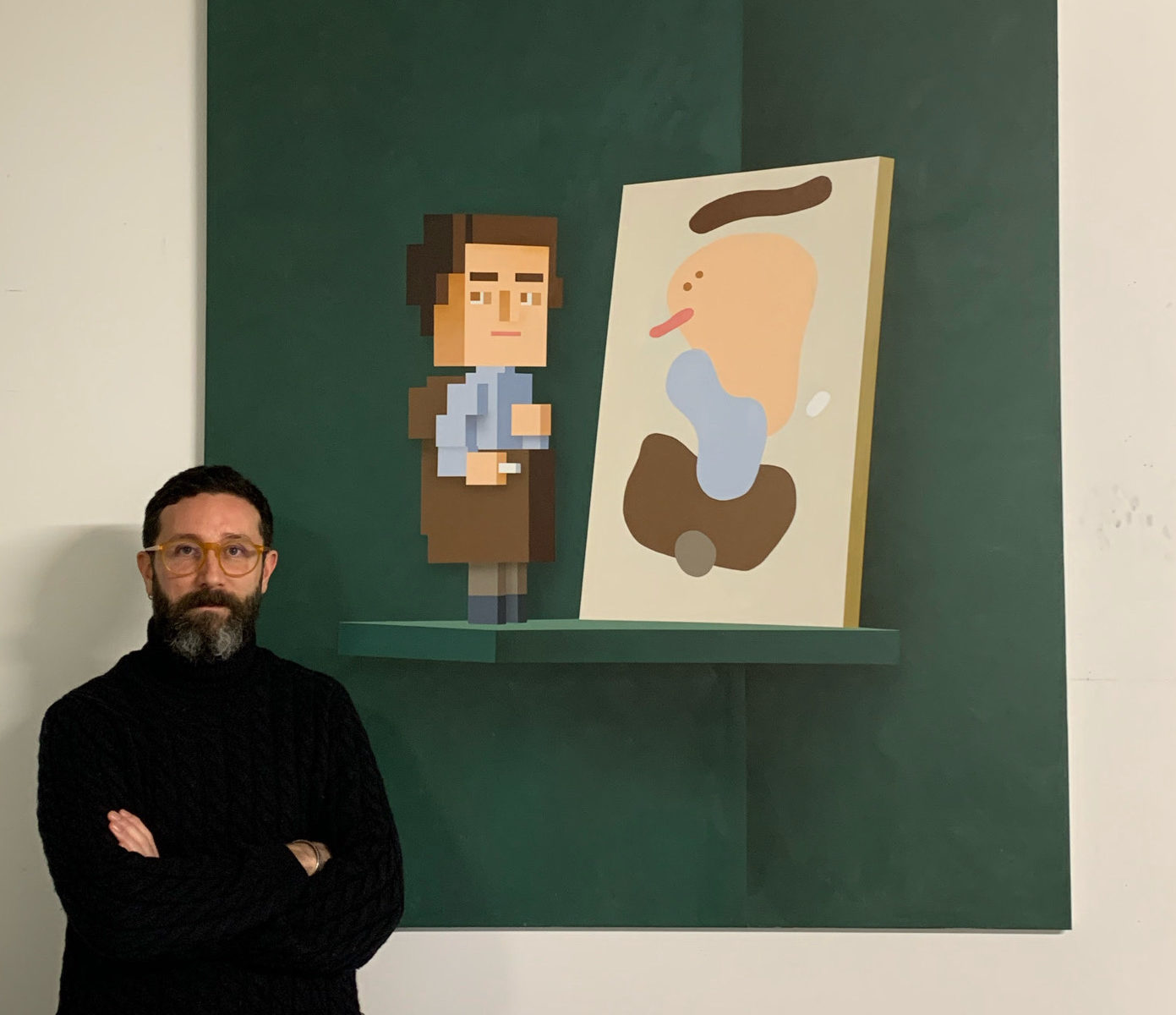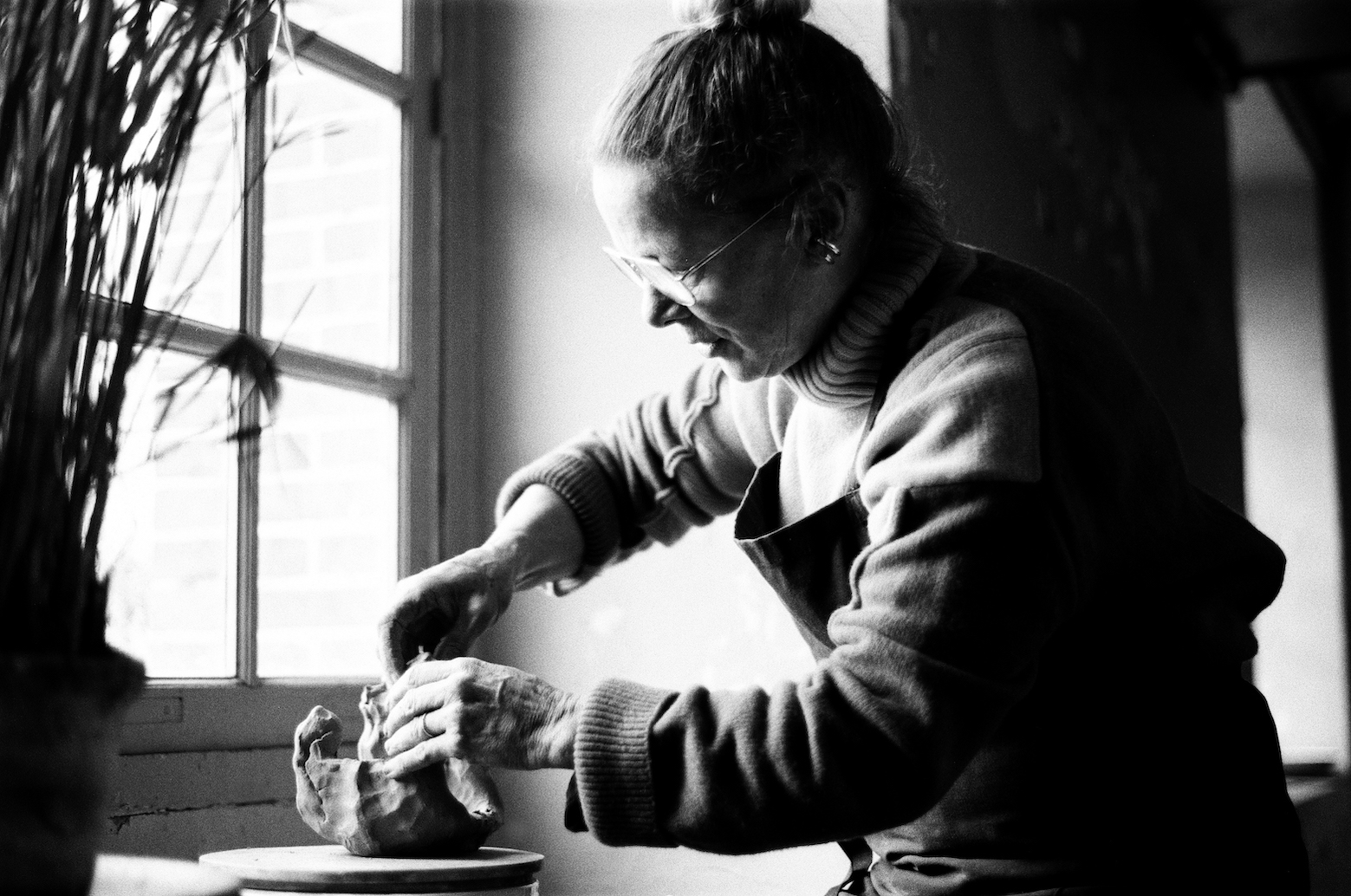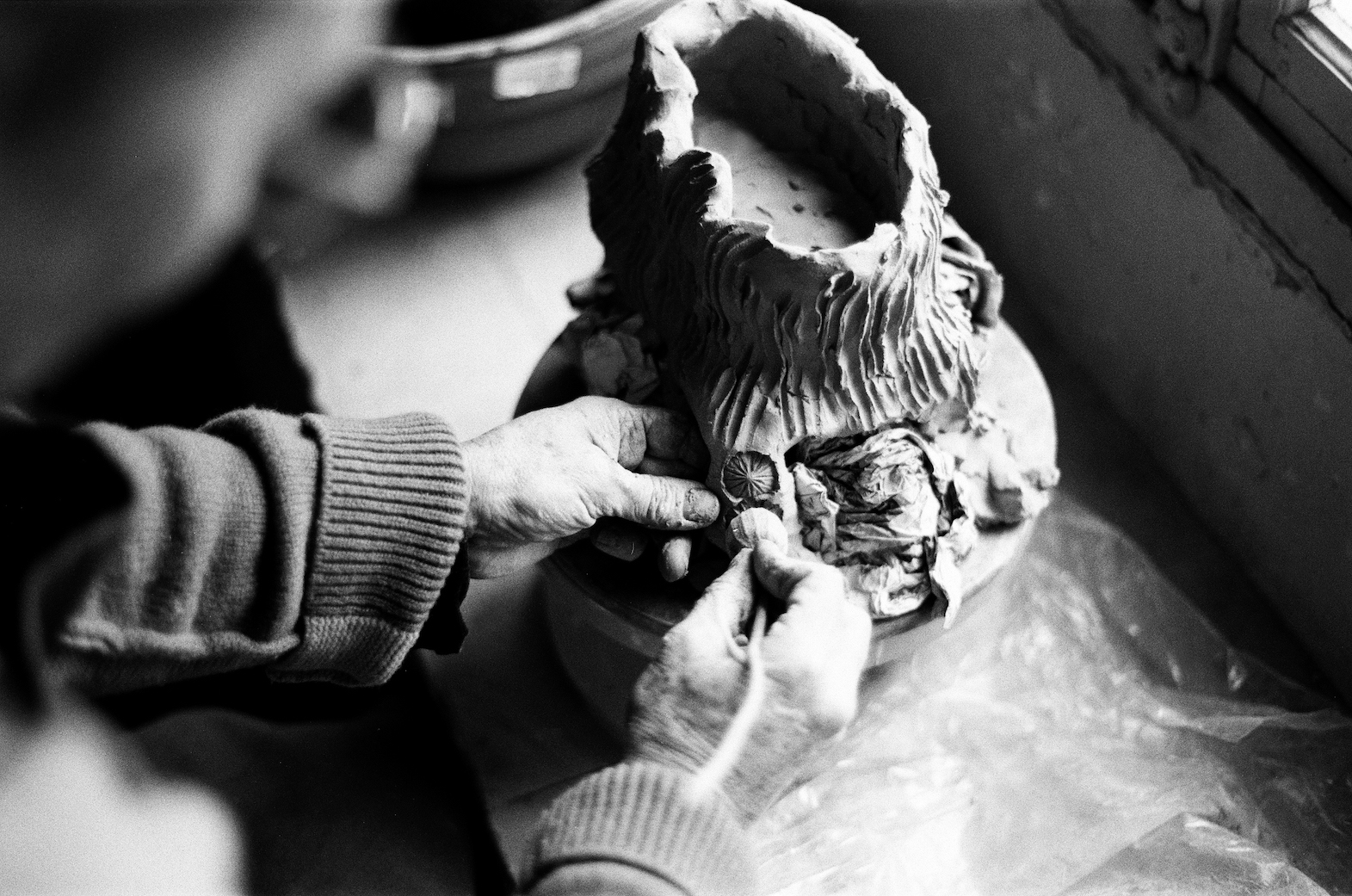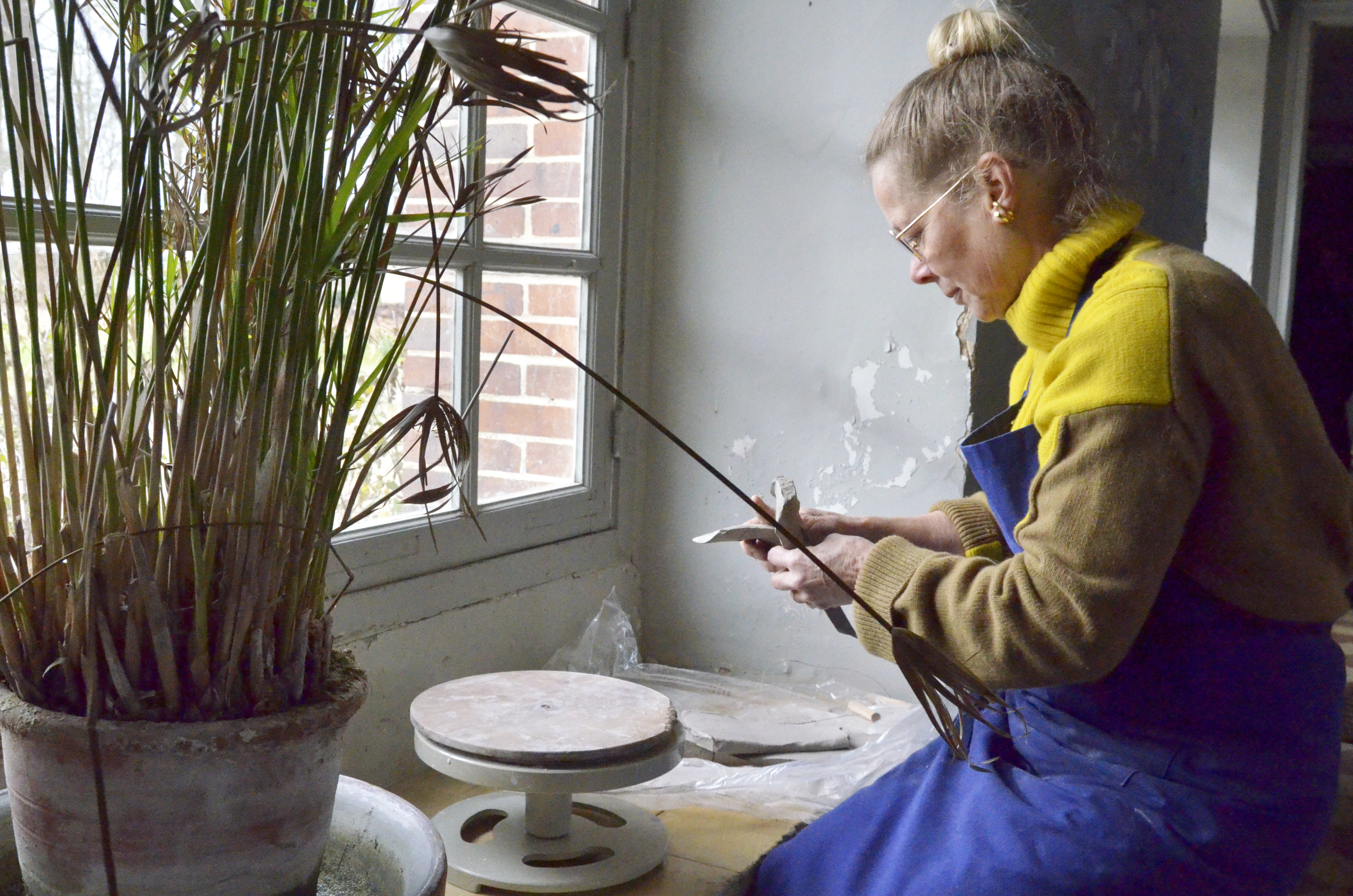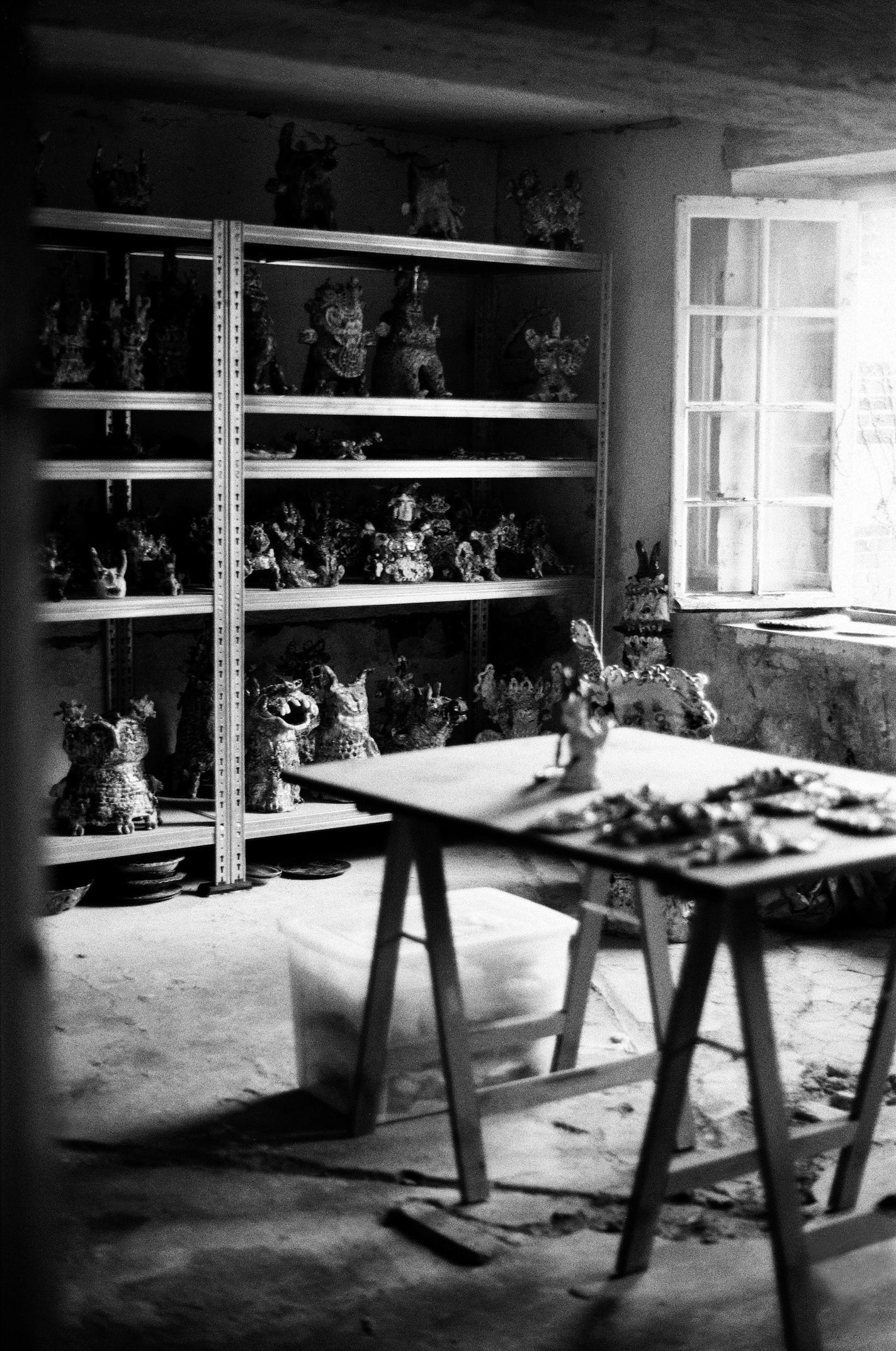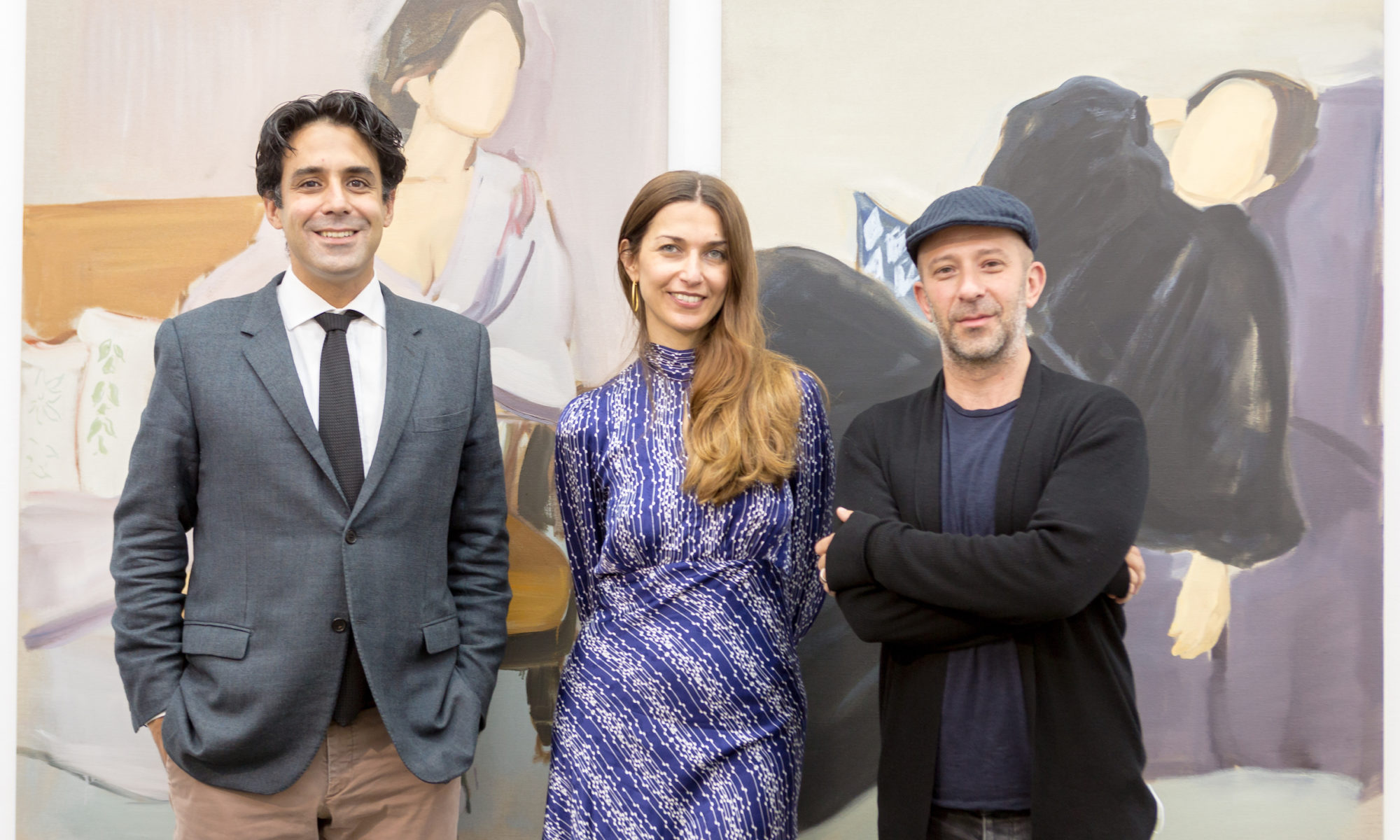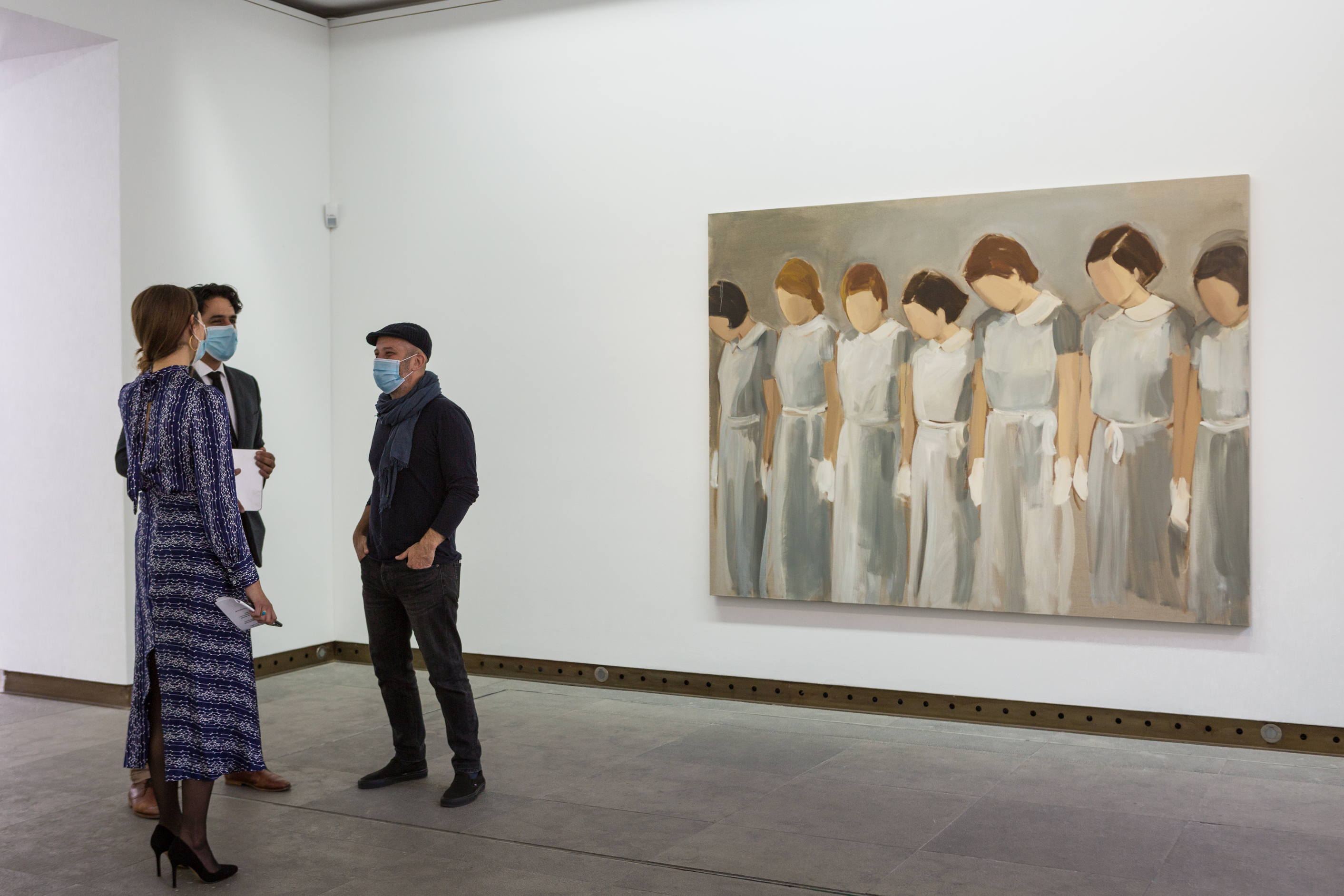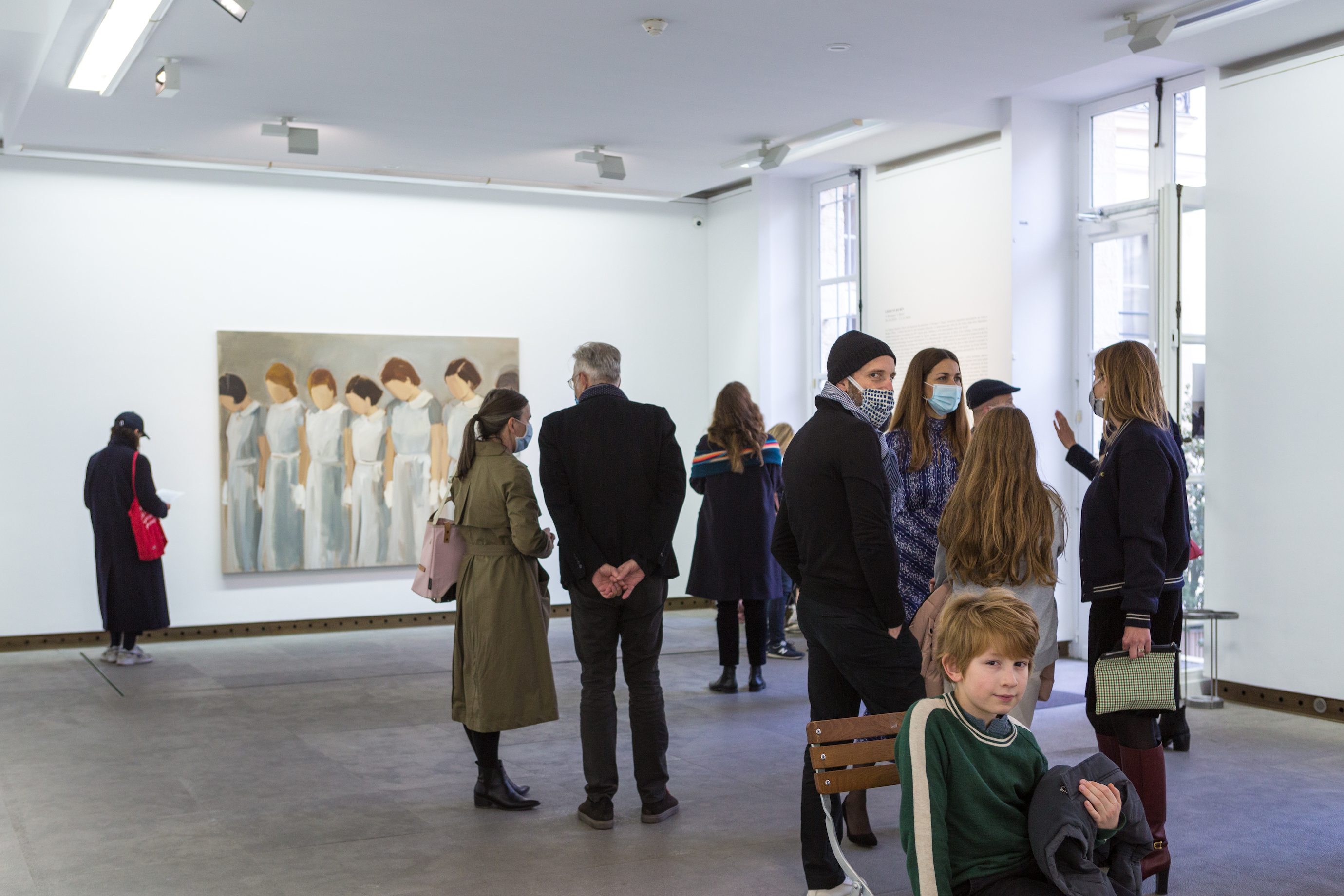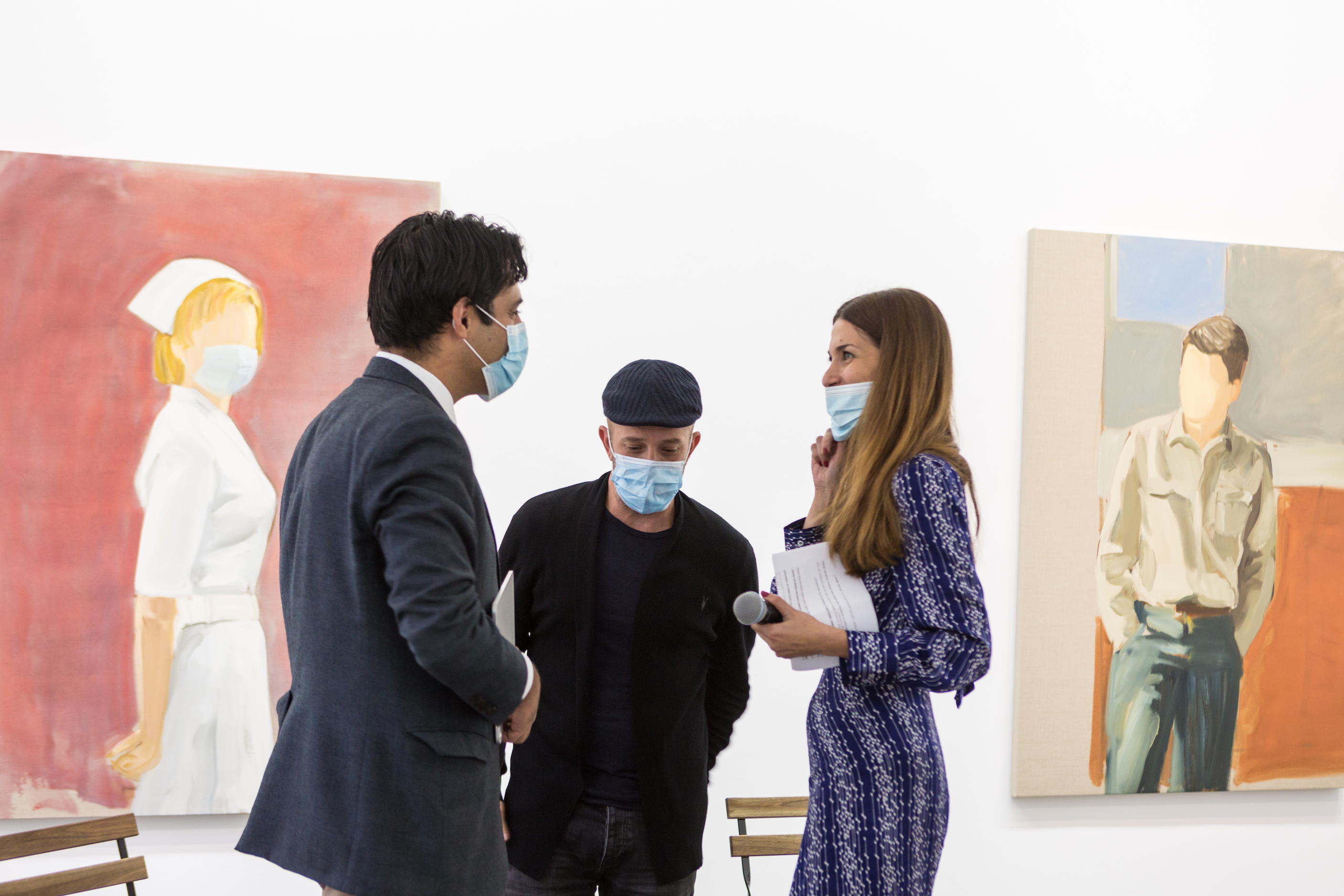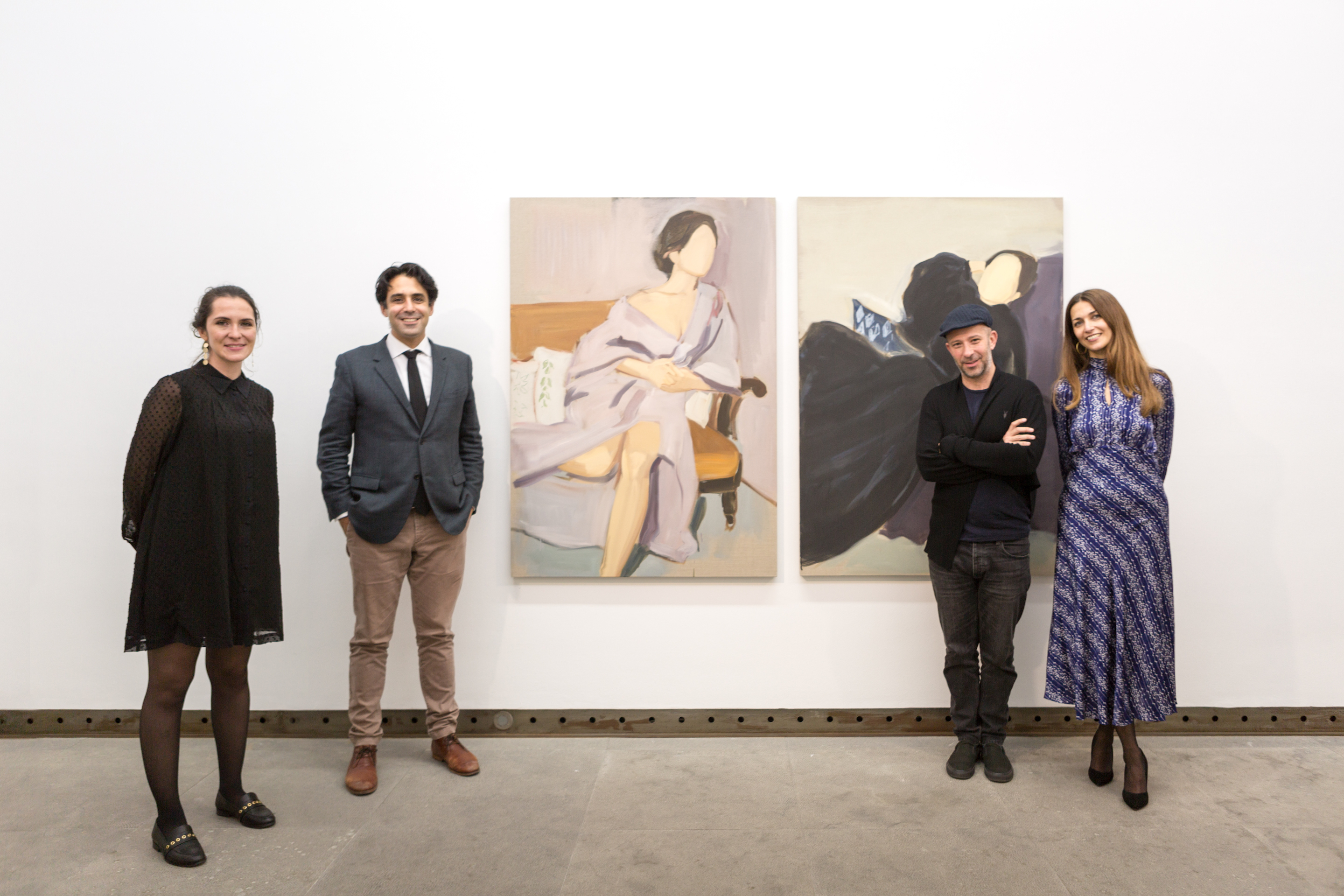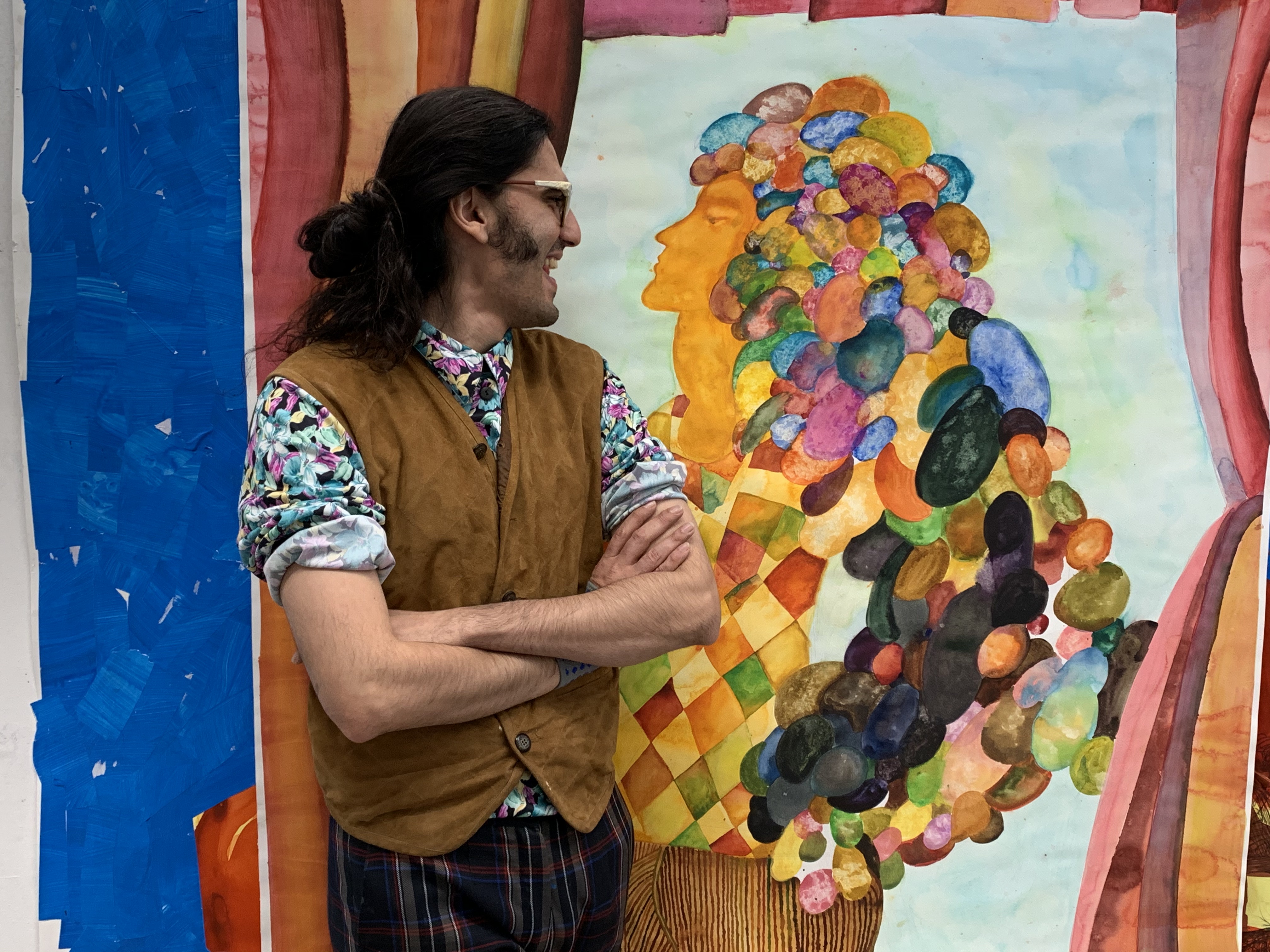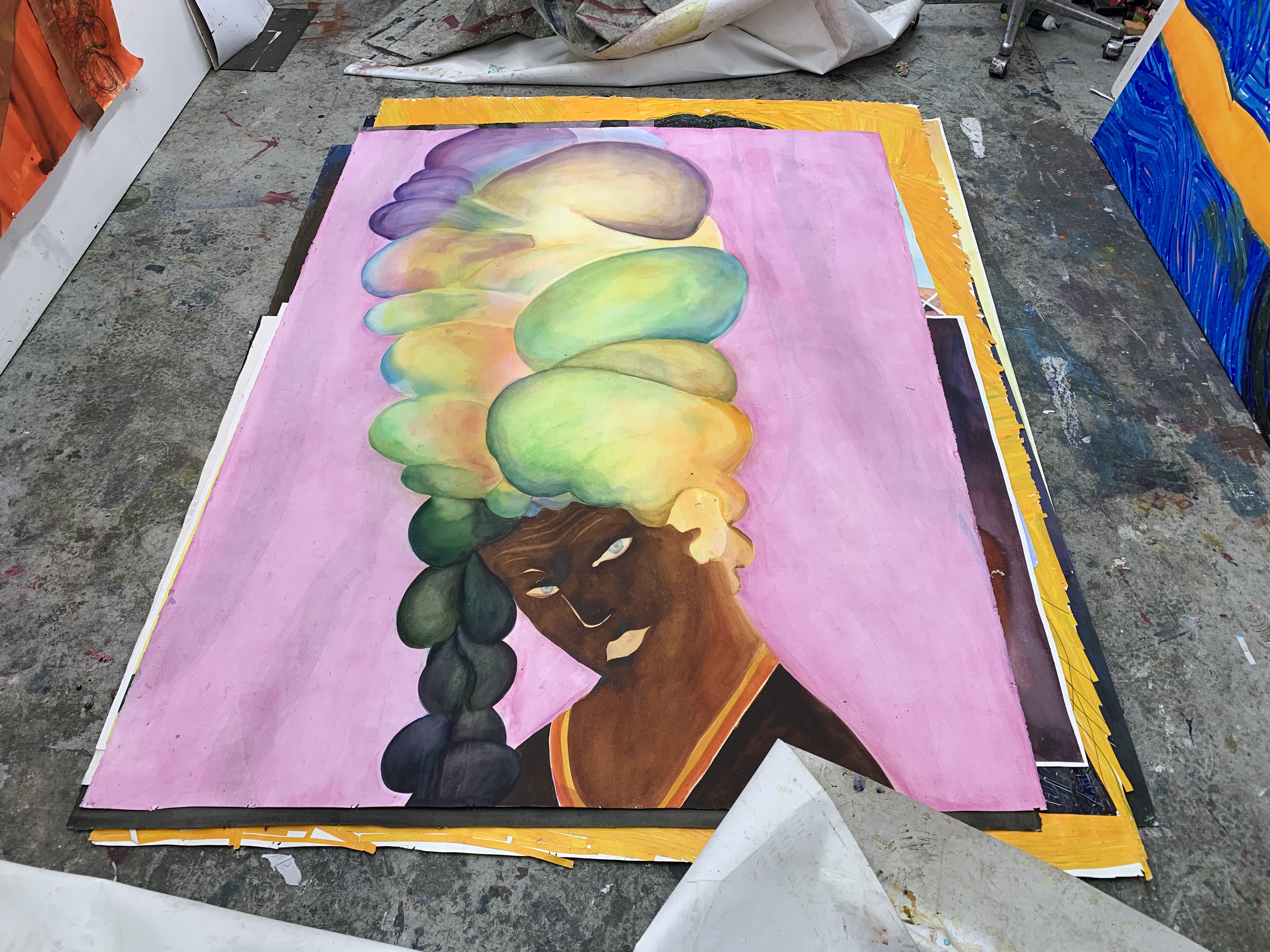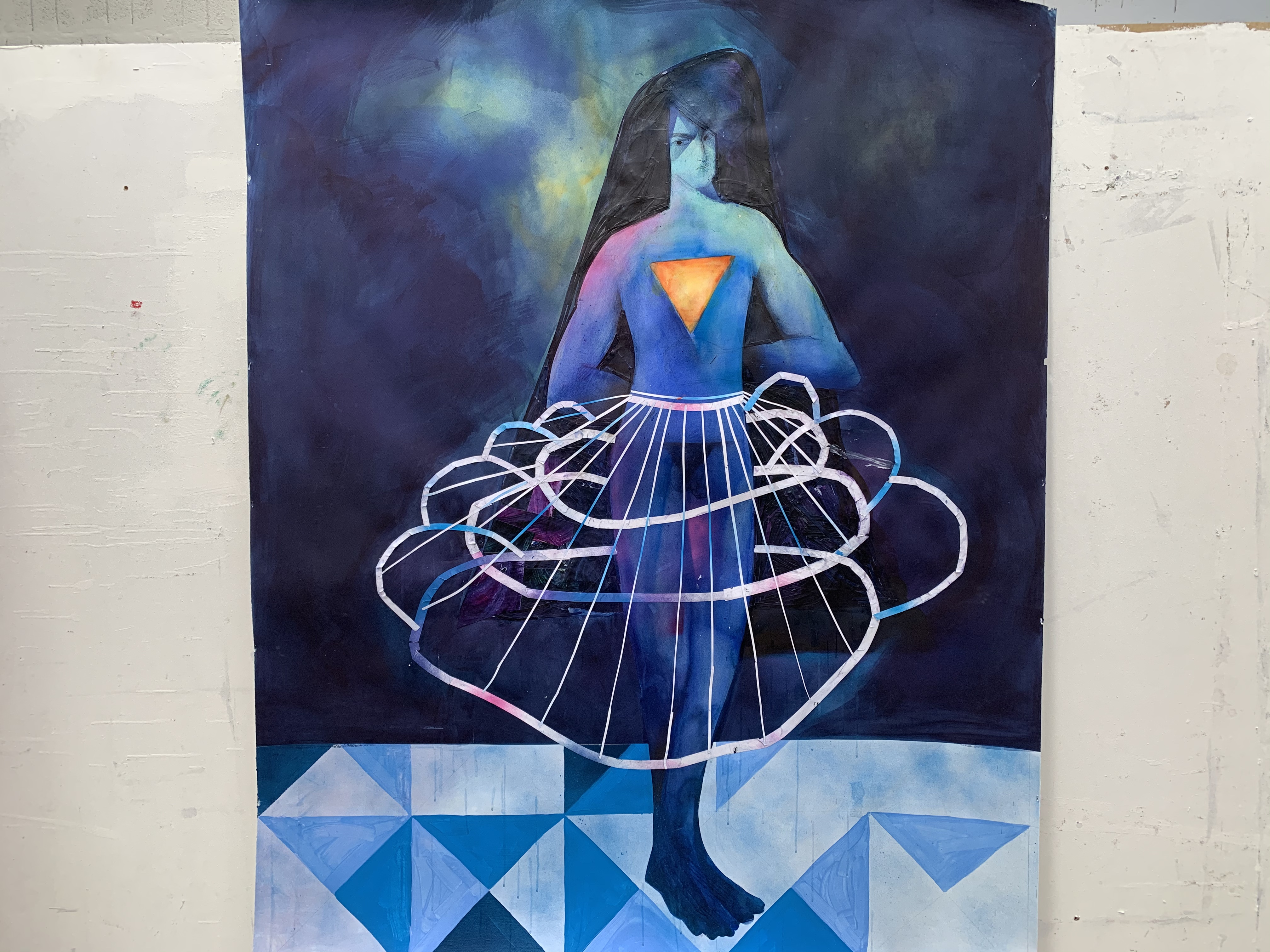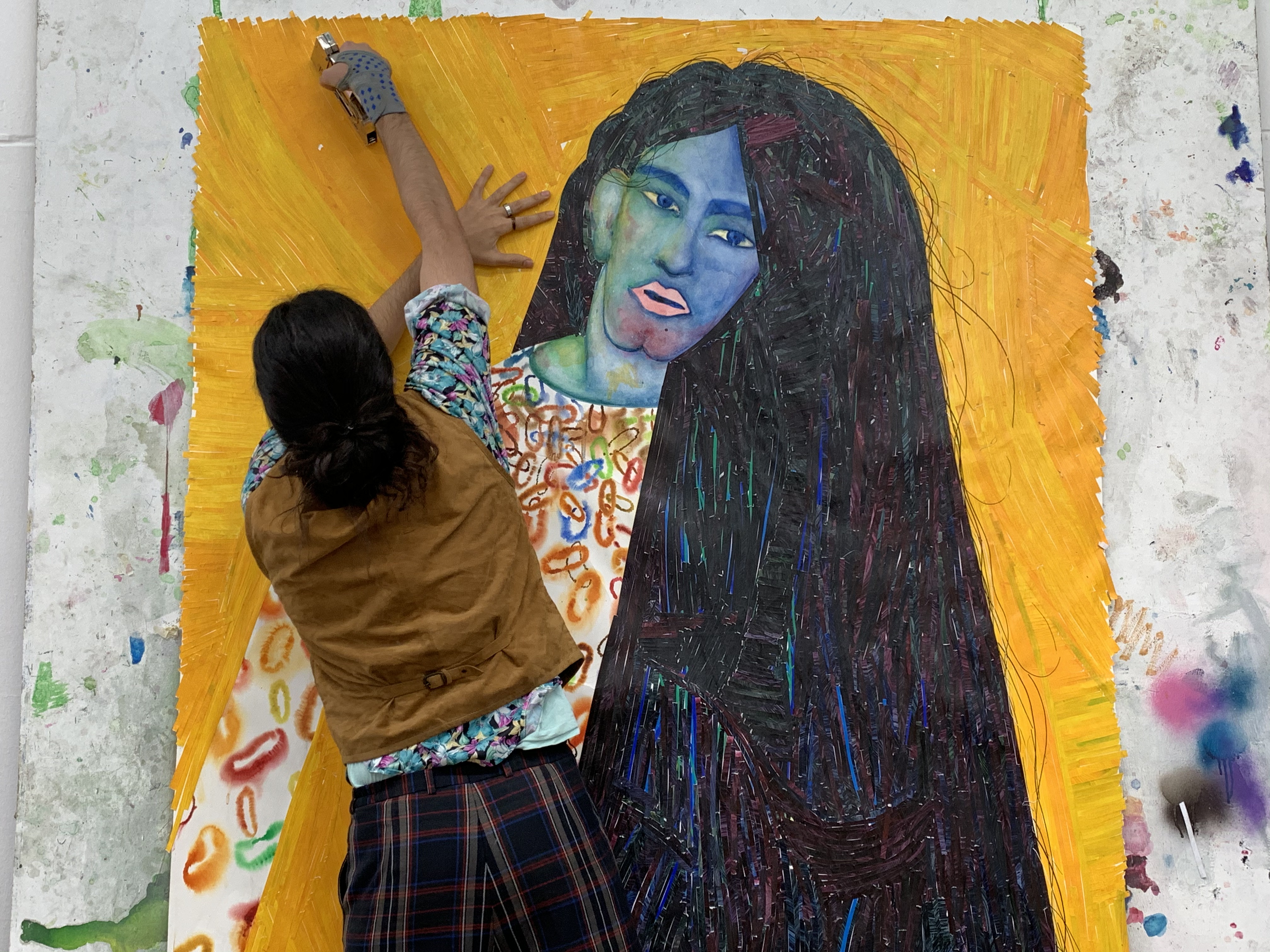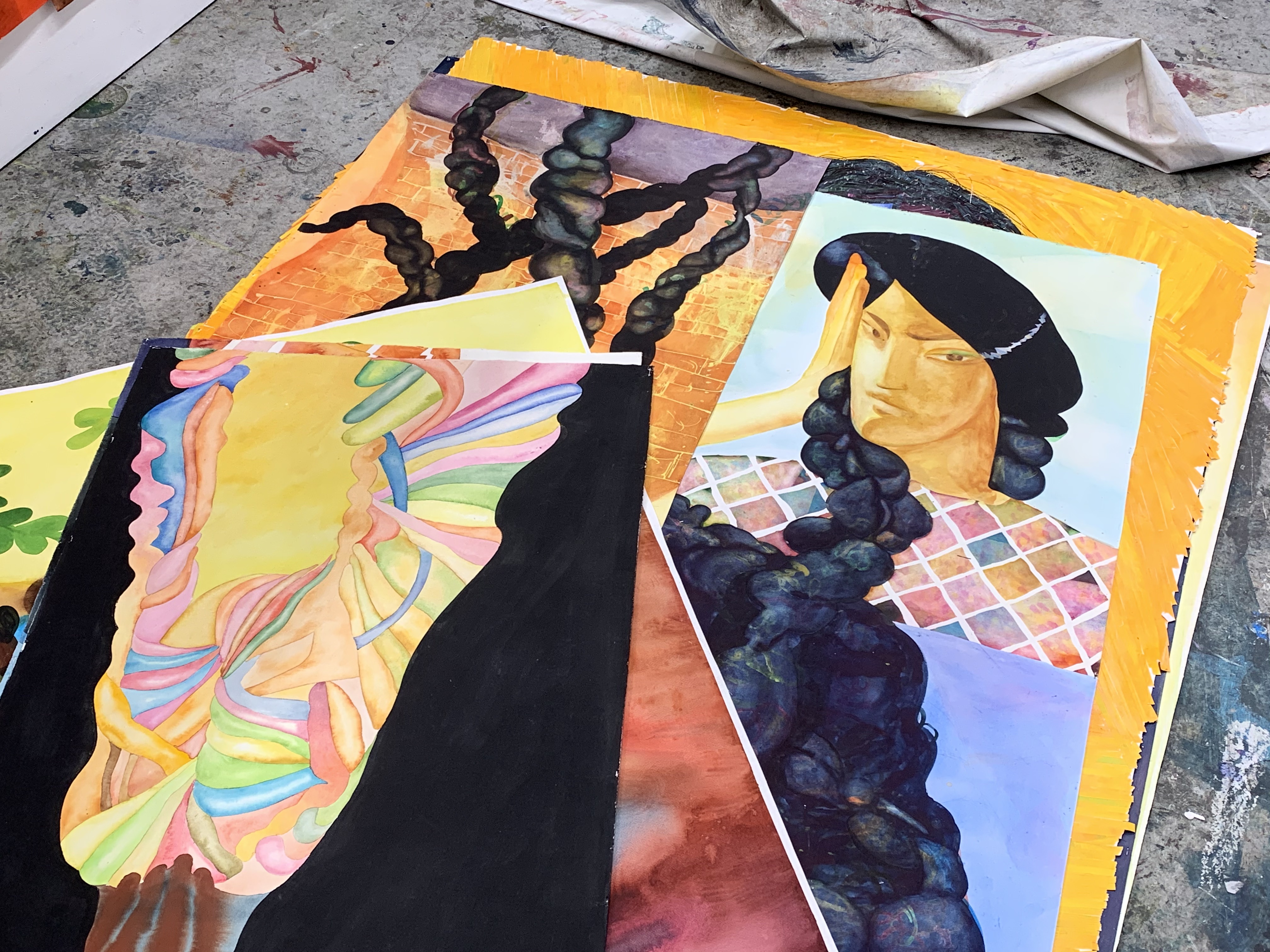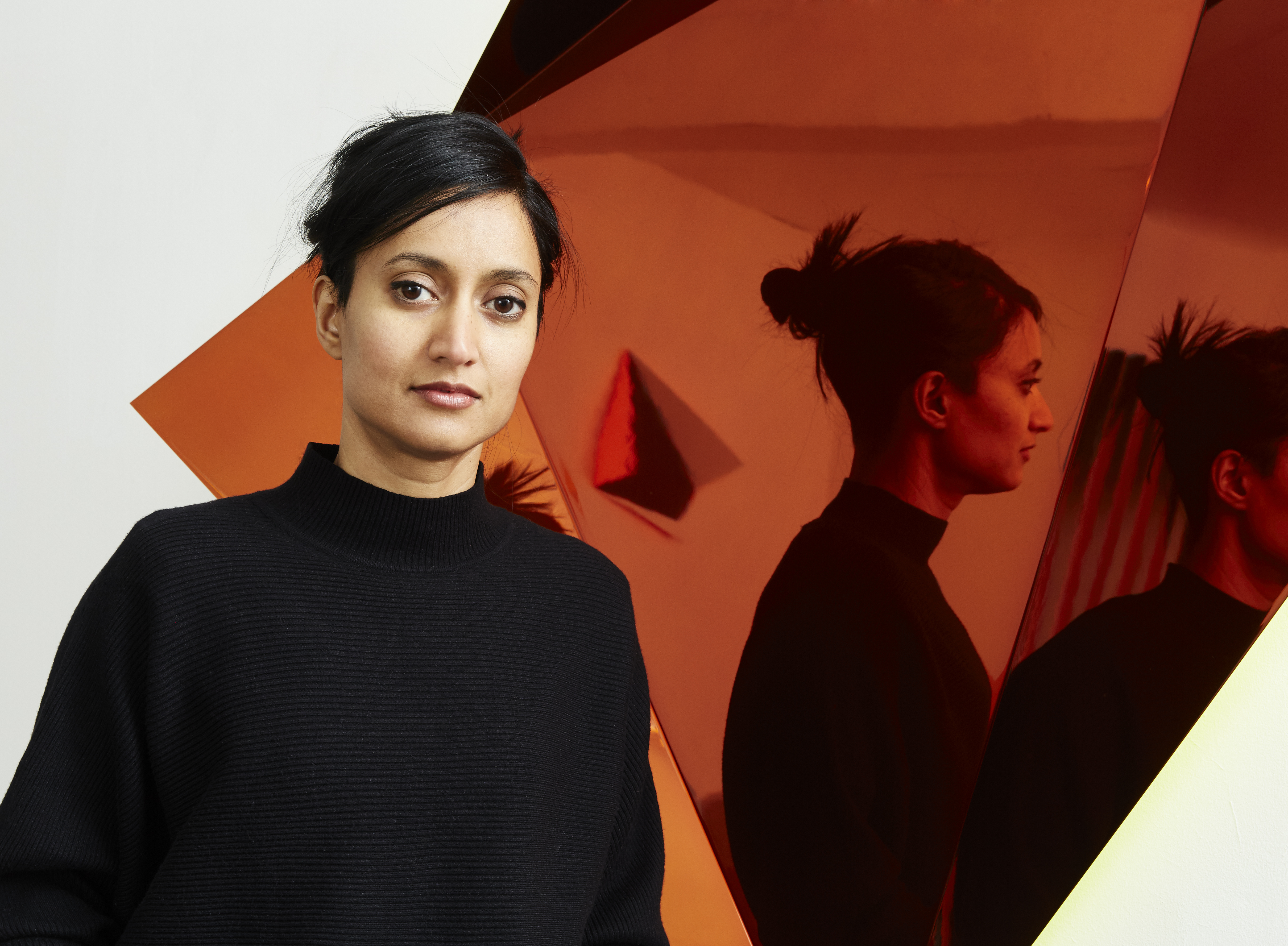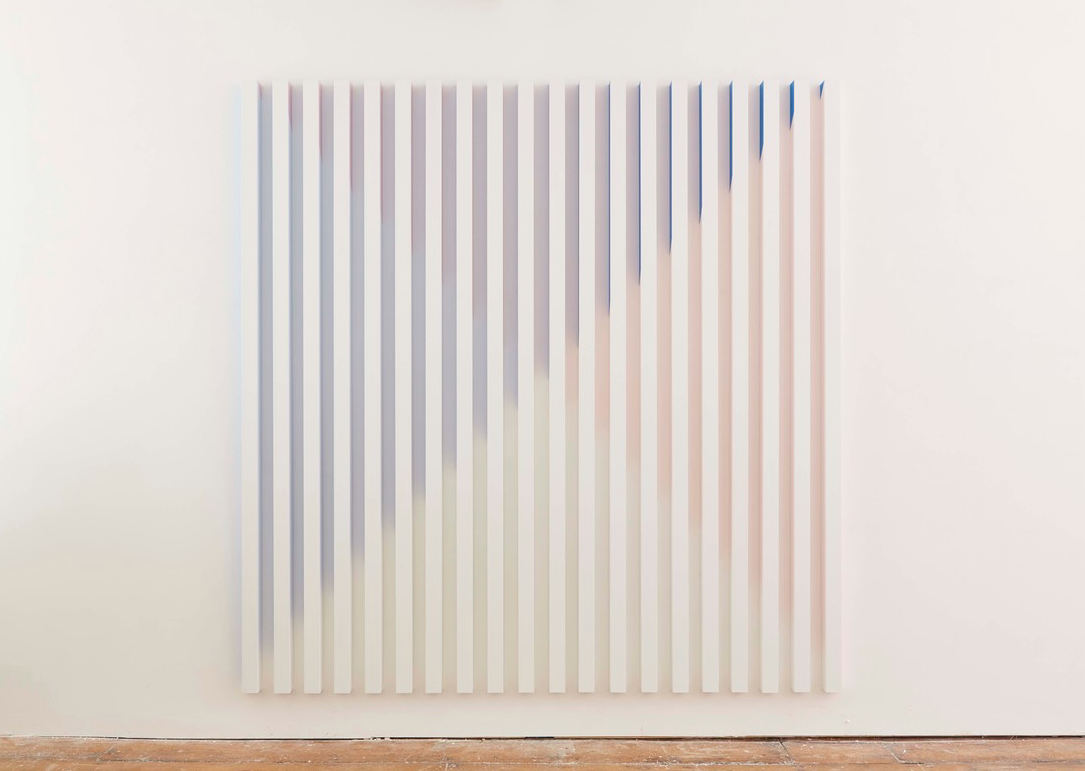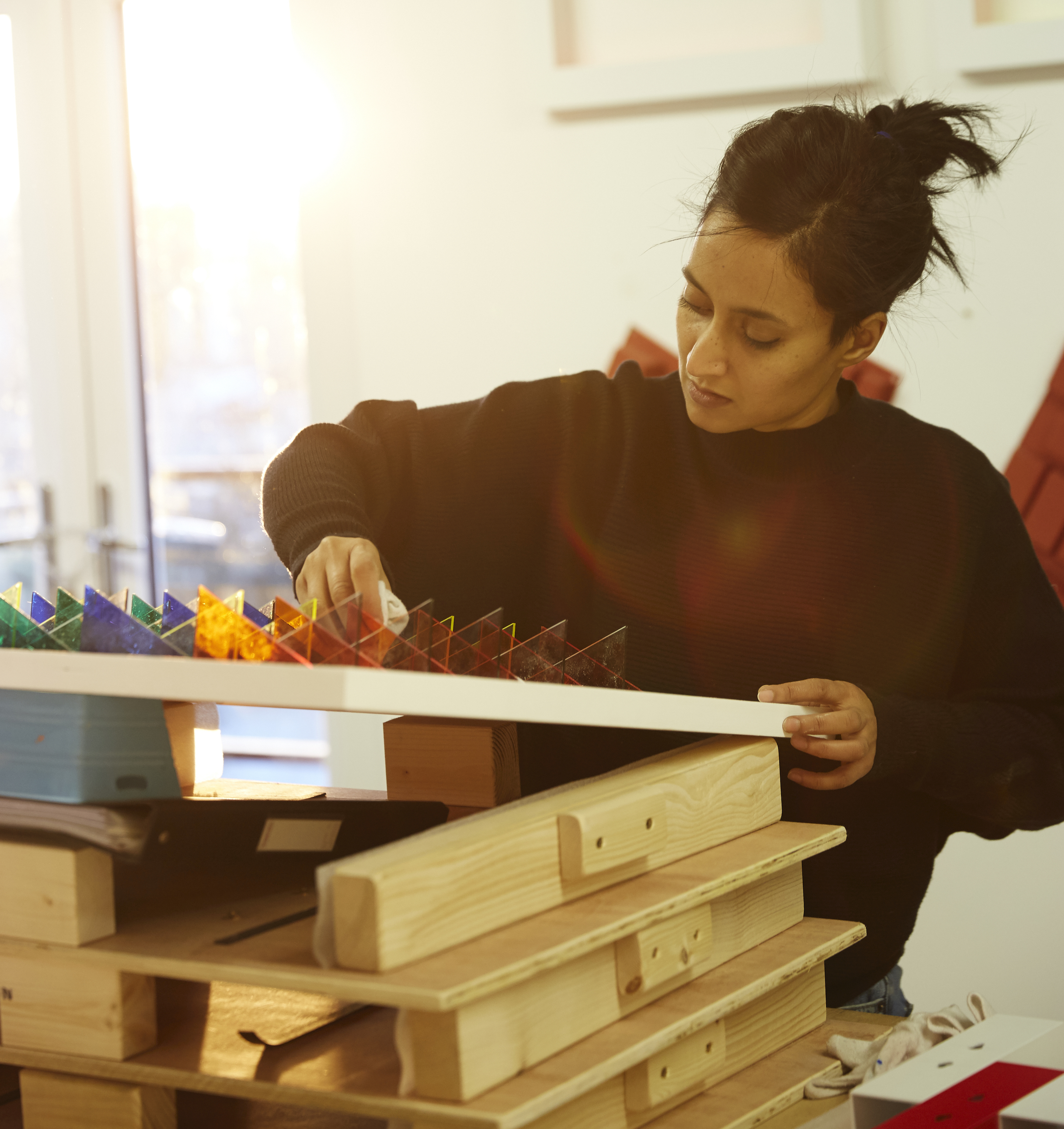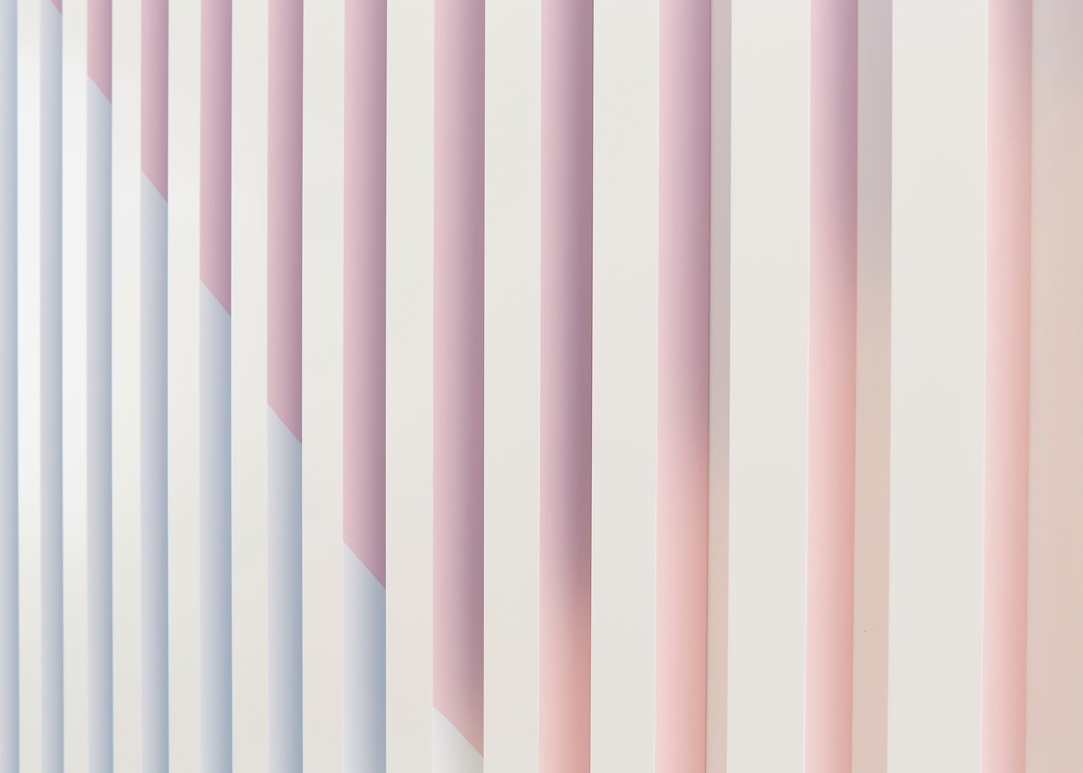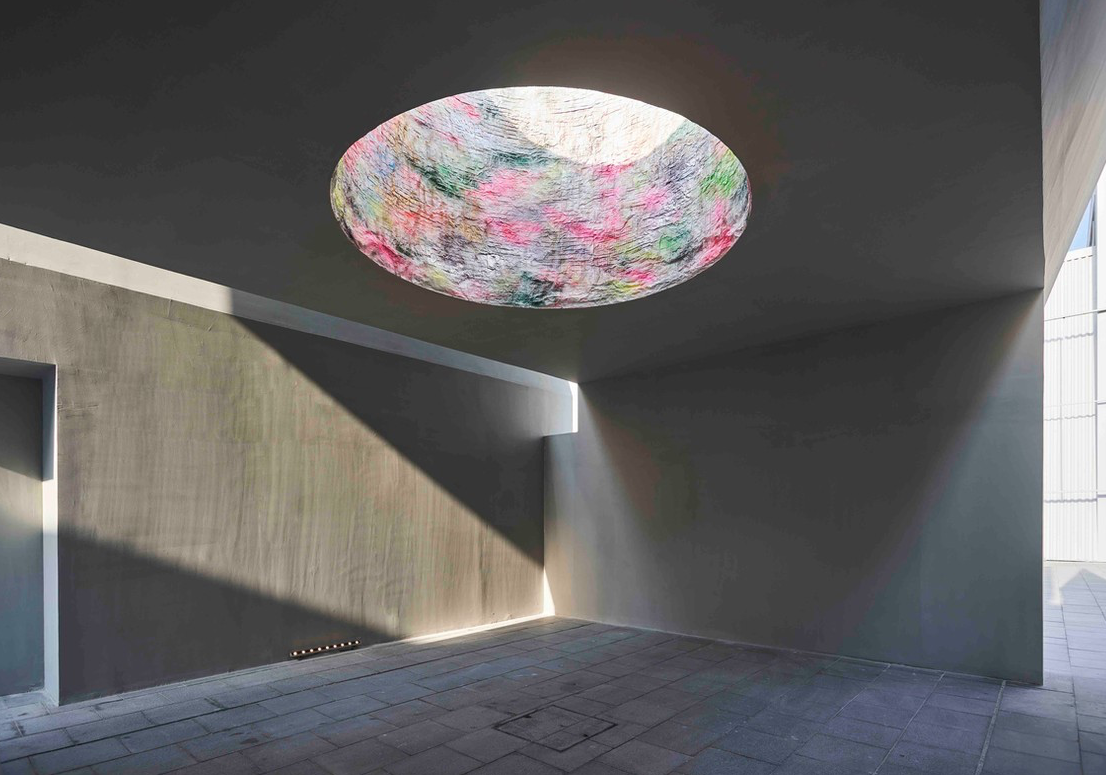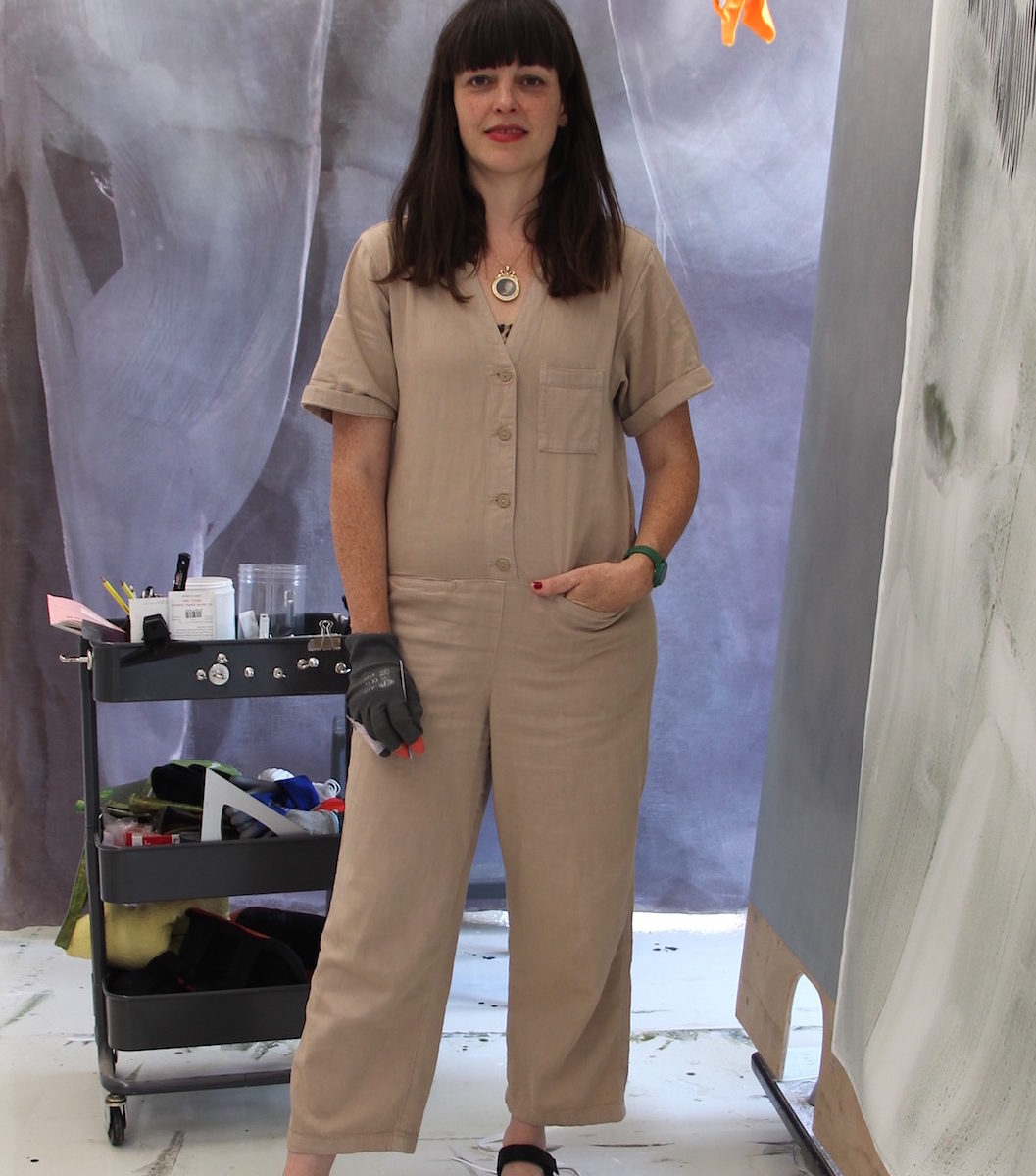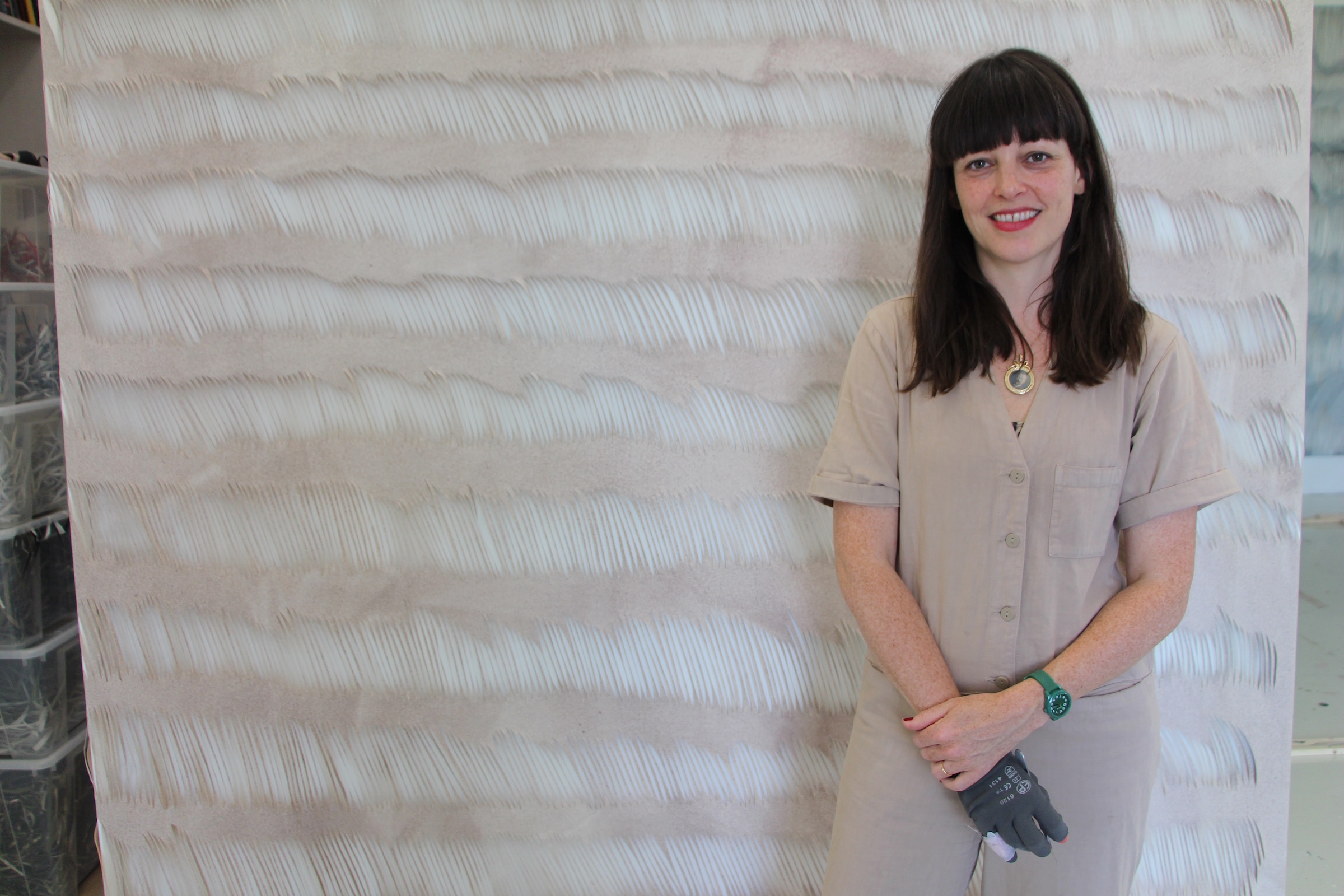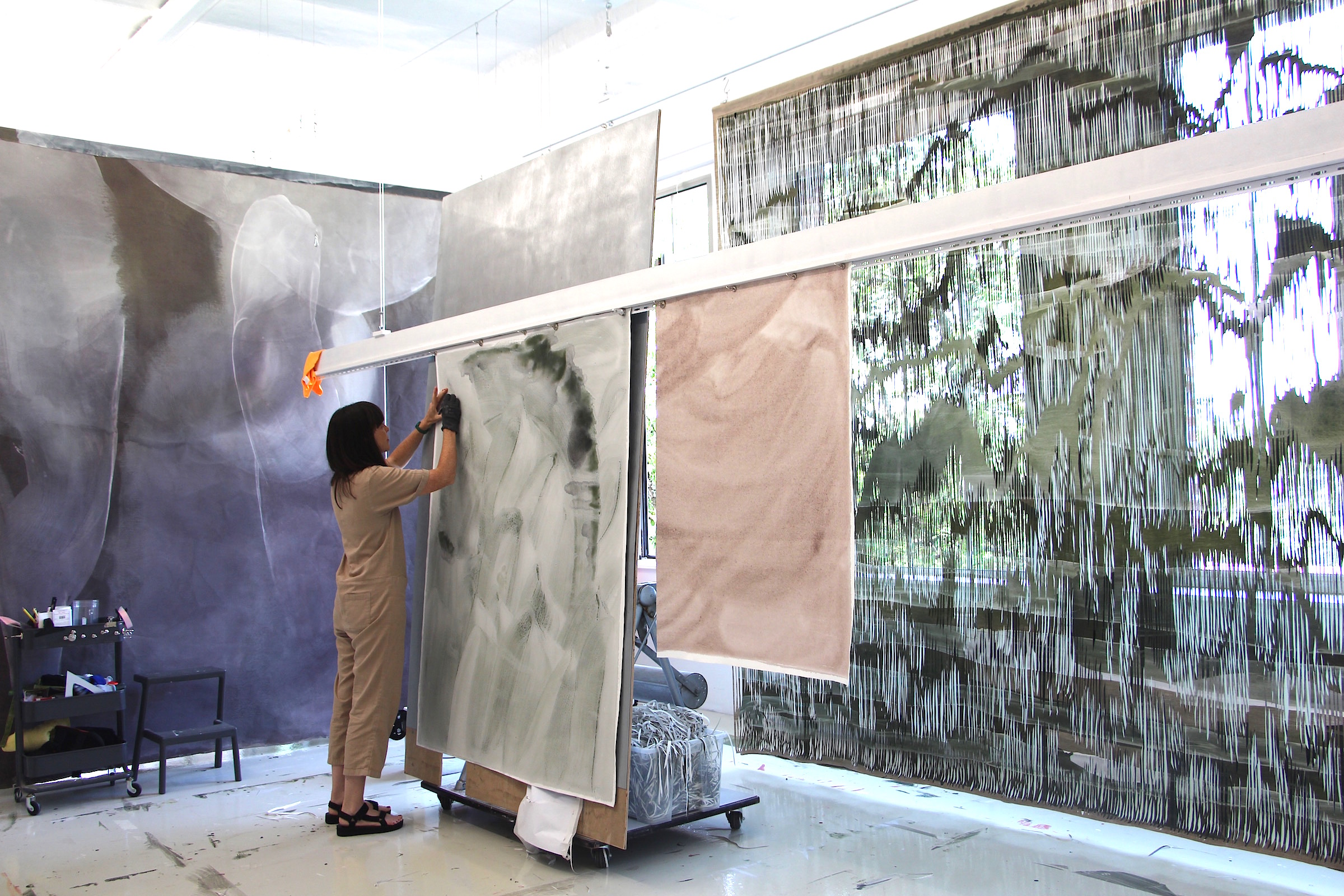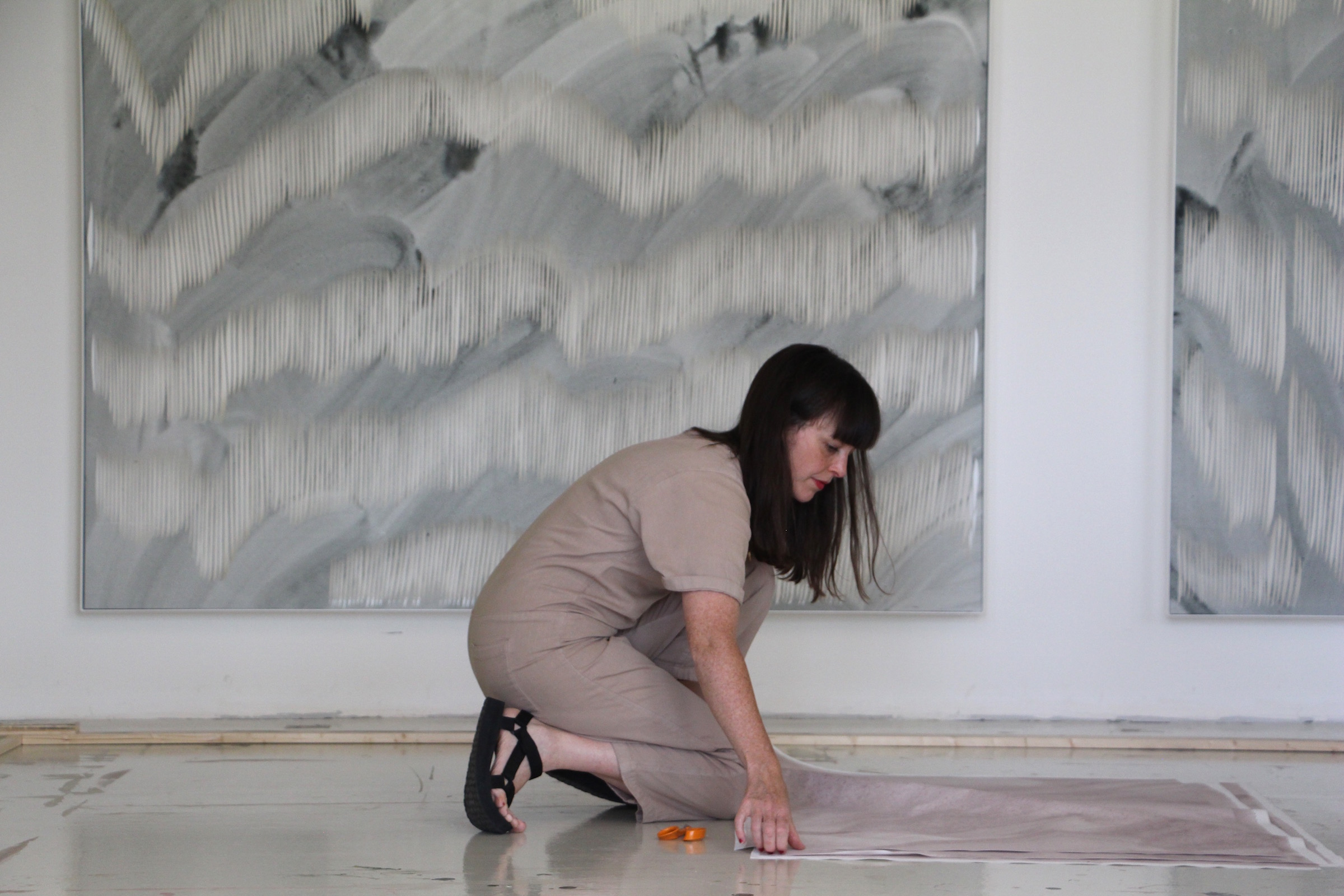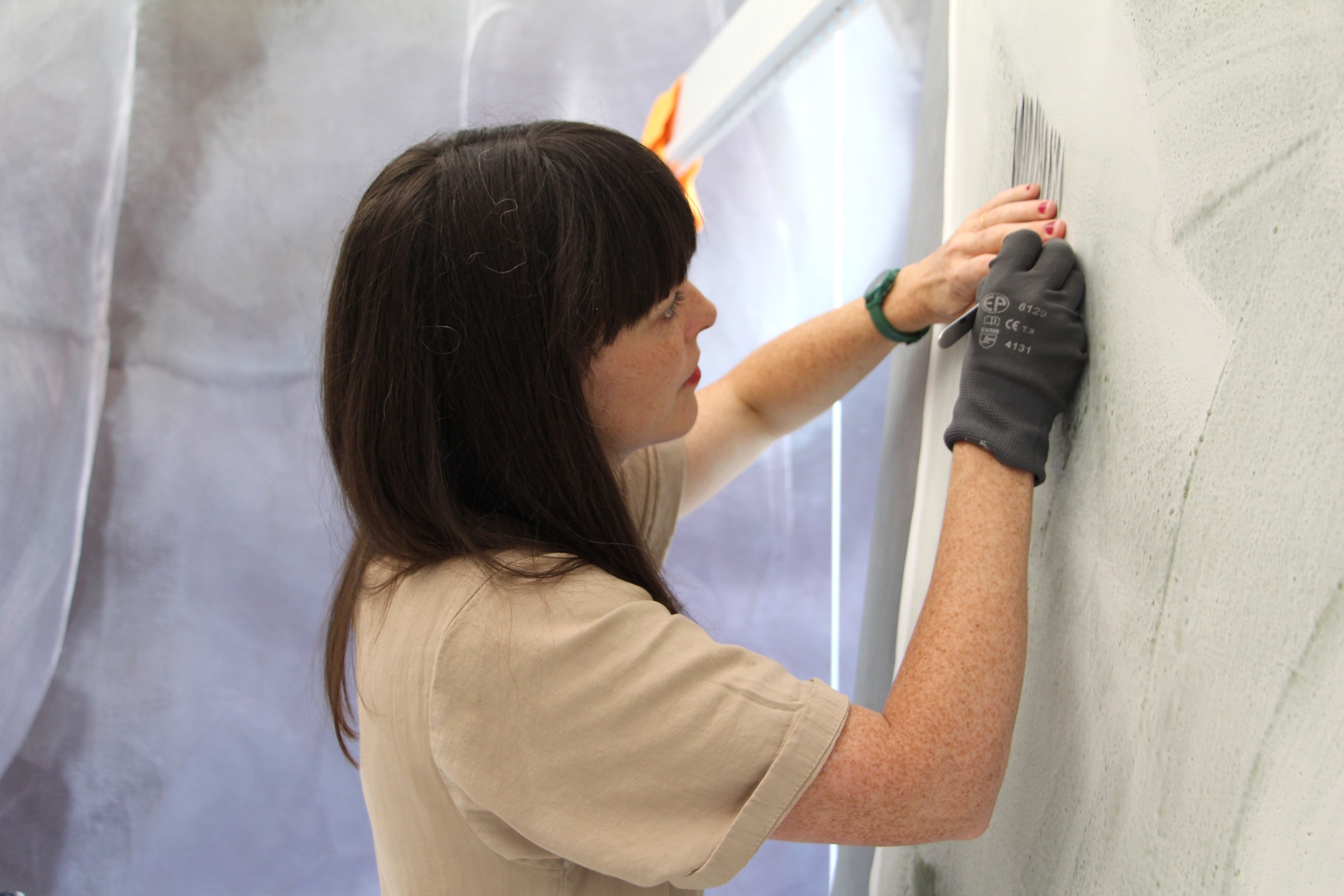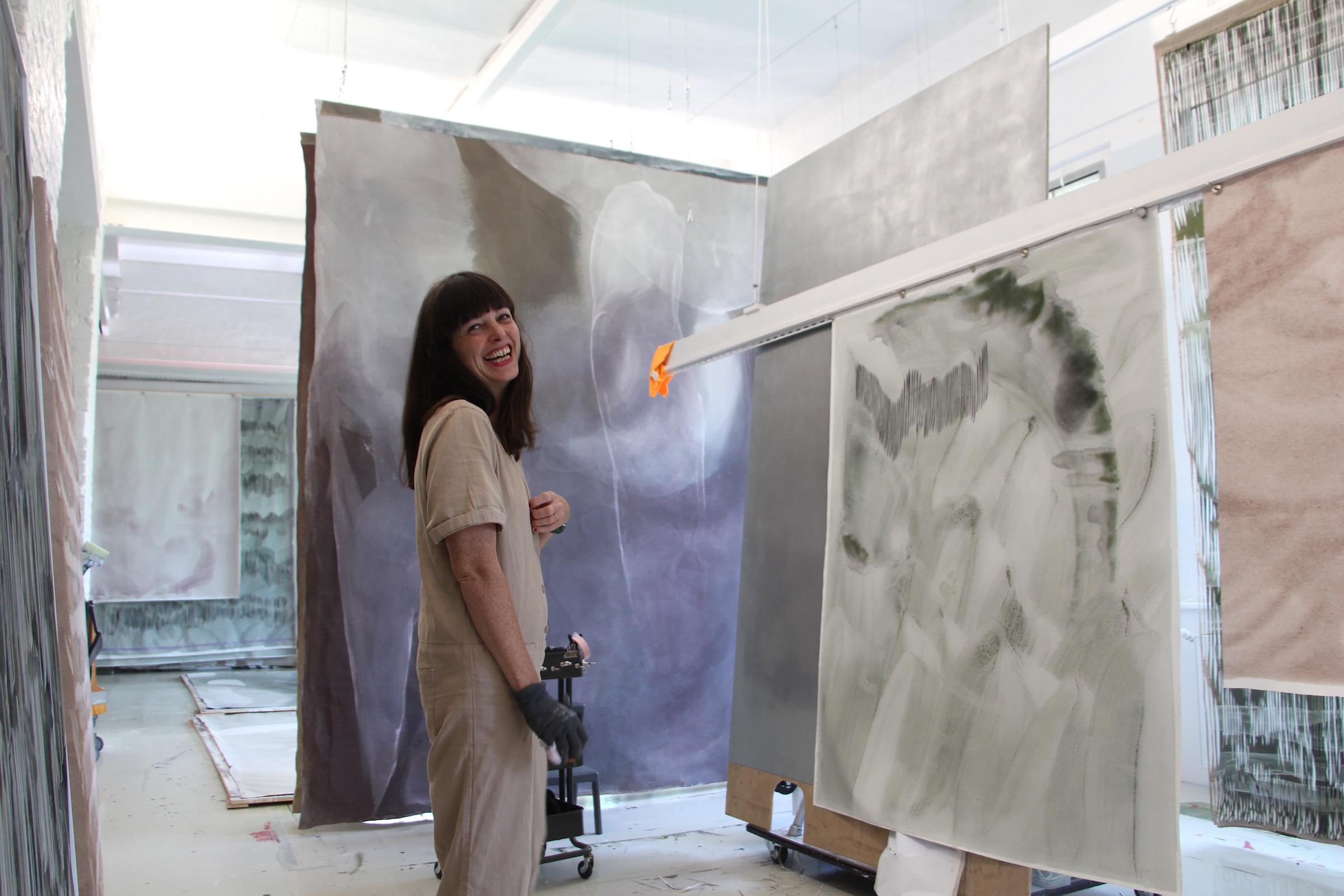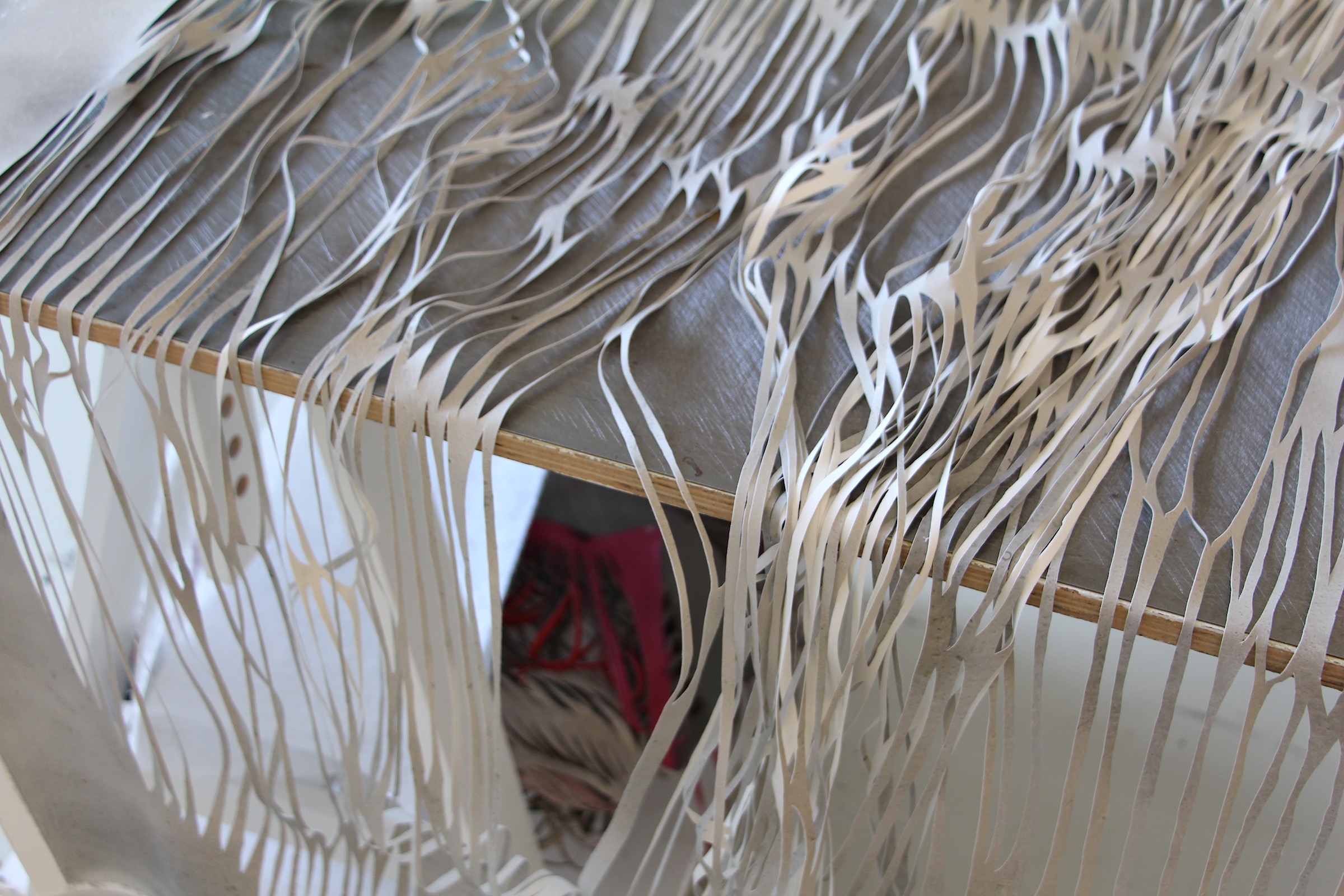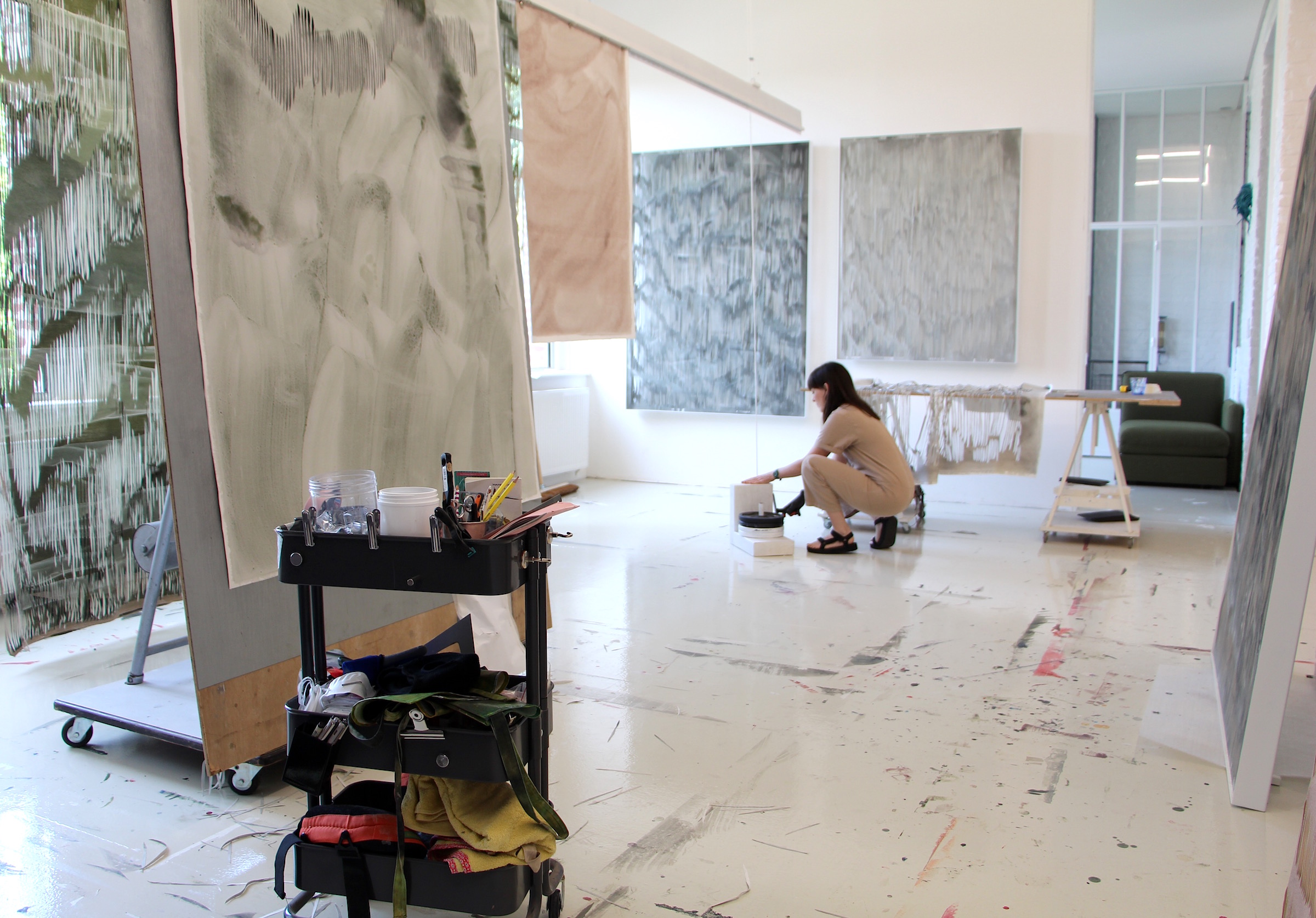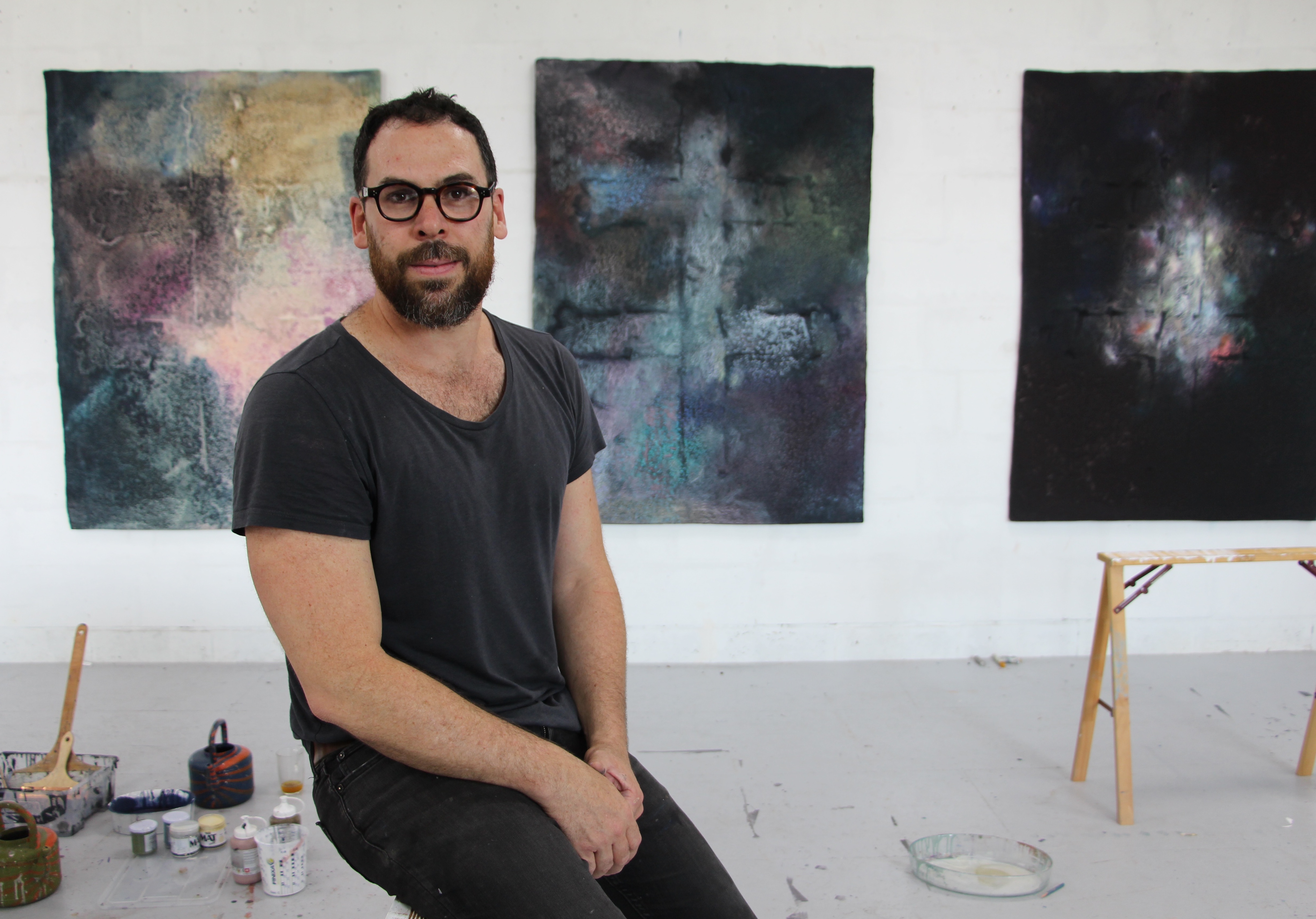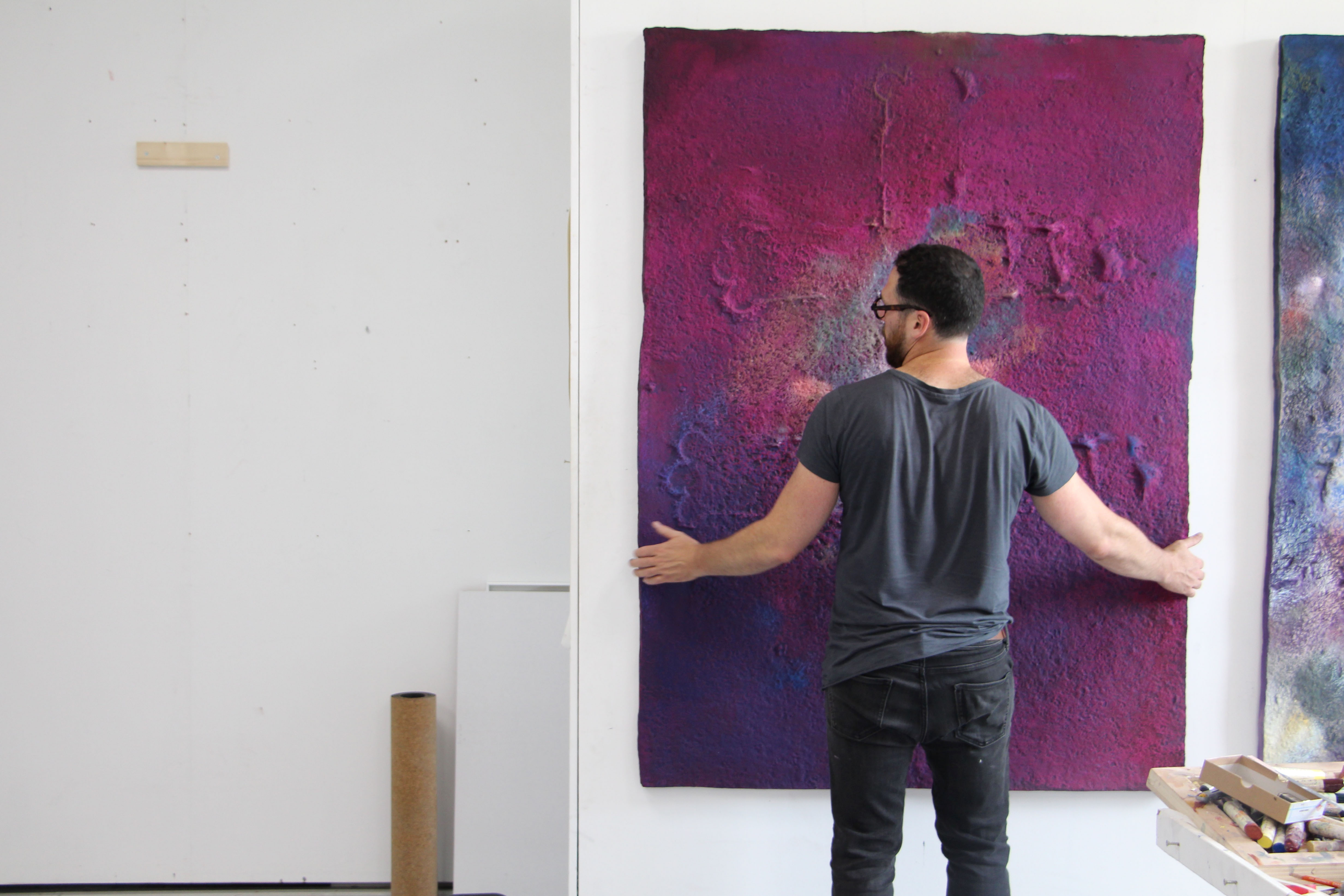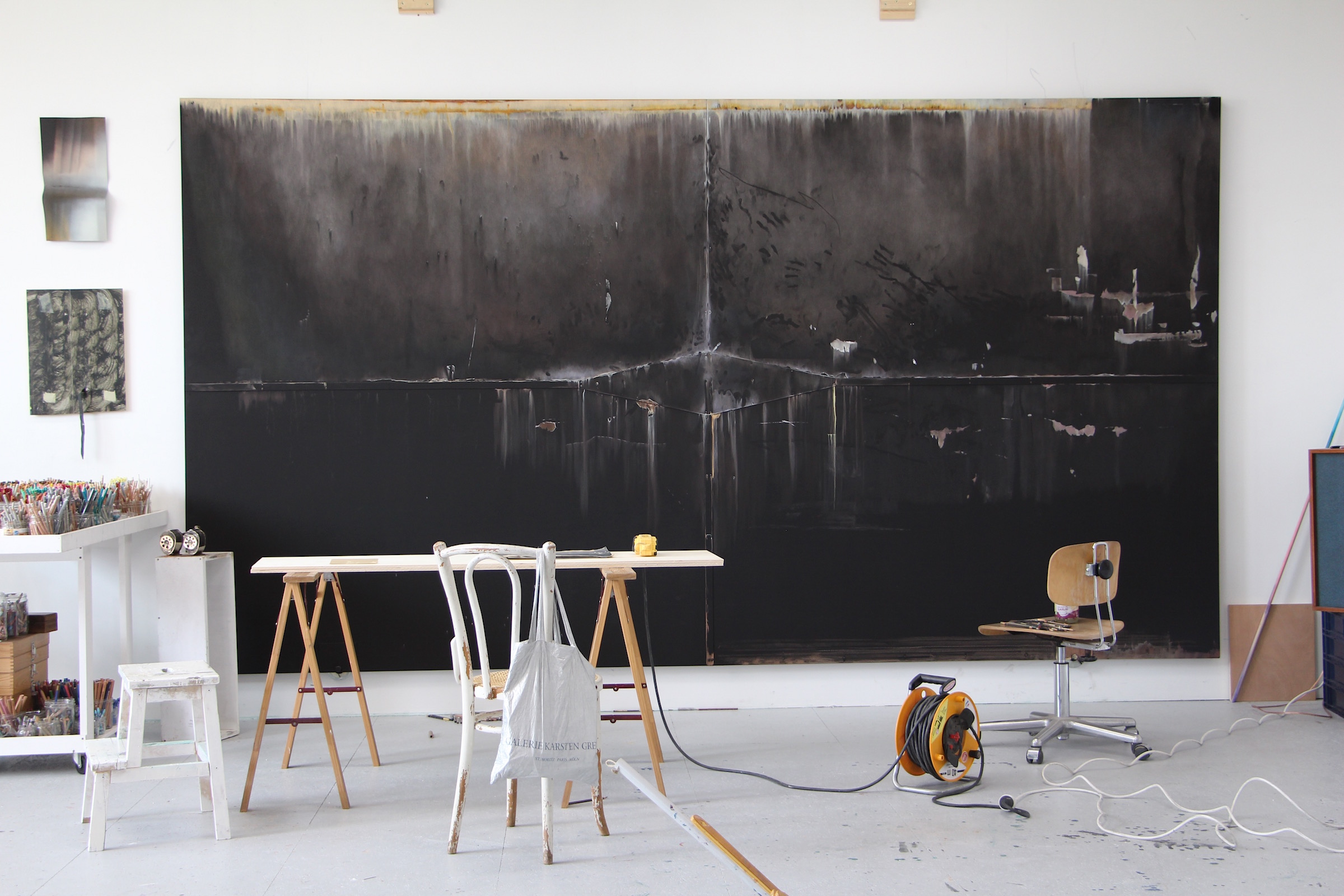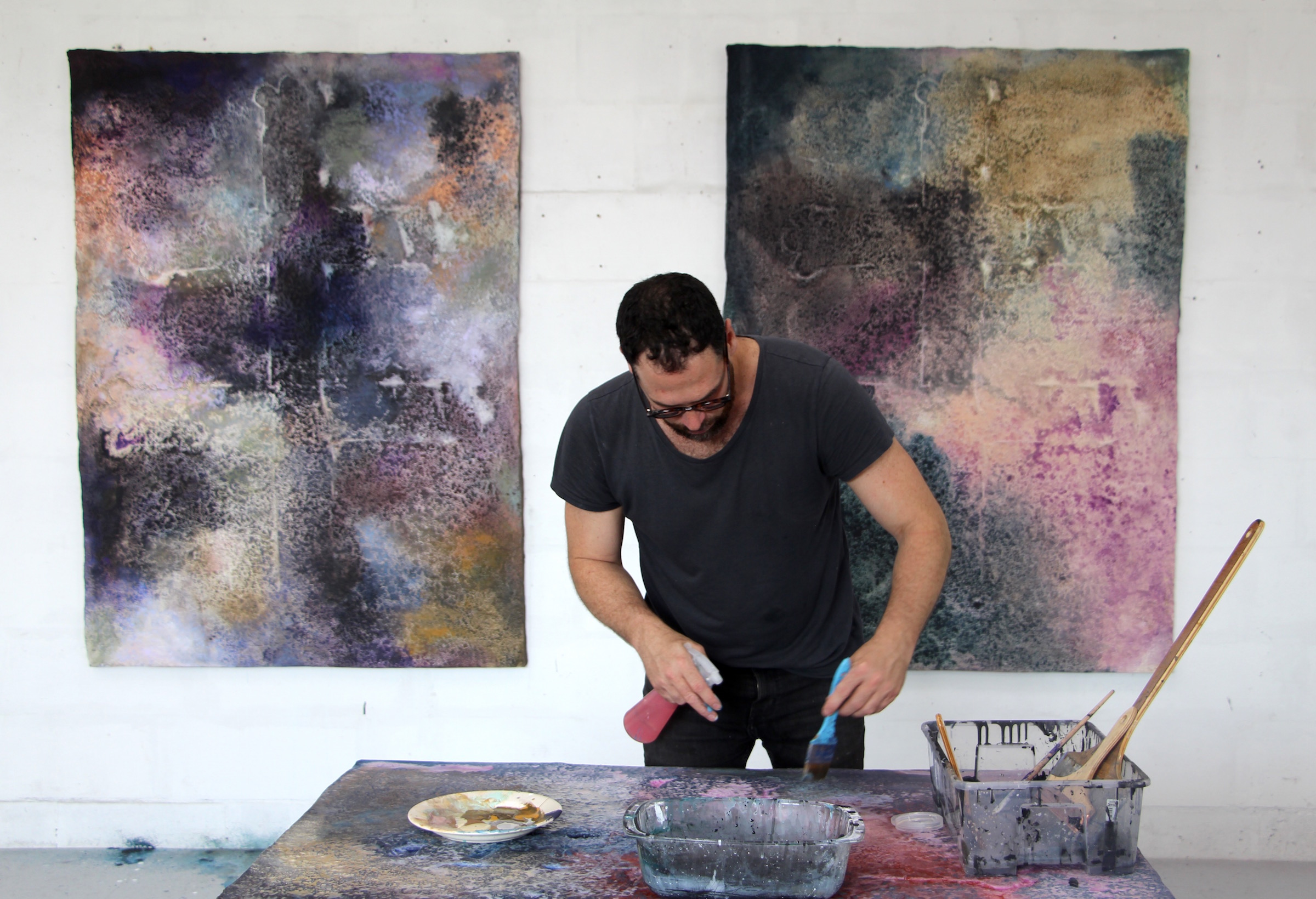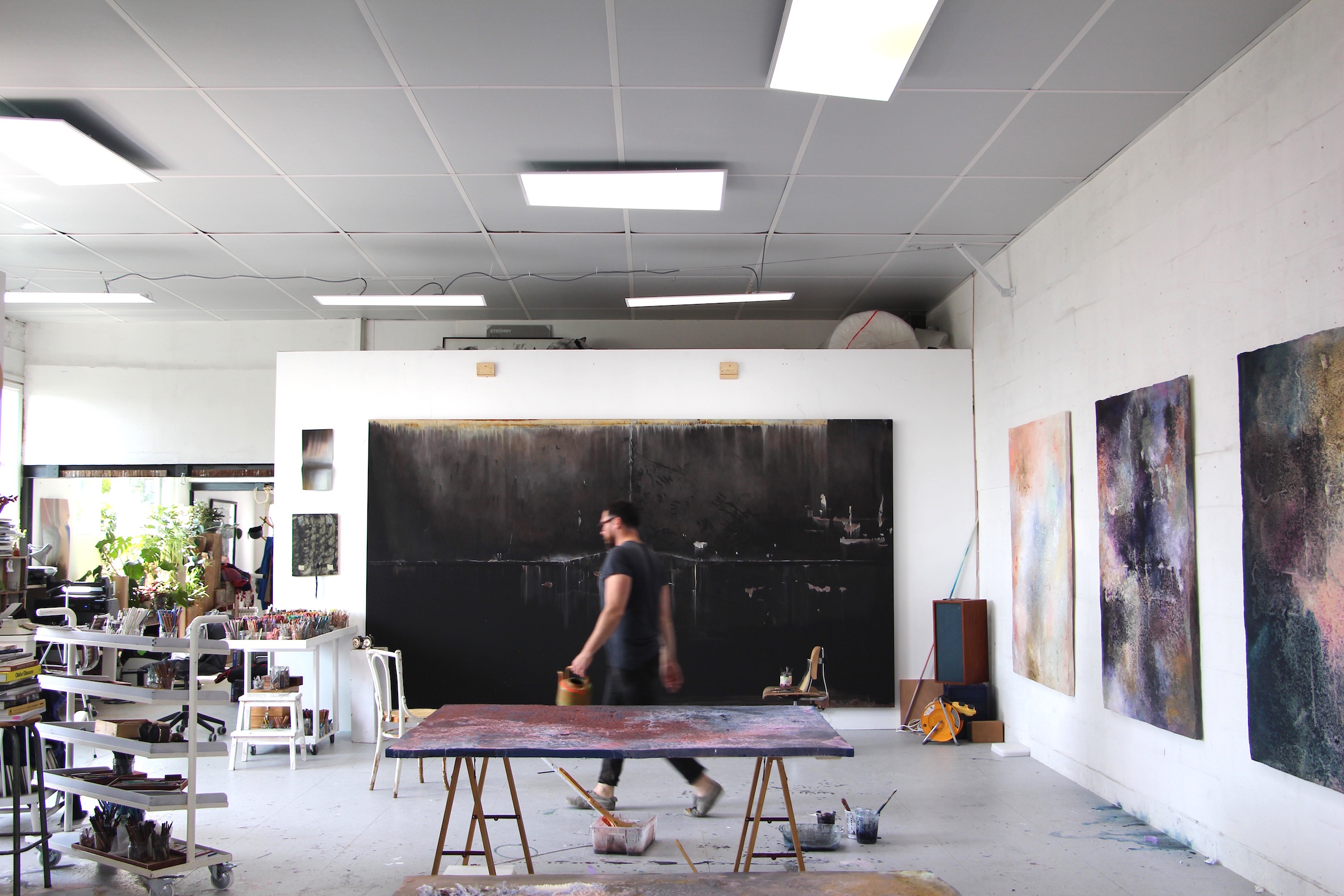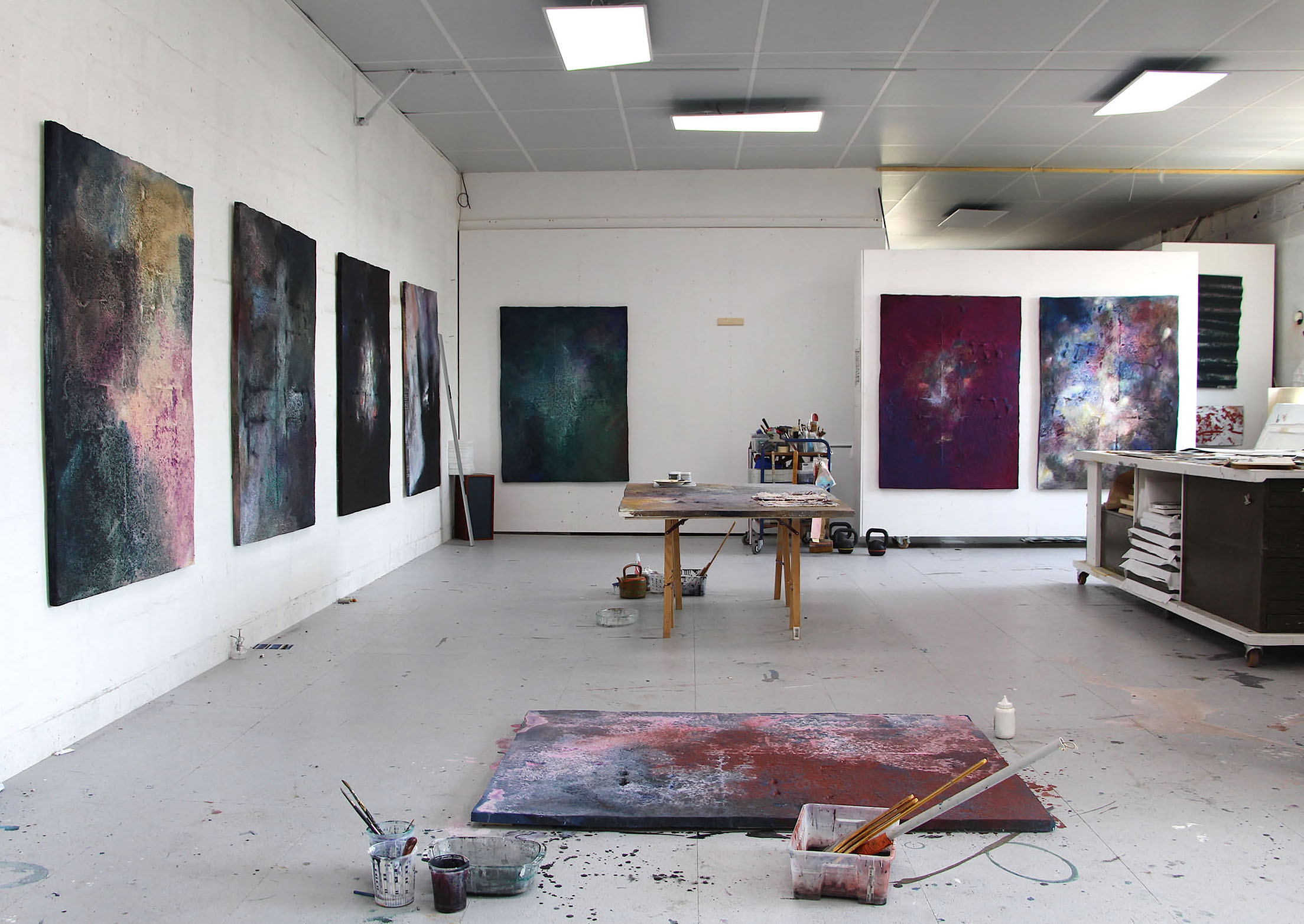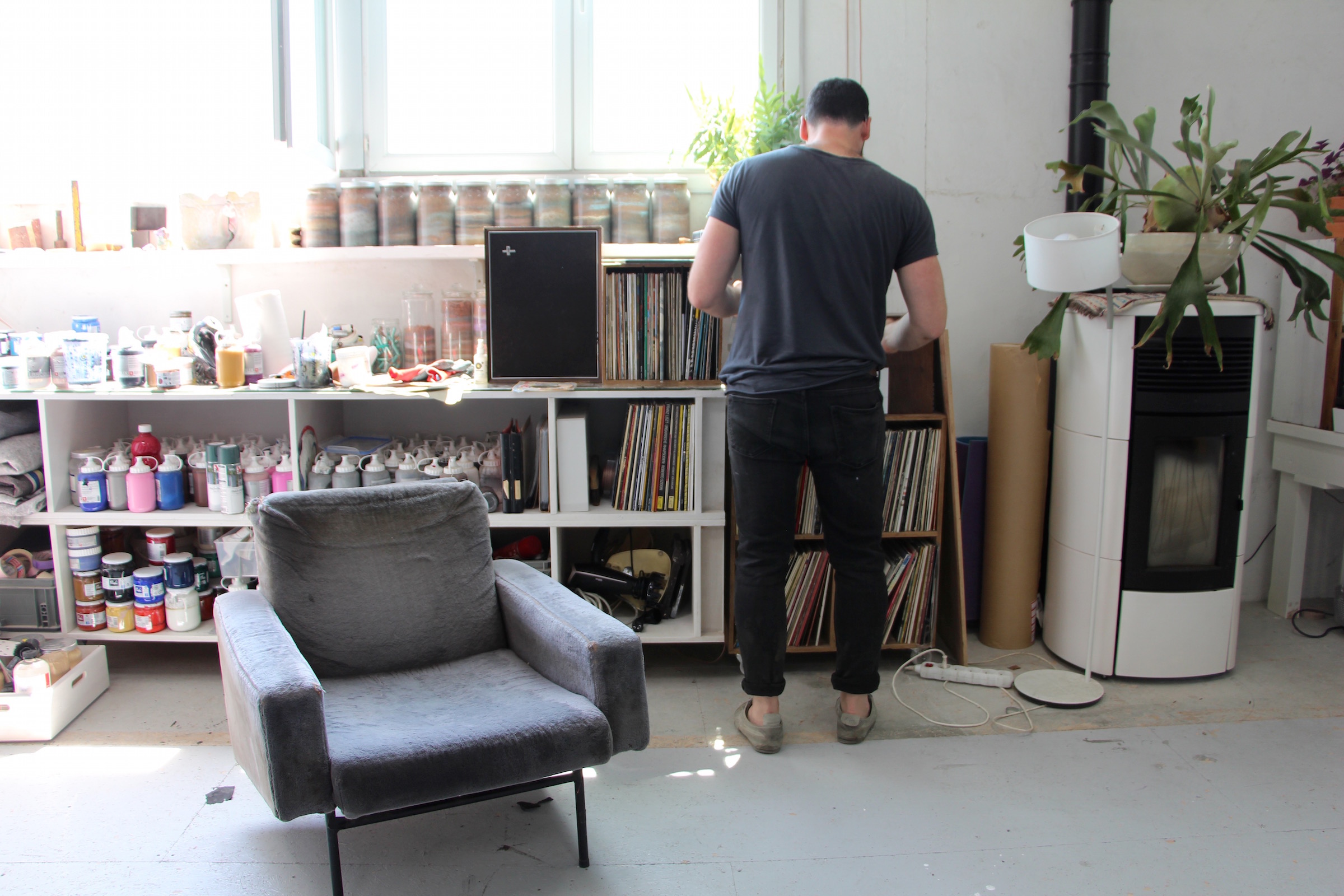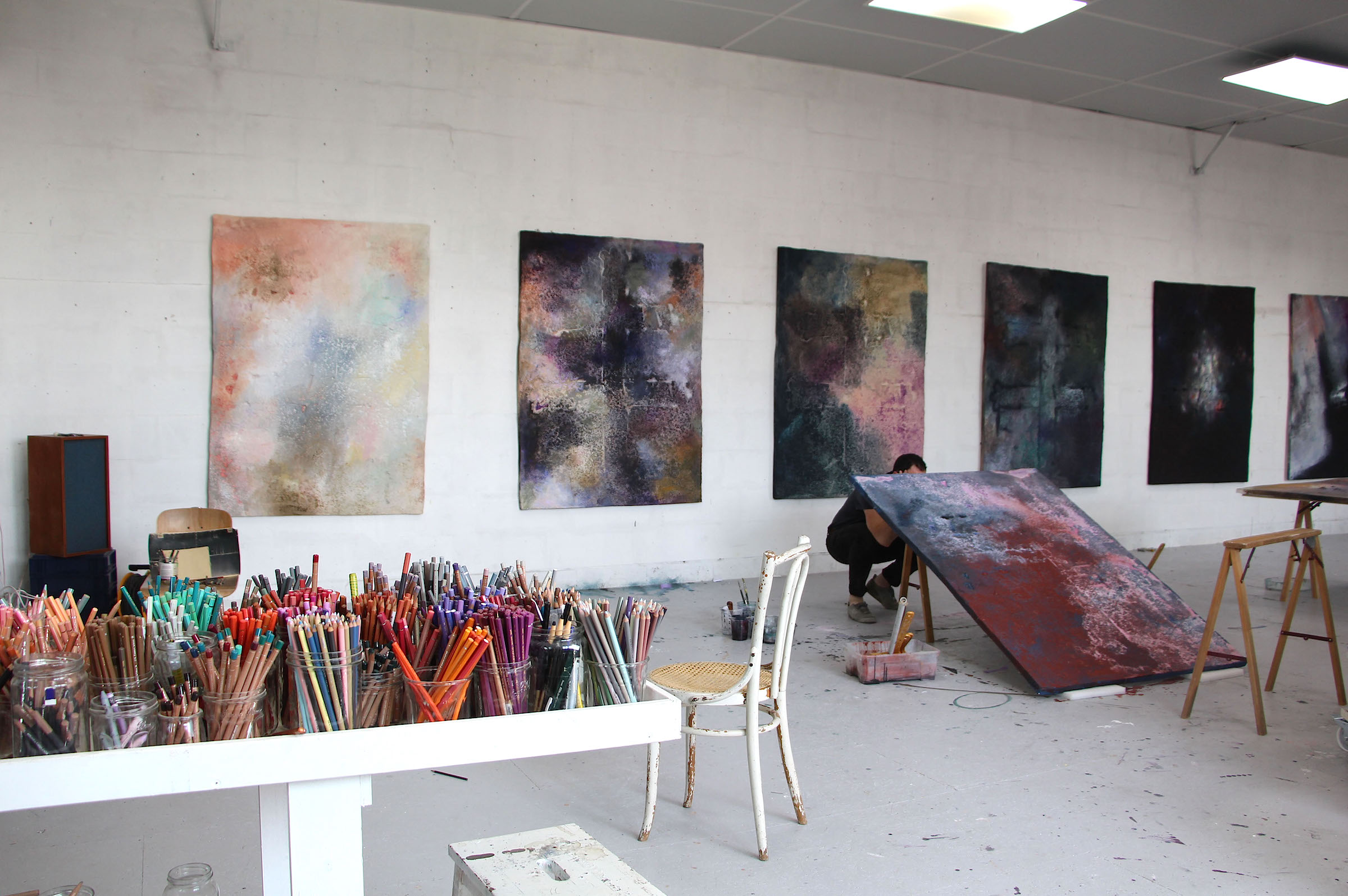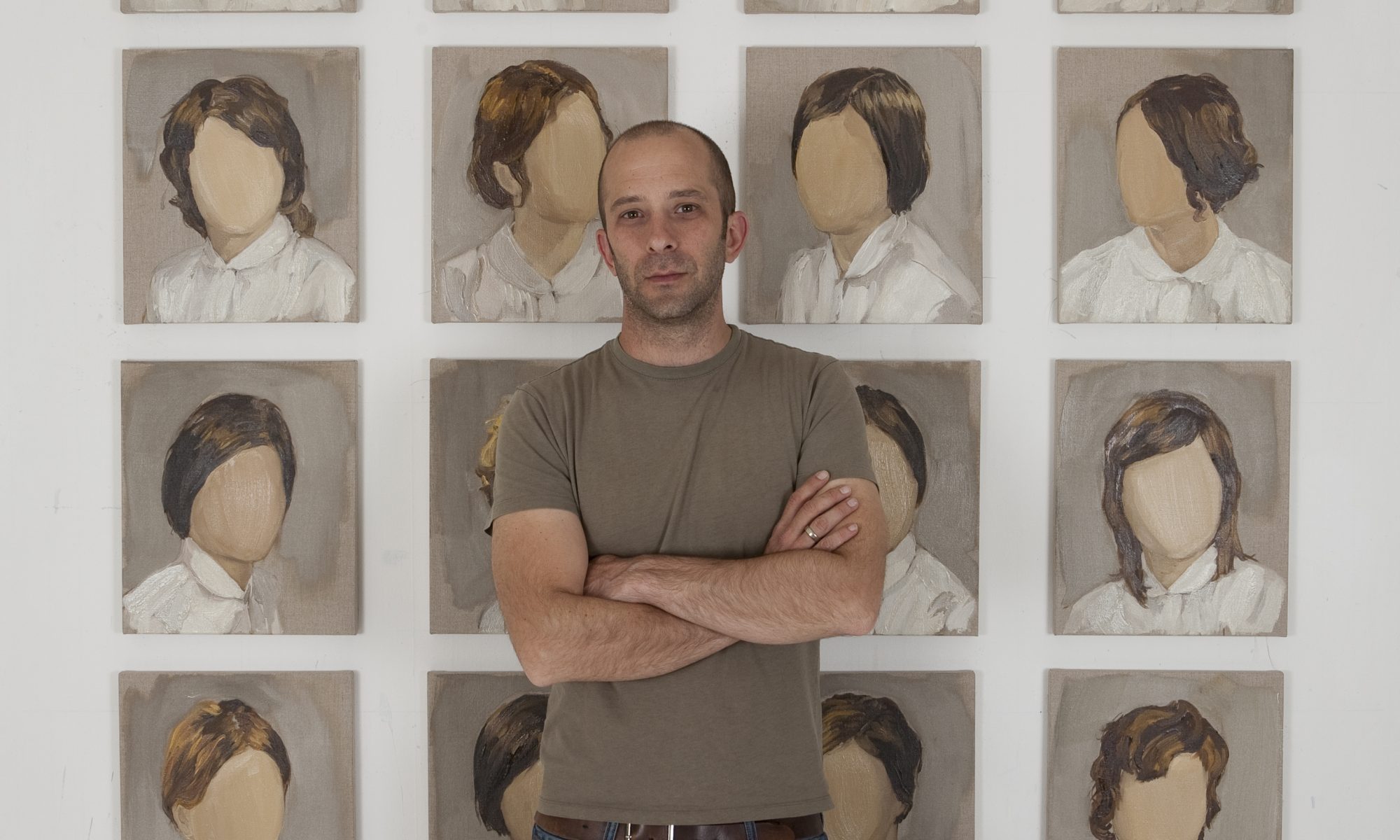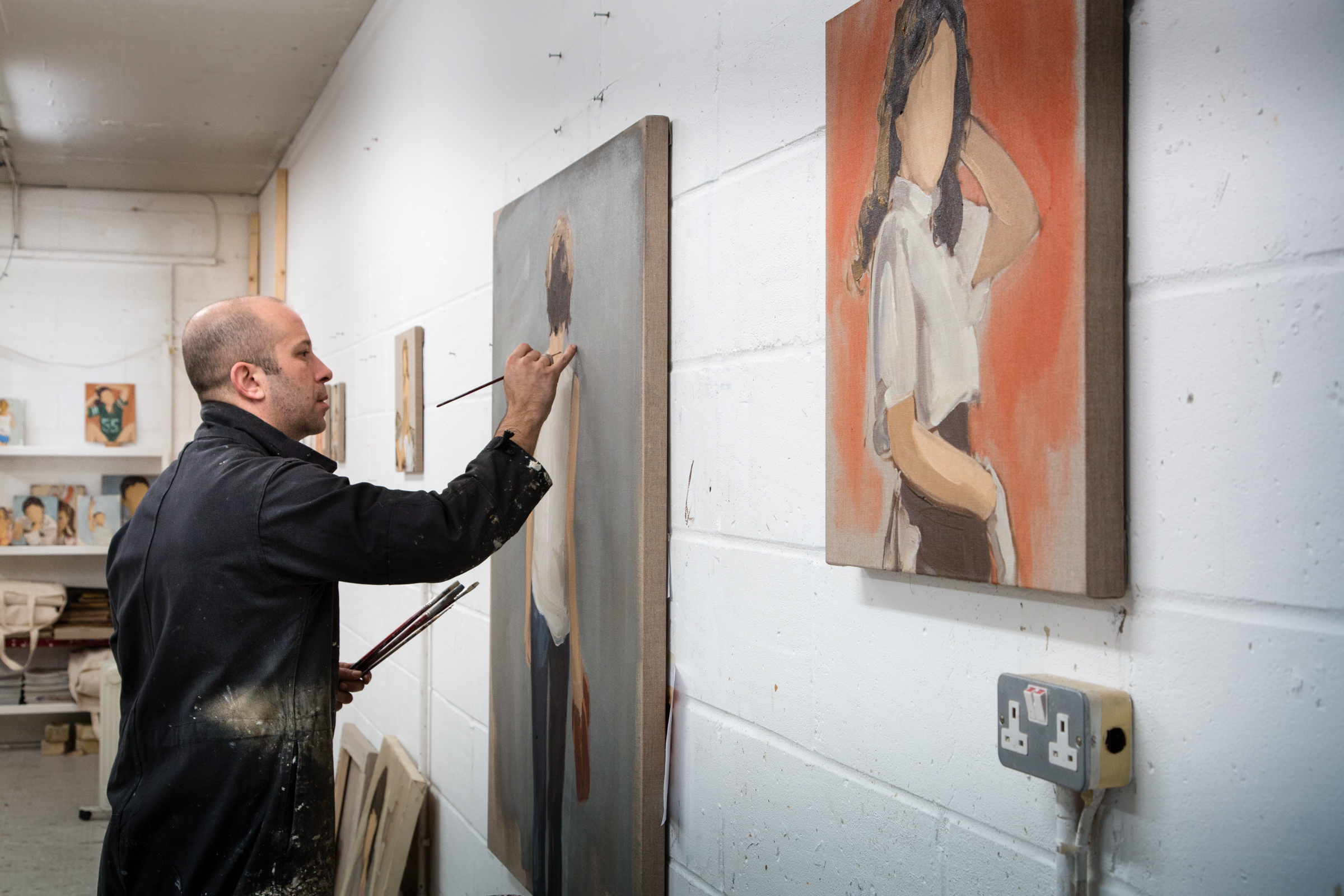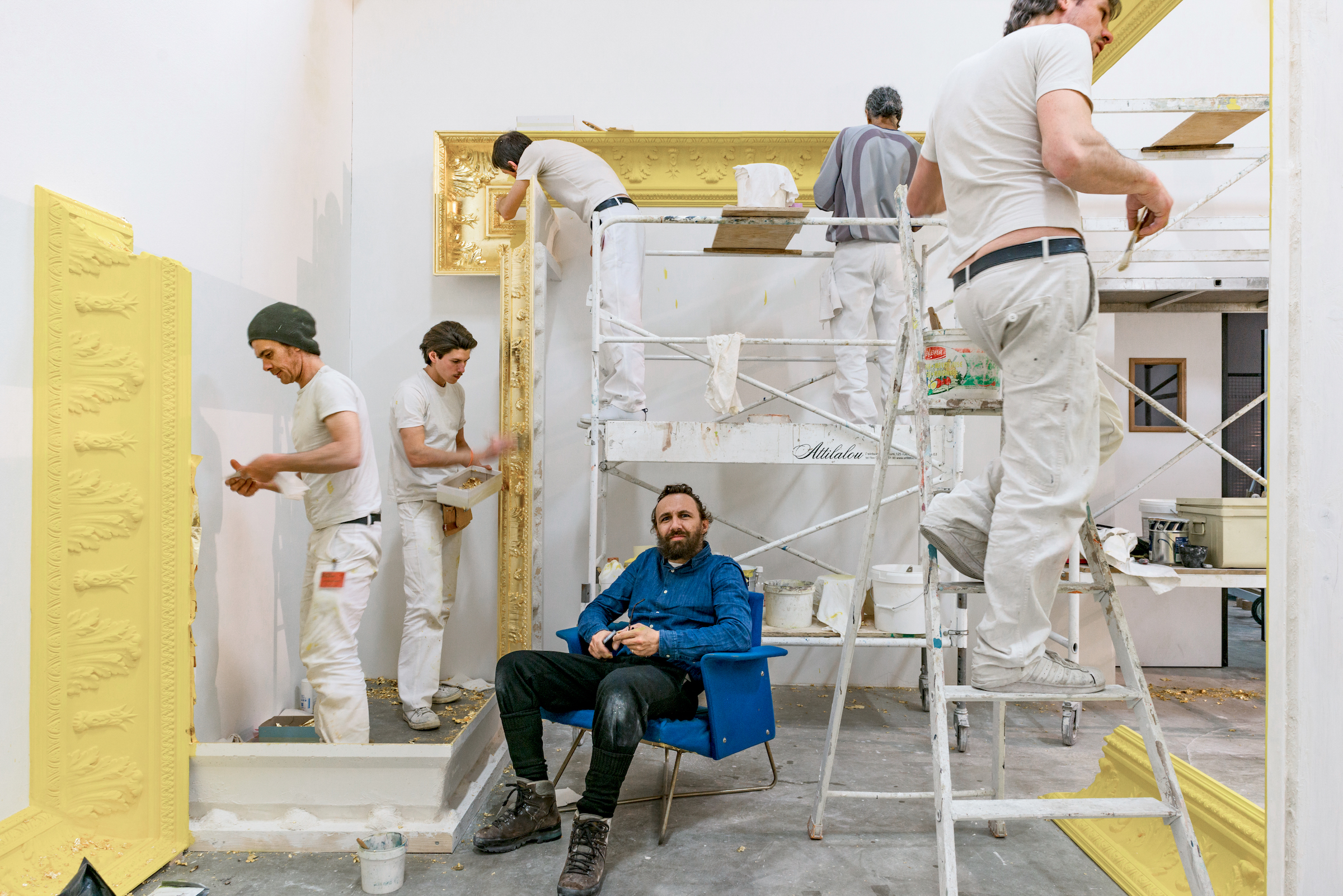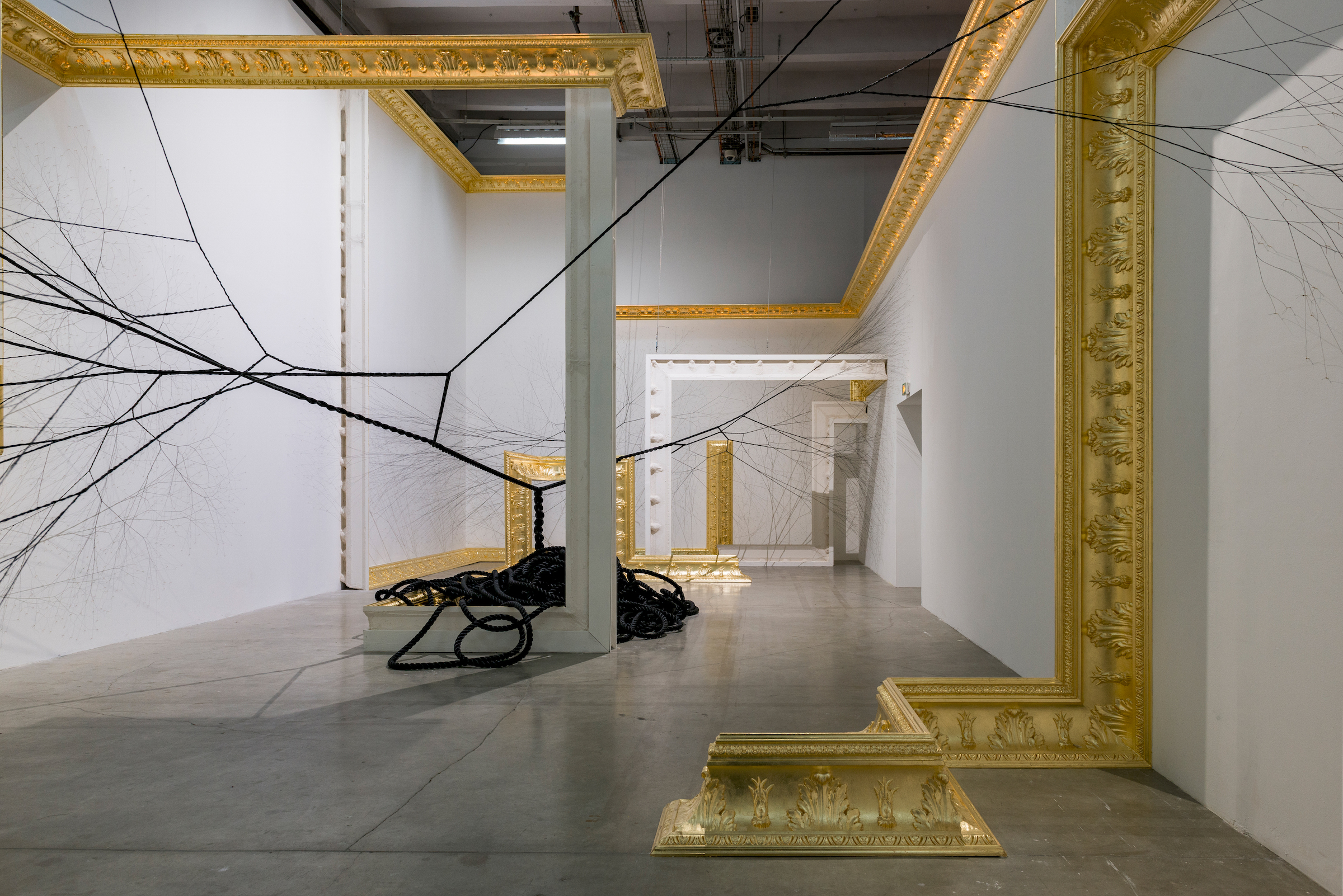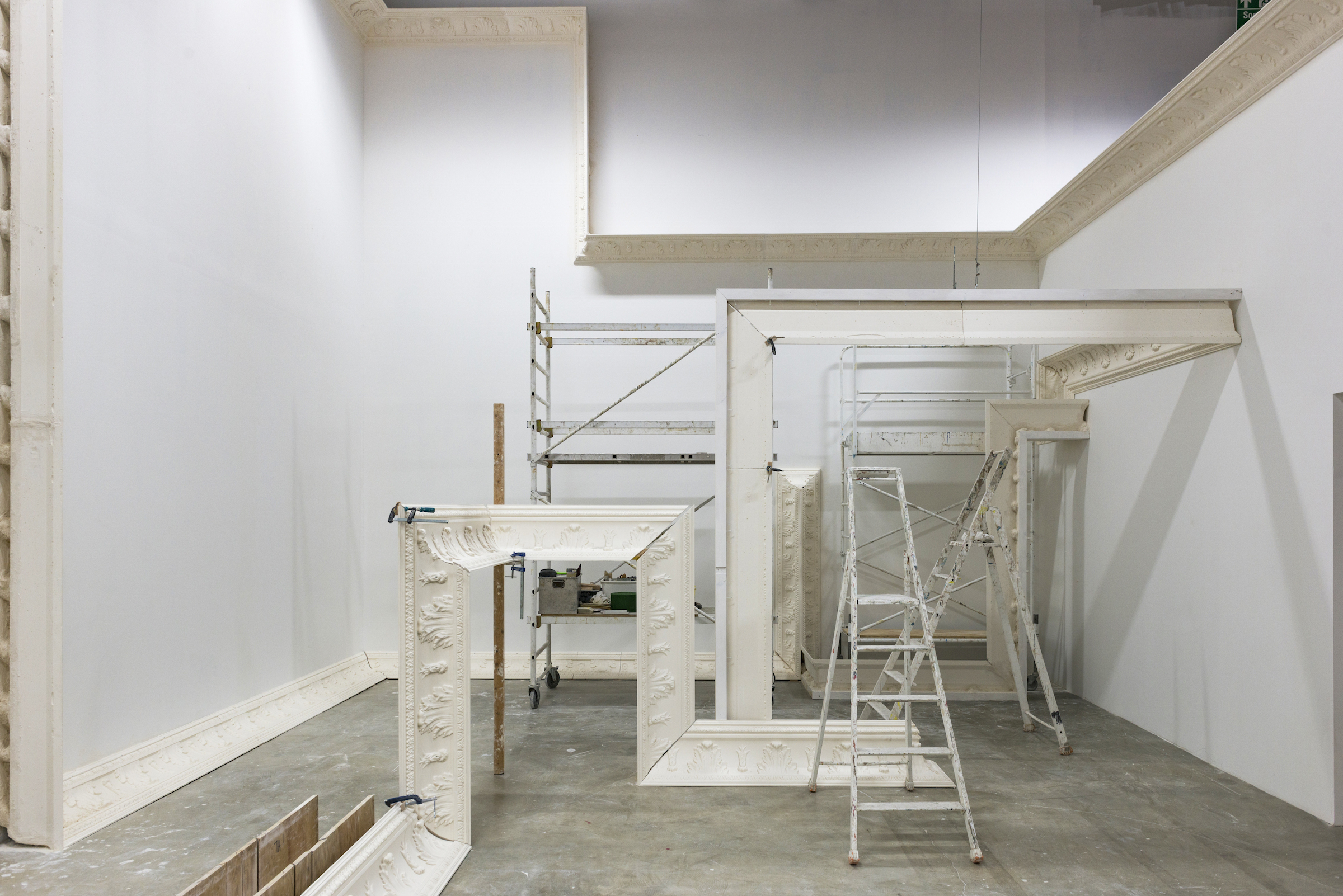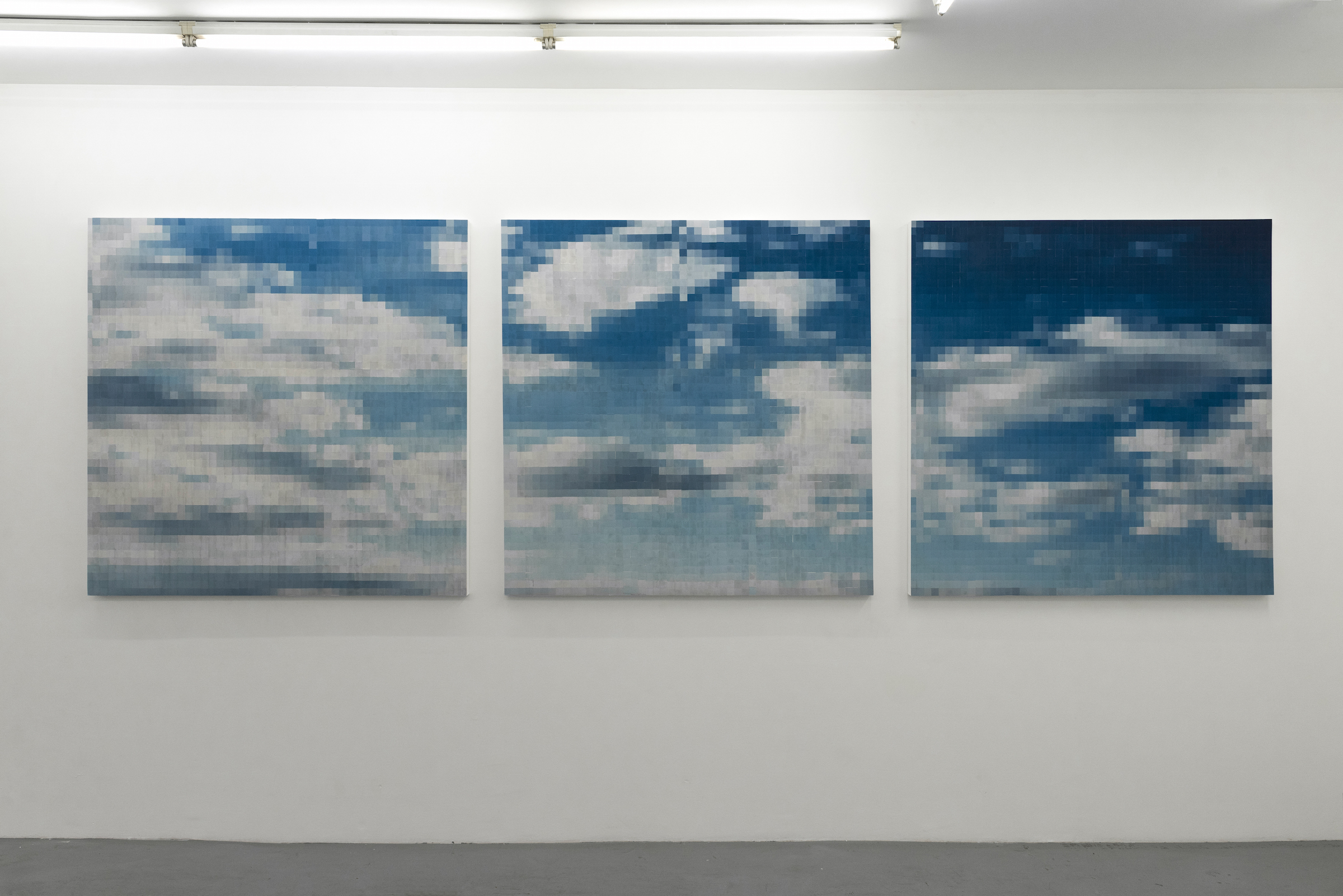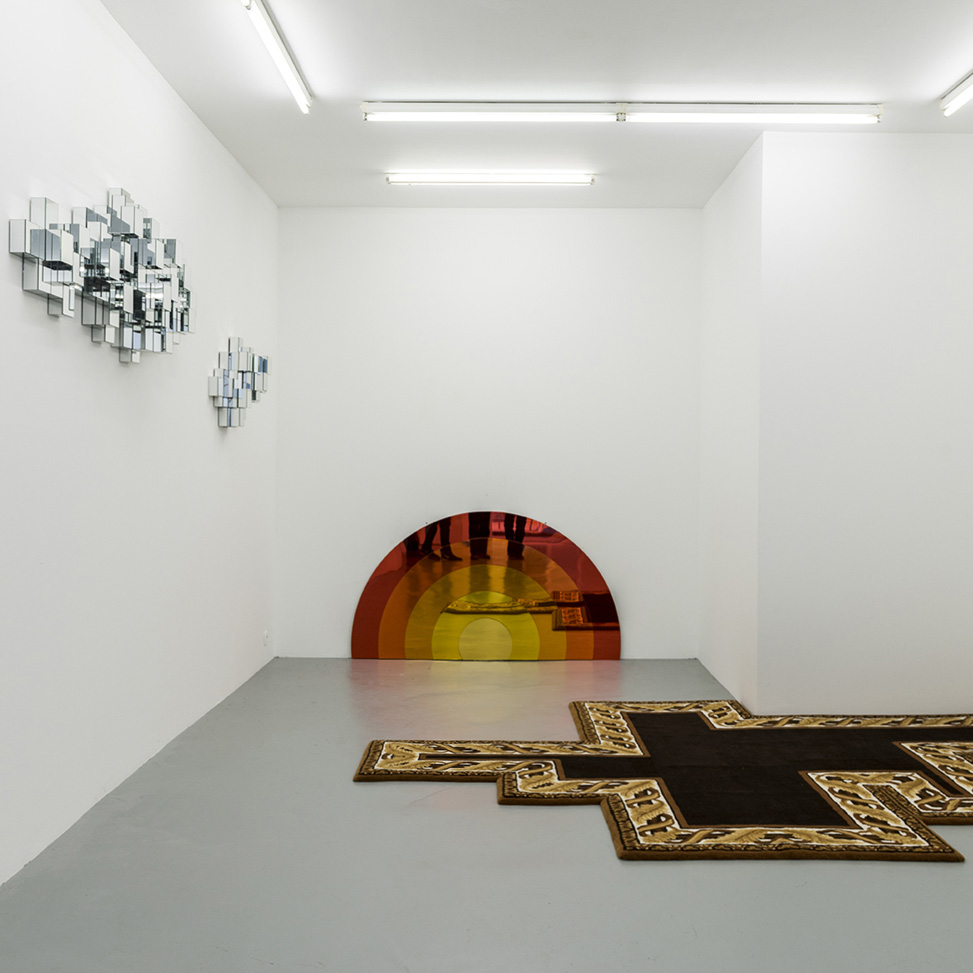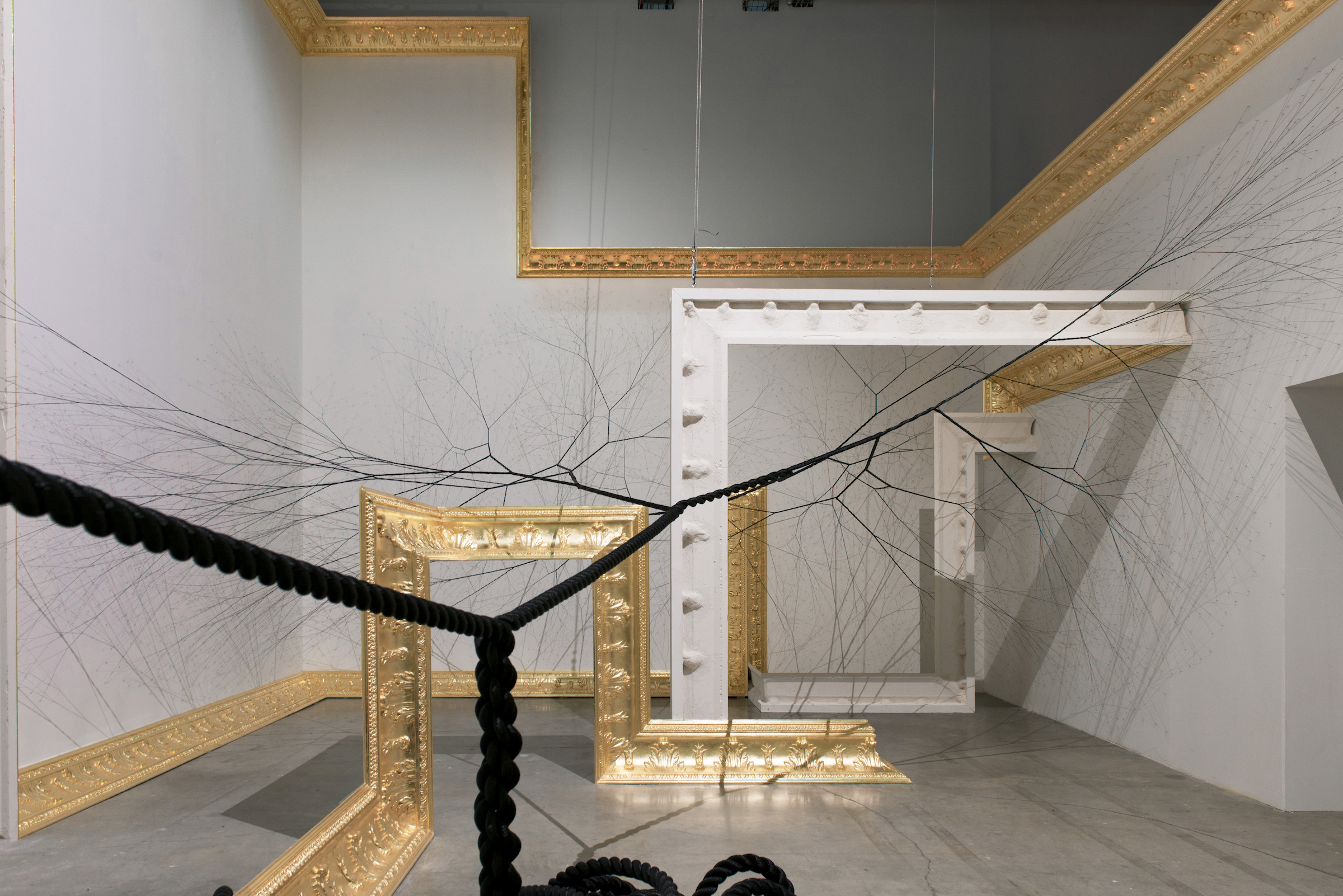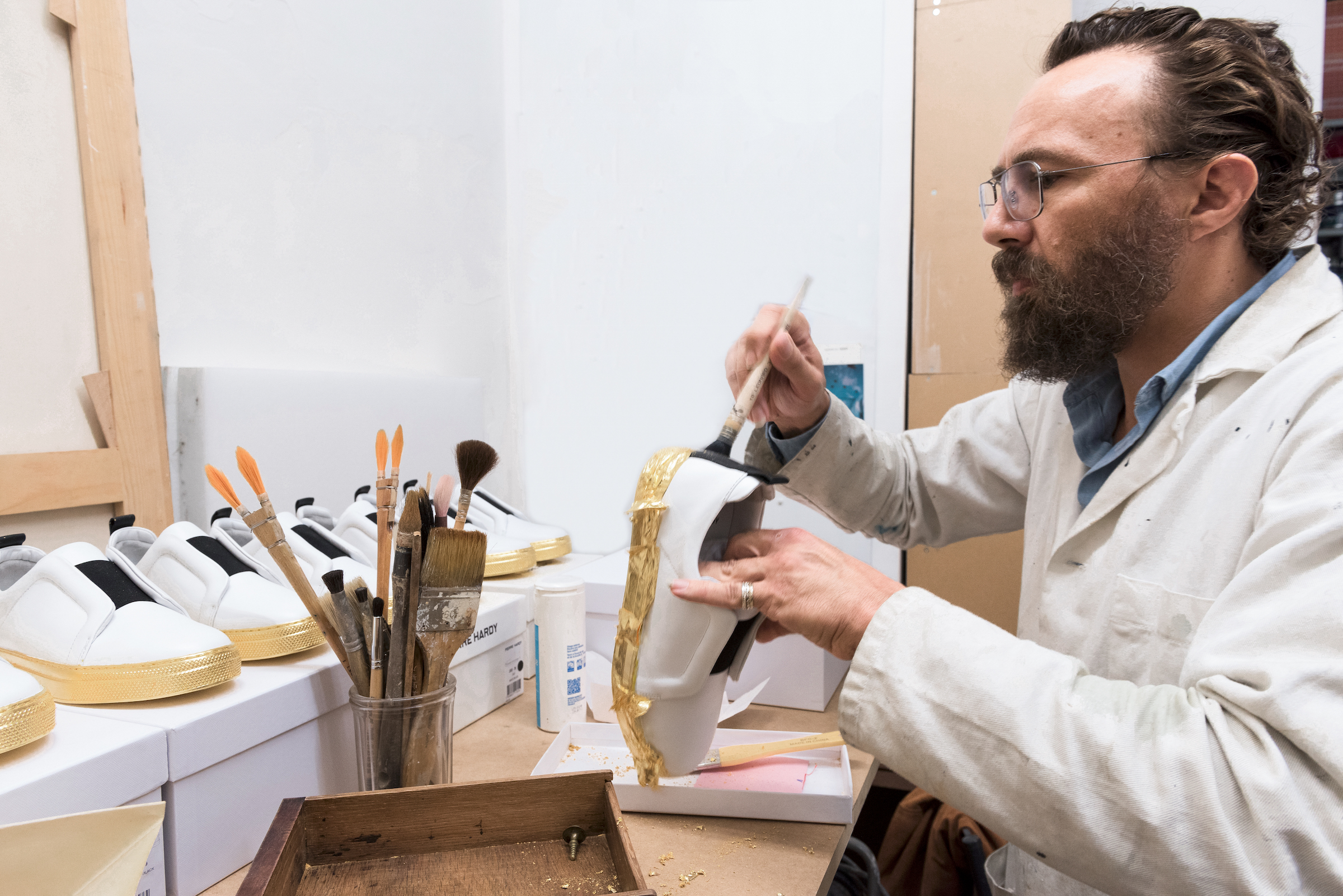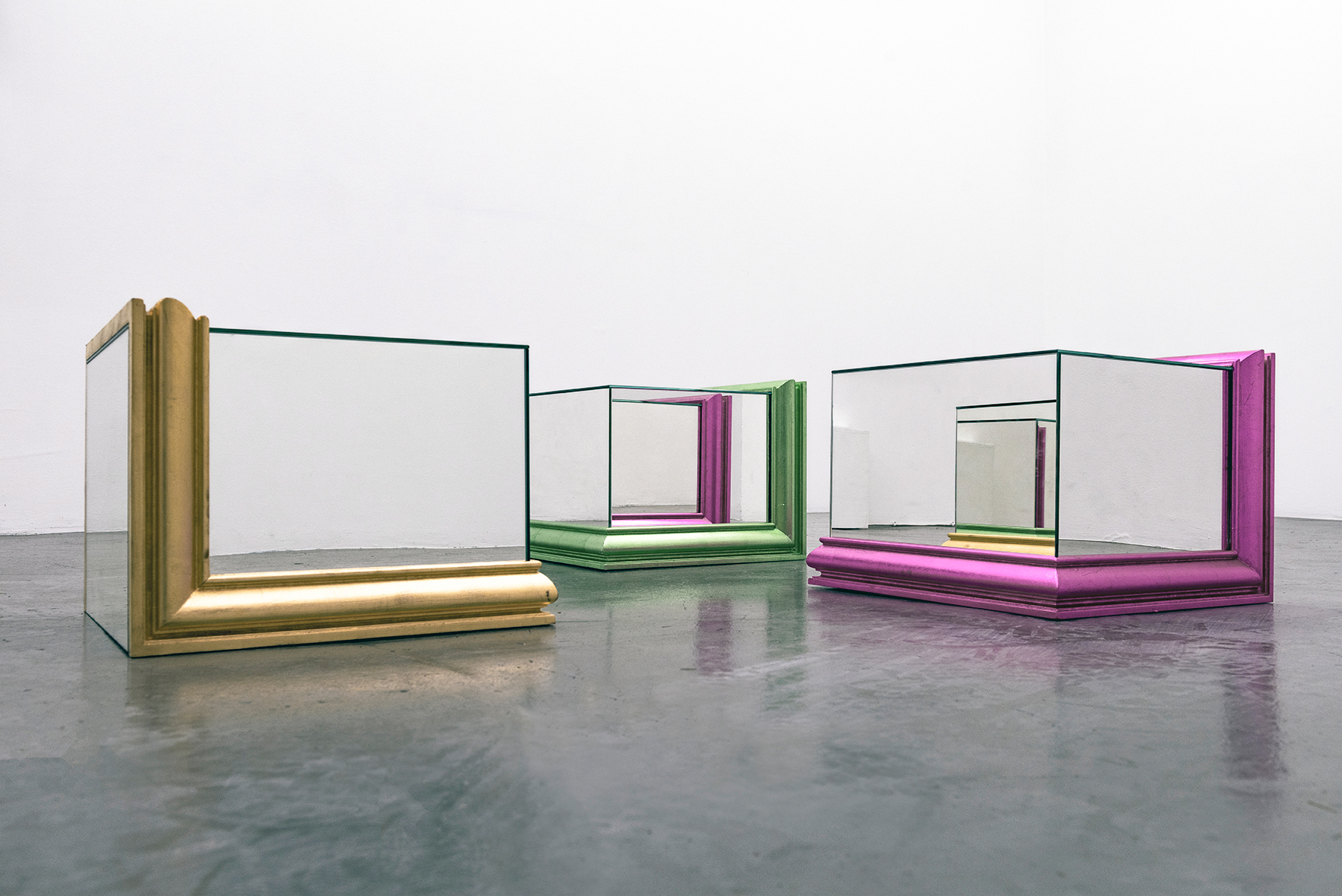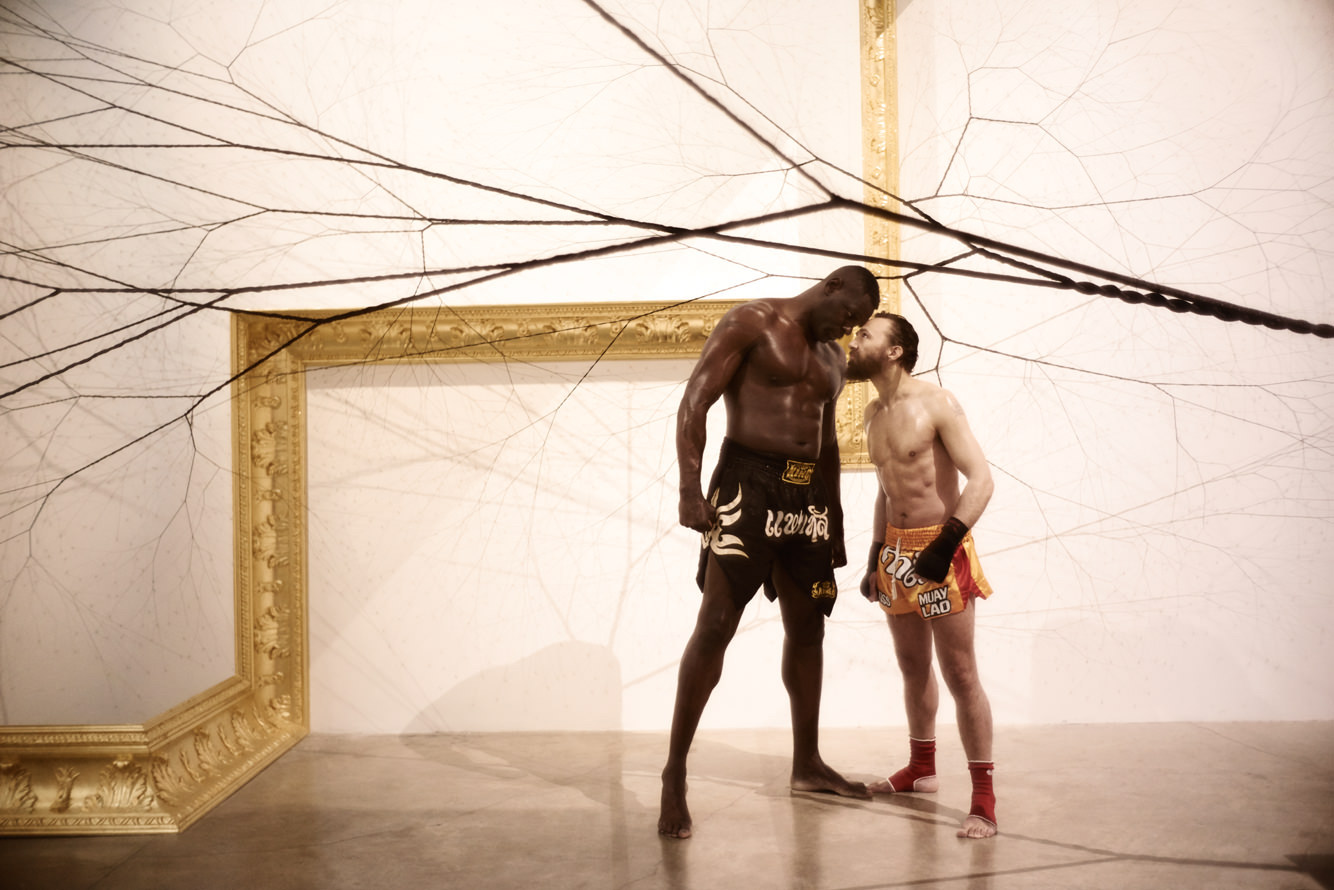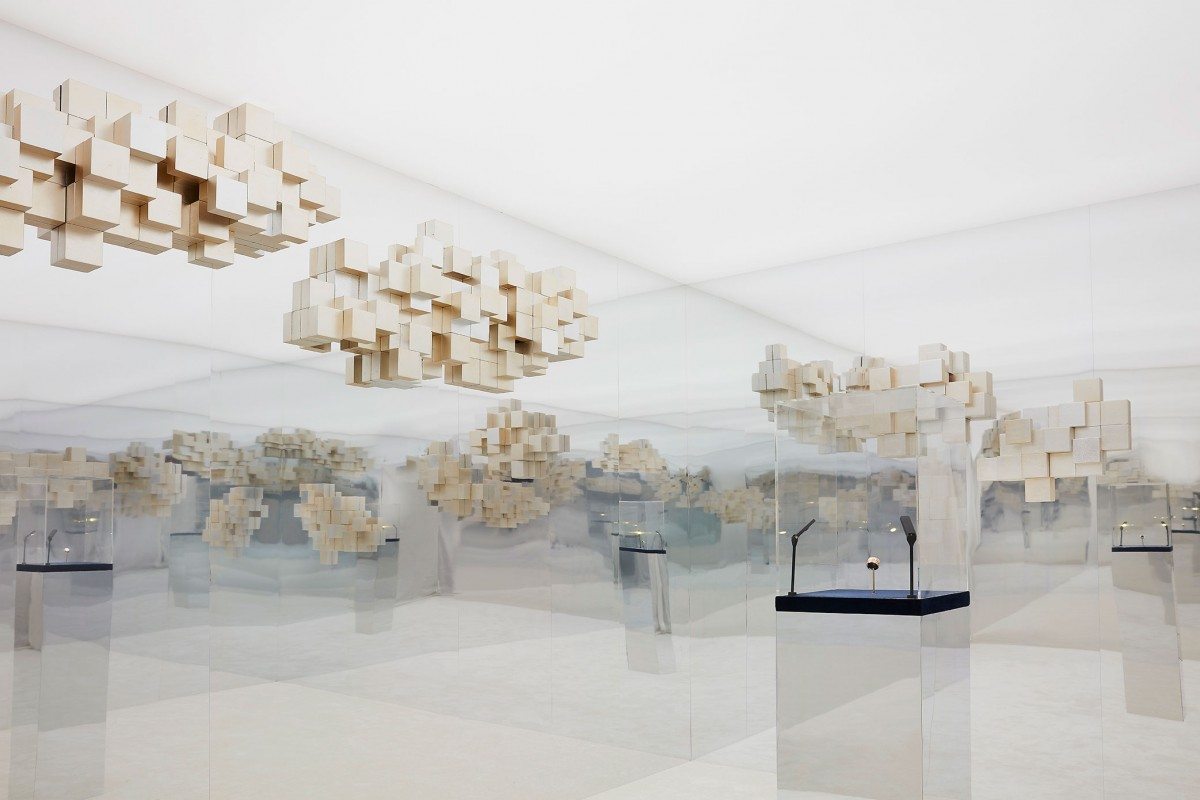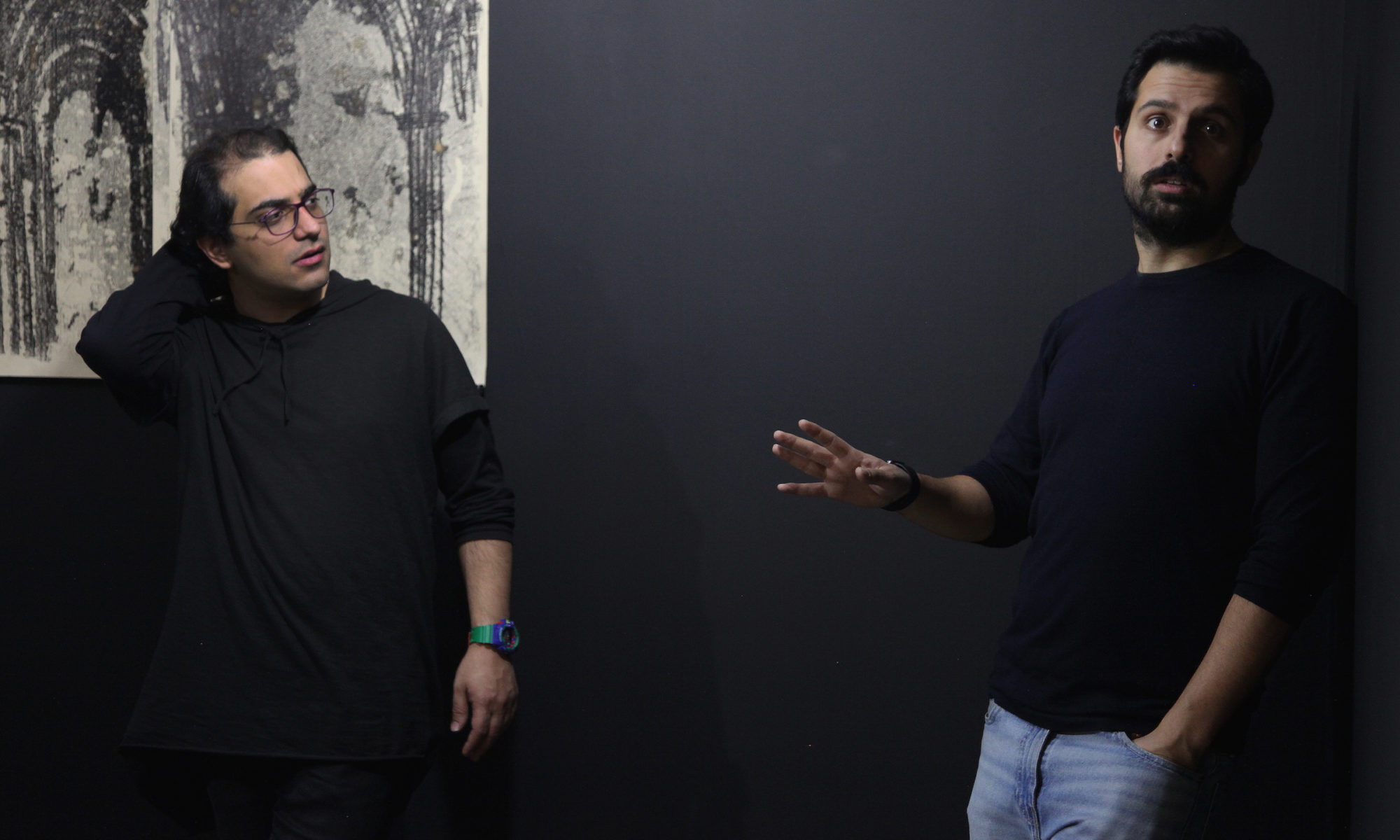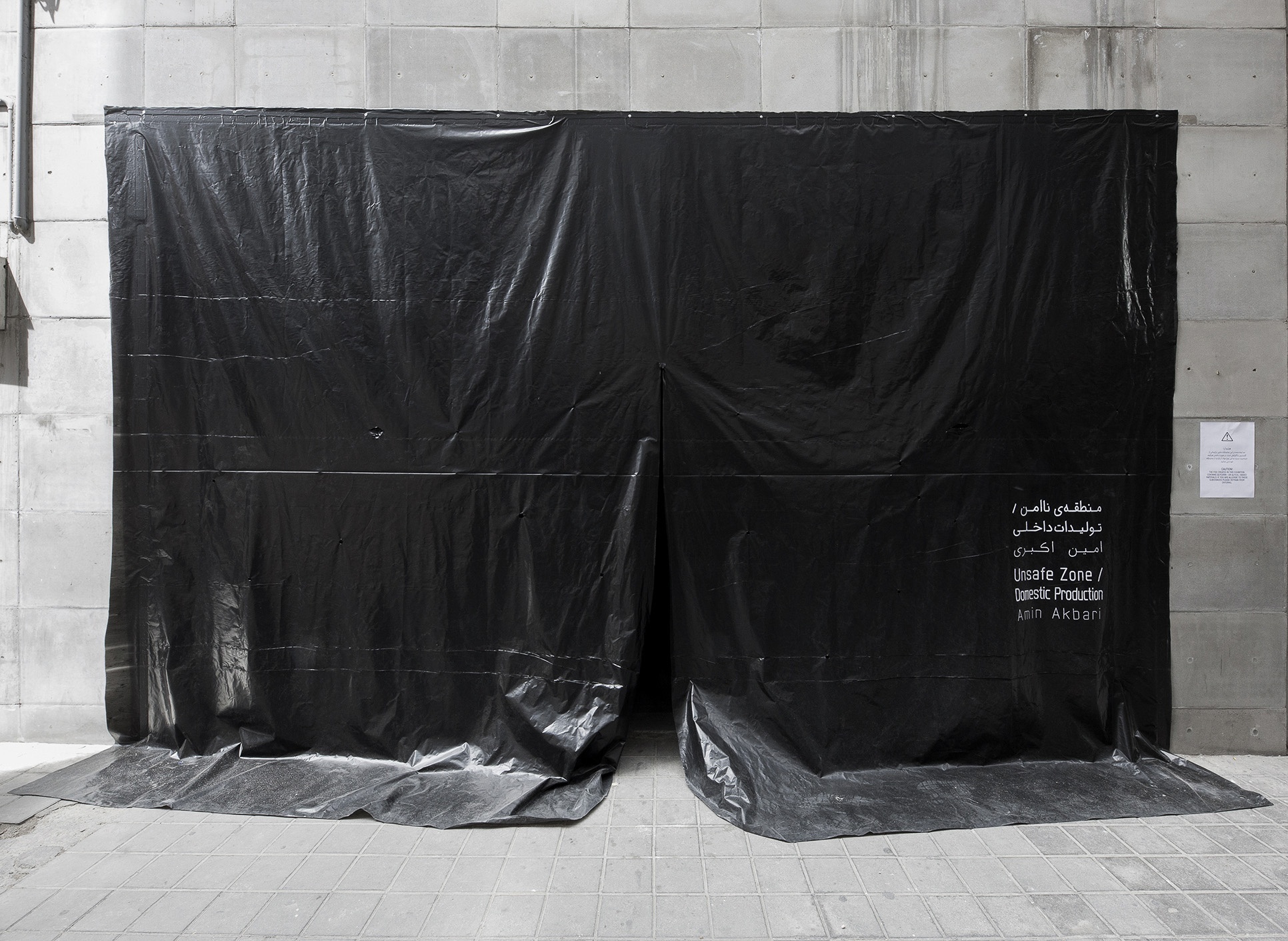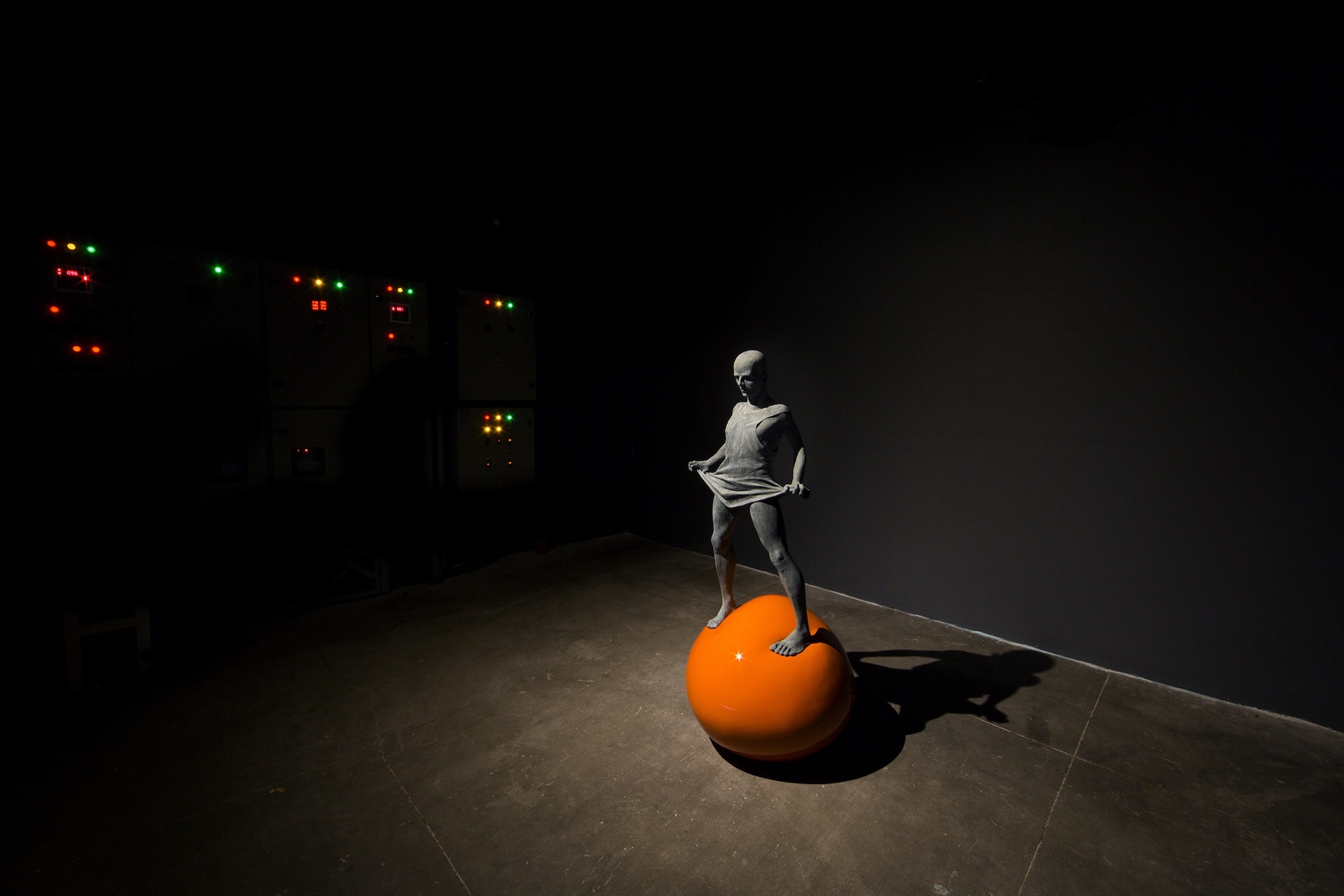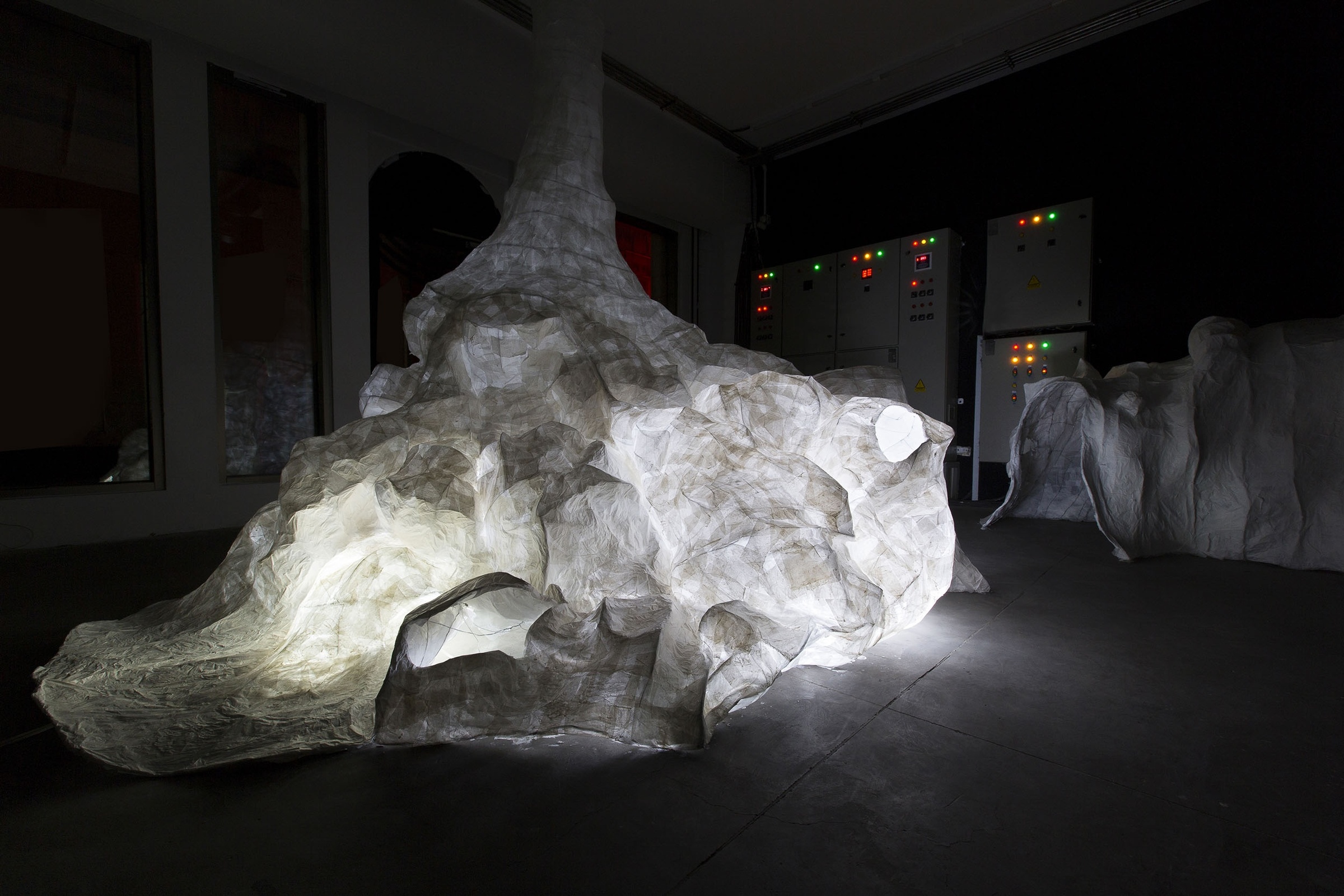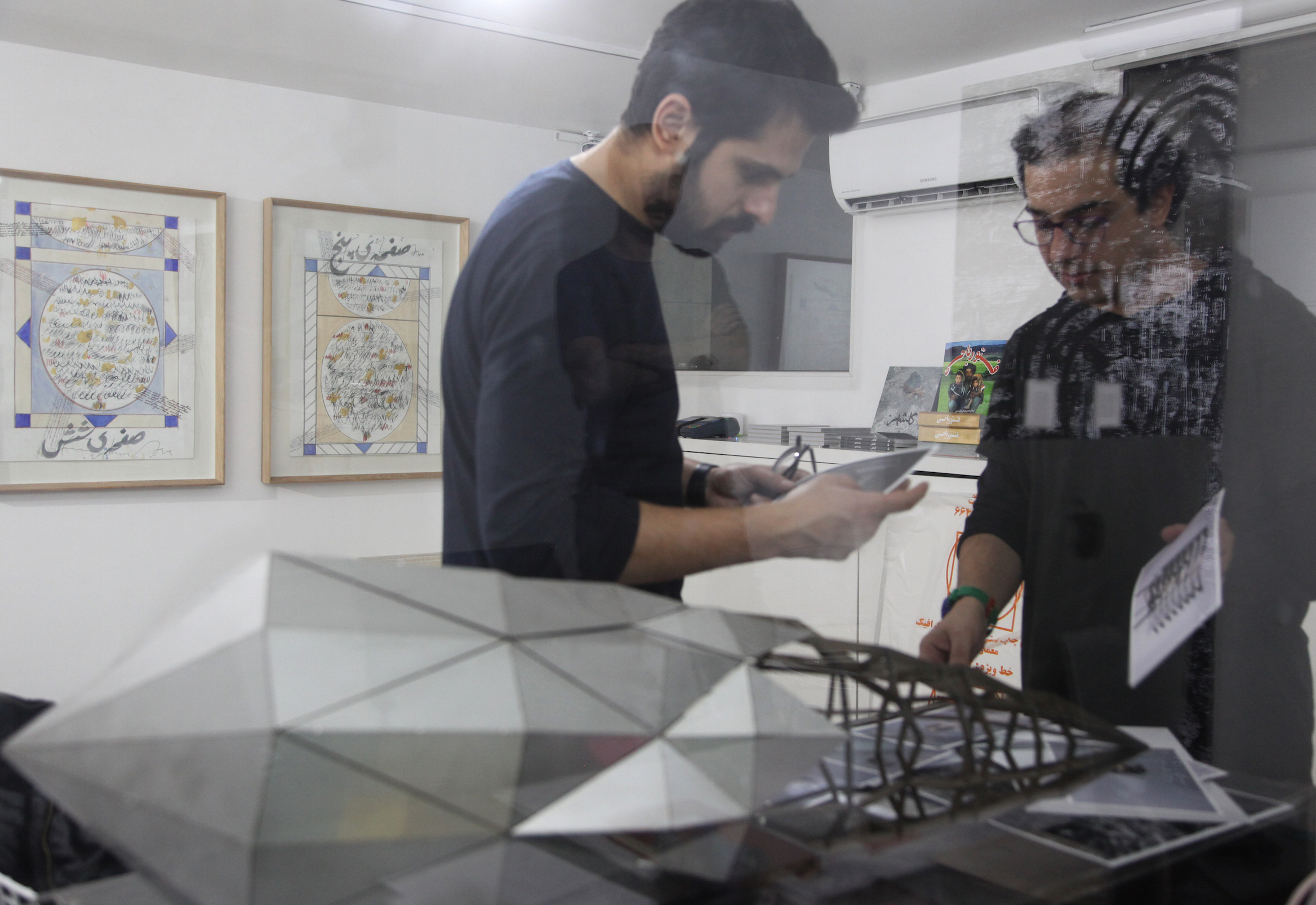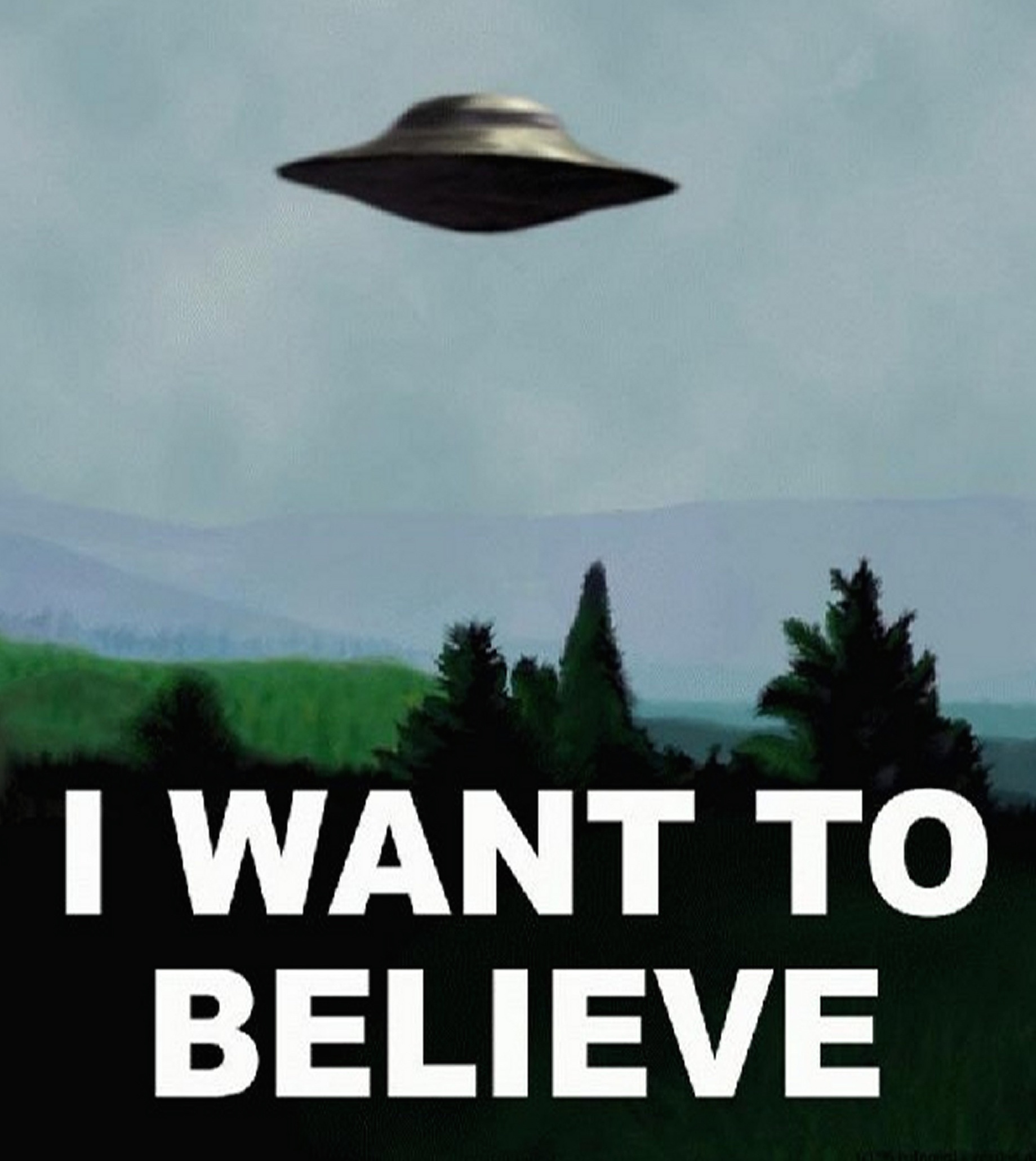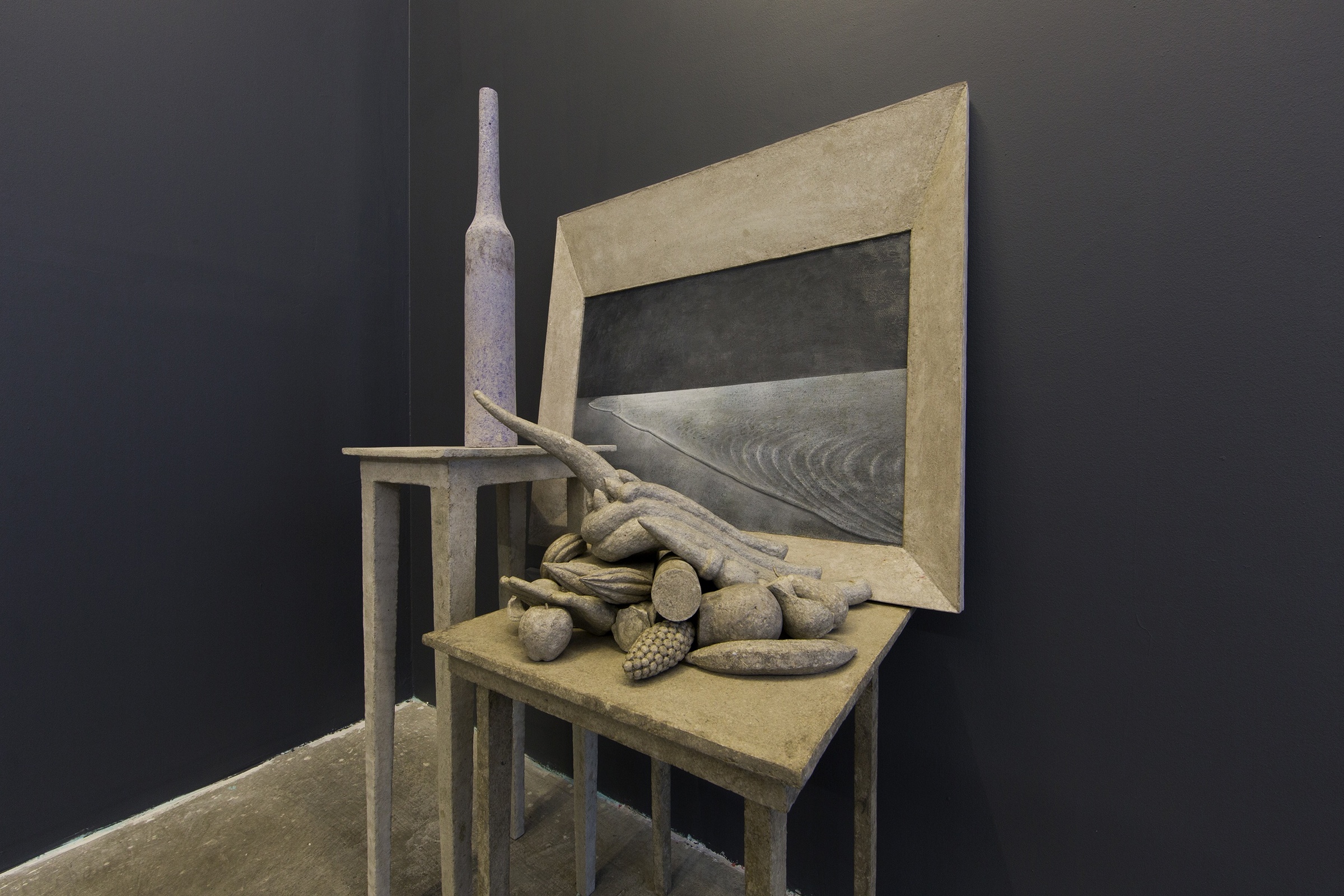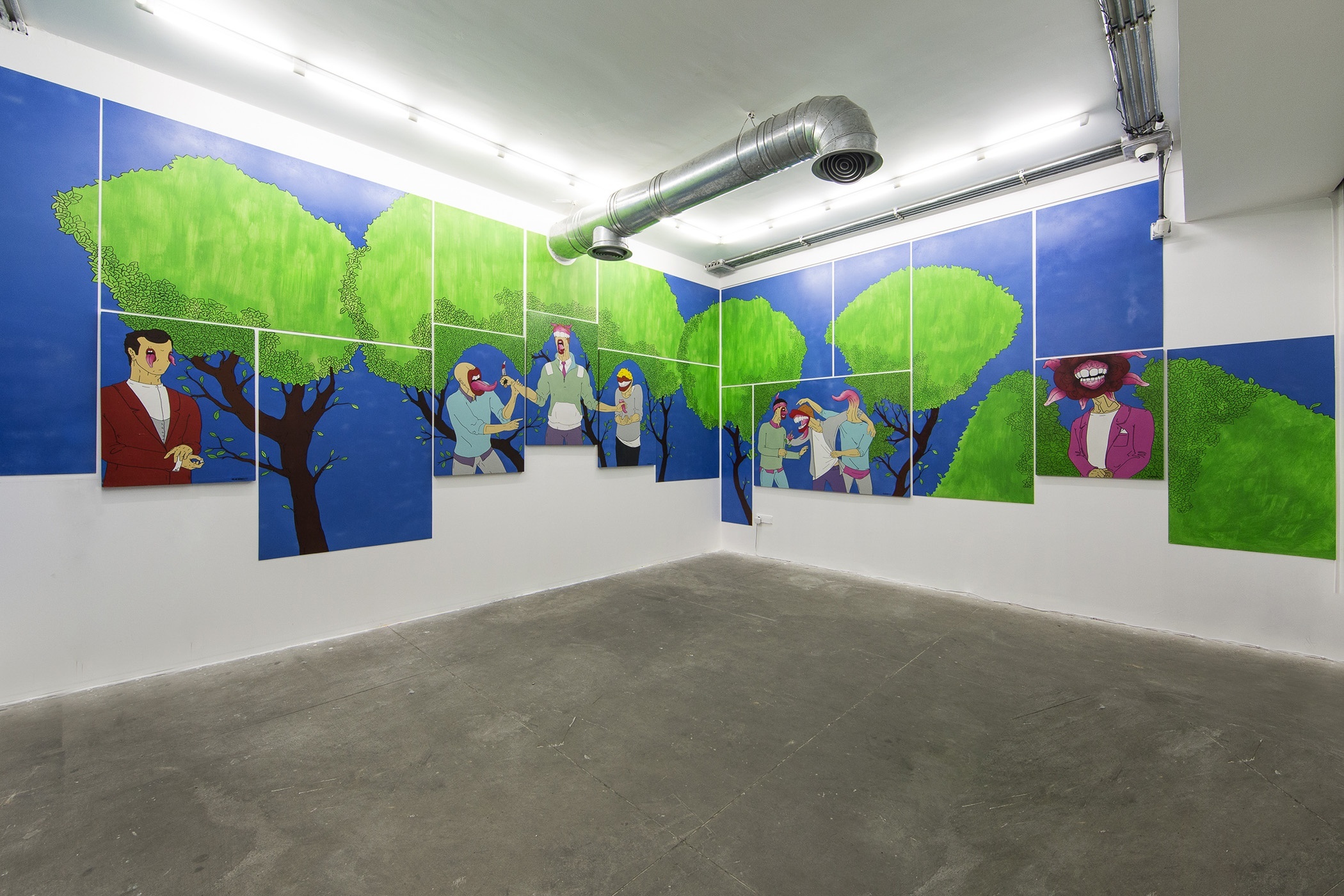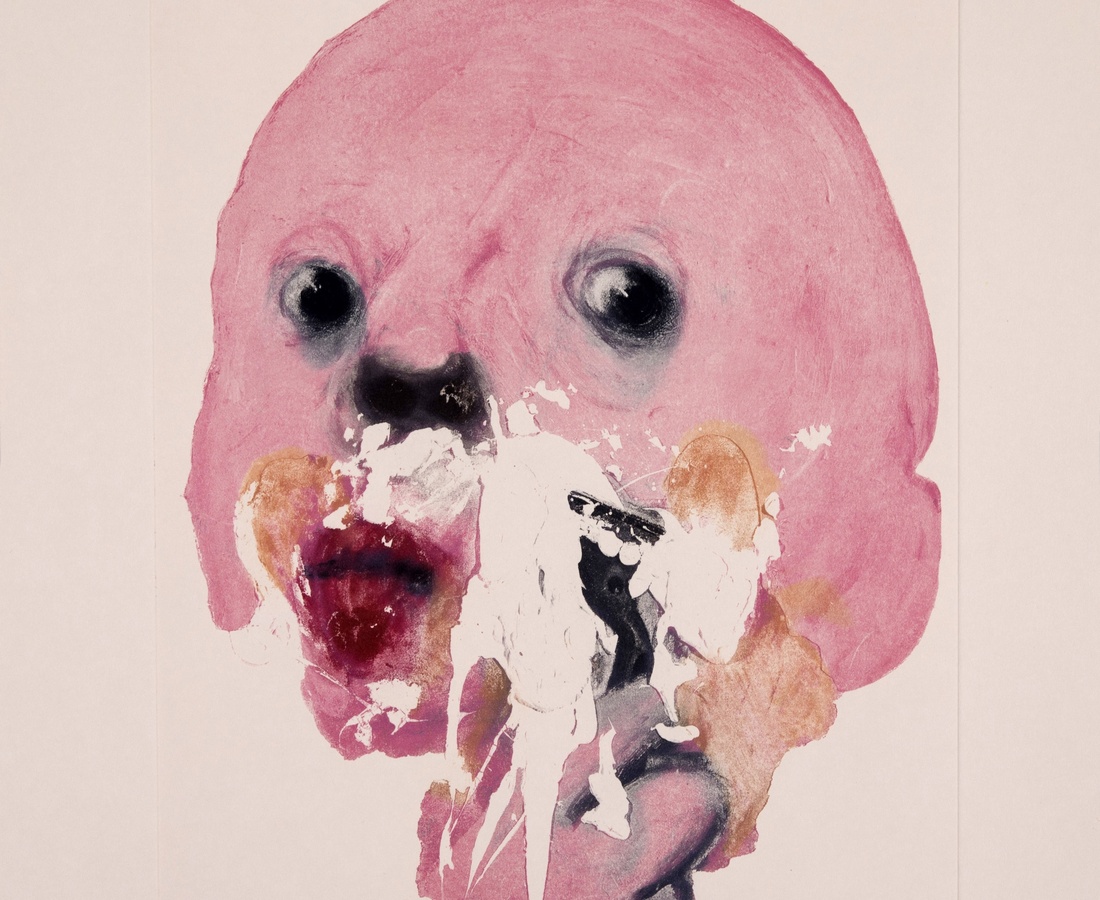SEPAND DANESH, Art is a corner of creation
Persisting, almost obsessive, eager for knowledge and attached to the art of painting the French-Iranian artist Sepand Danesh nourishes his artistic mind with literature and history. Fascinated by the corner, this hollow space often filled with melancholy and nostalgia, has become the main theme in his work.
With an intense desire to understand and to discover and inspired by the hyper-connected space of a hub, he has launched his latest project Hubtopia, a research program with the goal to create a bridge between art and science.
The creative universe of Sépànd Danesh is rich and lively where imagination and memory merge perfectly well.
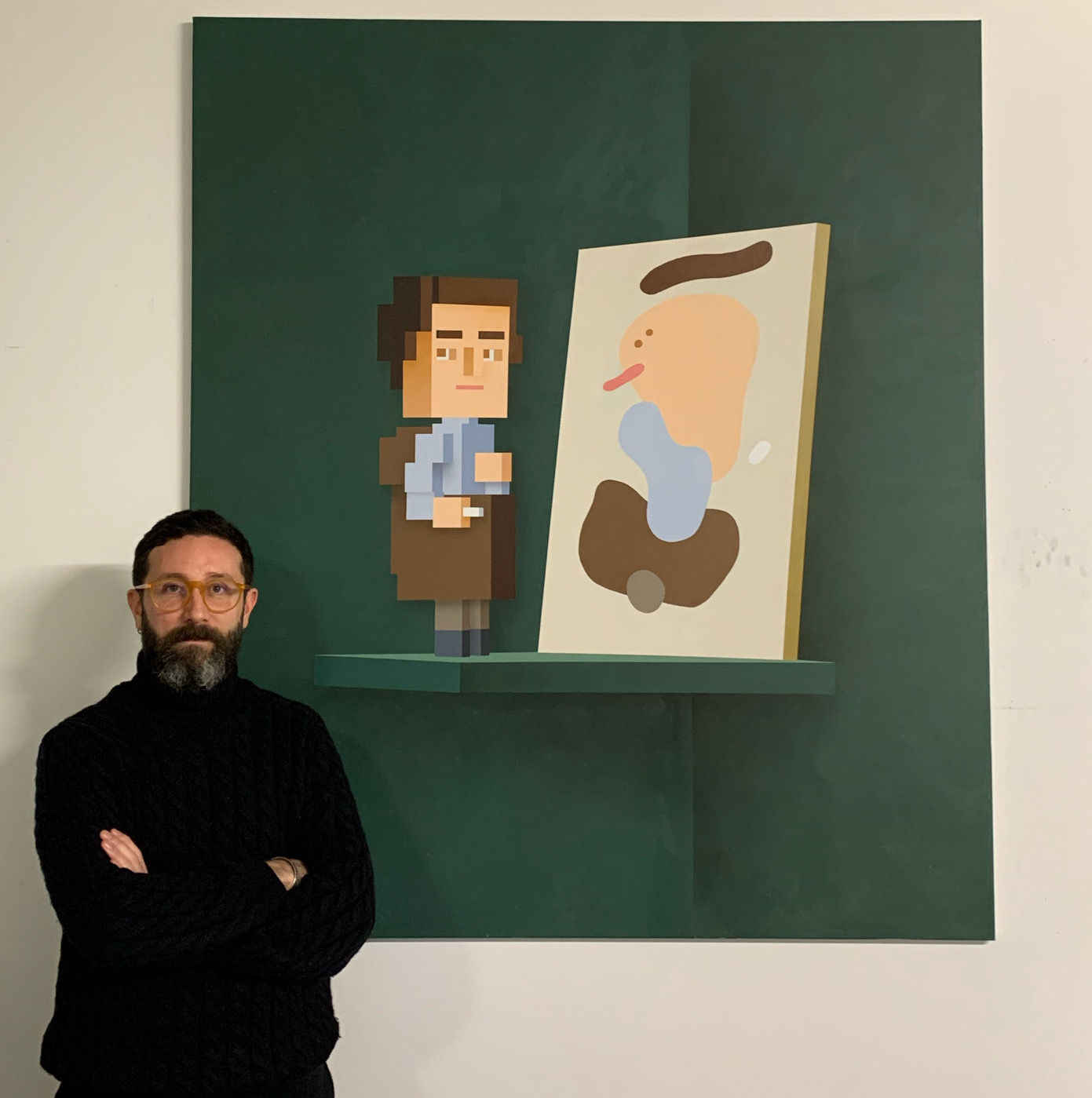
You have a very eventful life, moving from Iran to the US and then to France. What was the reason why you’ve started to draw?
I was around 13 years old when I moved to France with my family. I didn’t speak any French, so I’ve started to draw. My art teacher noticed my talent and supported me. Drawing became an opportunity to advance in life, and so I decided to go to art school.
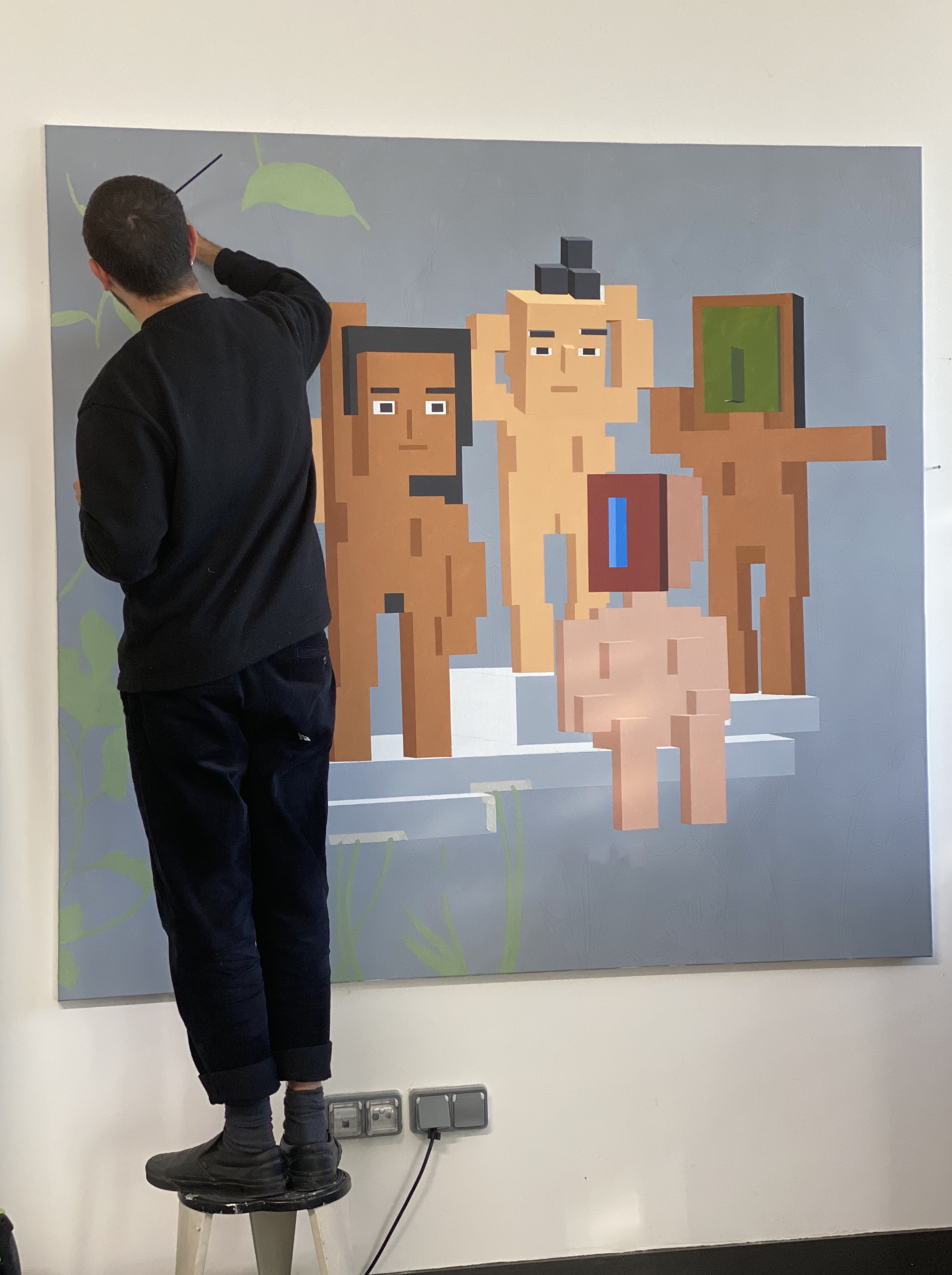
And you have managed to enter the Beaux Arts in Paris which is one of the most prestigious art schools in the world. How was it to be an art student there ?
After studying product design at the ENSAAMA Olivier de Serres in Paris, I was really lucky to get a scholarship to this prestigious art school and to have teachers such as Giuseppe Penne or Philippe Cognée. The entire ambiance, being far from the Parisian microcosm, the huge and exceptional library, being close to Louvre Museum, Musée d’Orsay and Centre Pompidou allowed me to concentrate on my studies and to discover my passion for art during those five years of study.
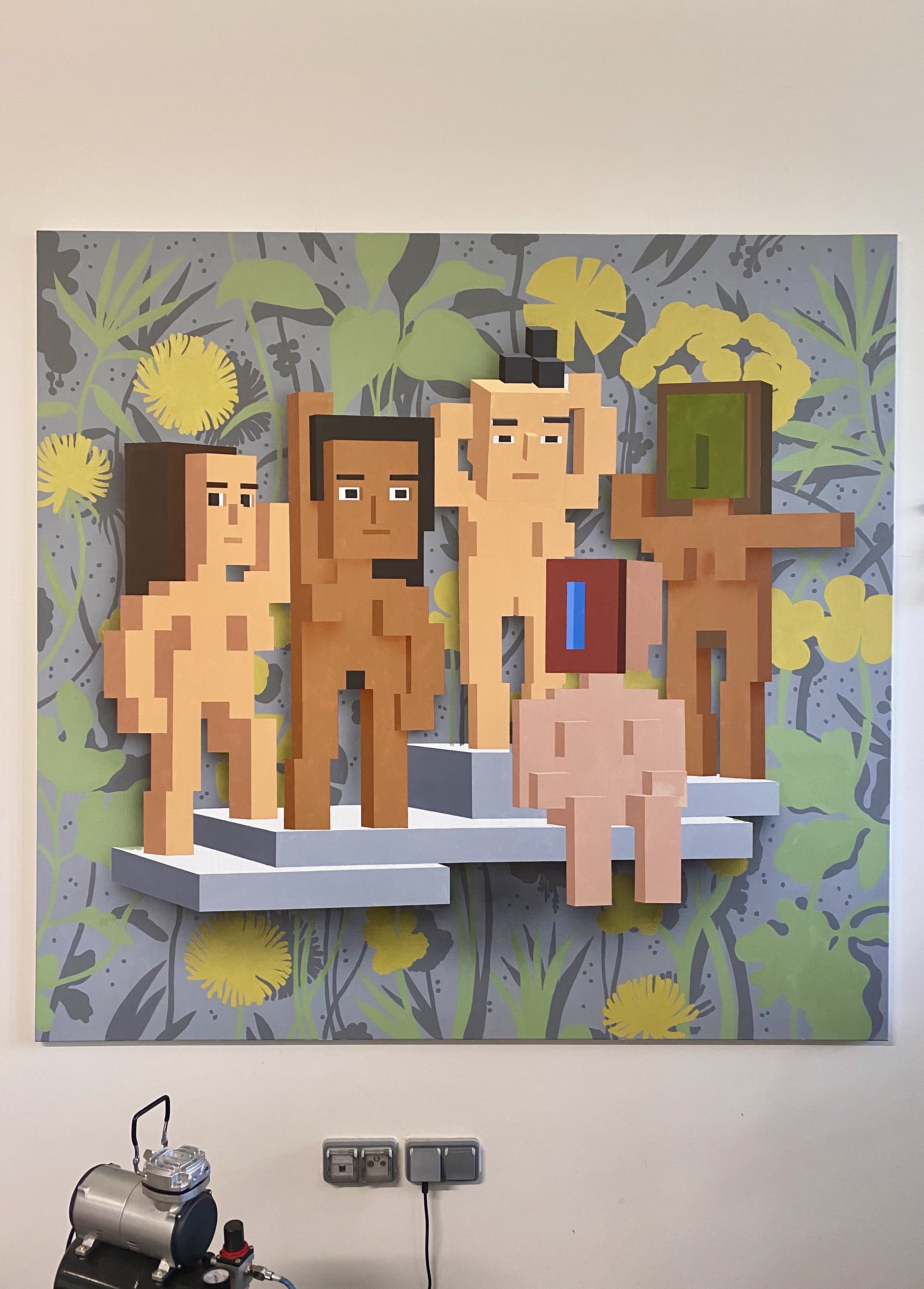
Looking at your work, it reminds me of Emile Zola words « Art is a corner of creation seen through a temperament ». Does this correspond to your work where corners are the main subject ?
Marcel Proust once said,
“A painting is like the appearance of a corner of a mysterious world. We know fragments of this world by looking at other paintings of the same artist. You can also have this kind of sensation when you’re talking to people in a salon, and all of a sudden you look up and your eyes are drawn to a painting that you don’t know but that evokes something so familiar in you, like a memory from the past.”
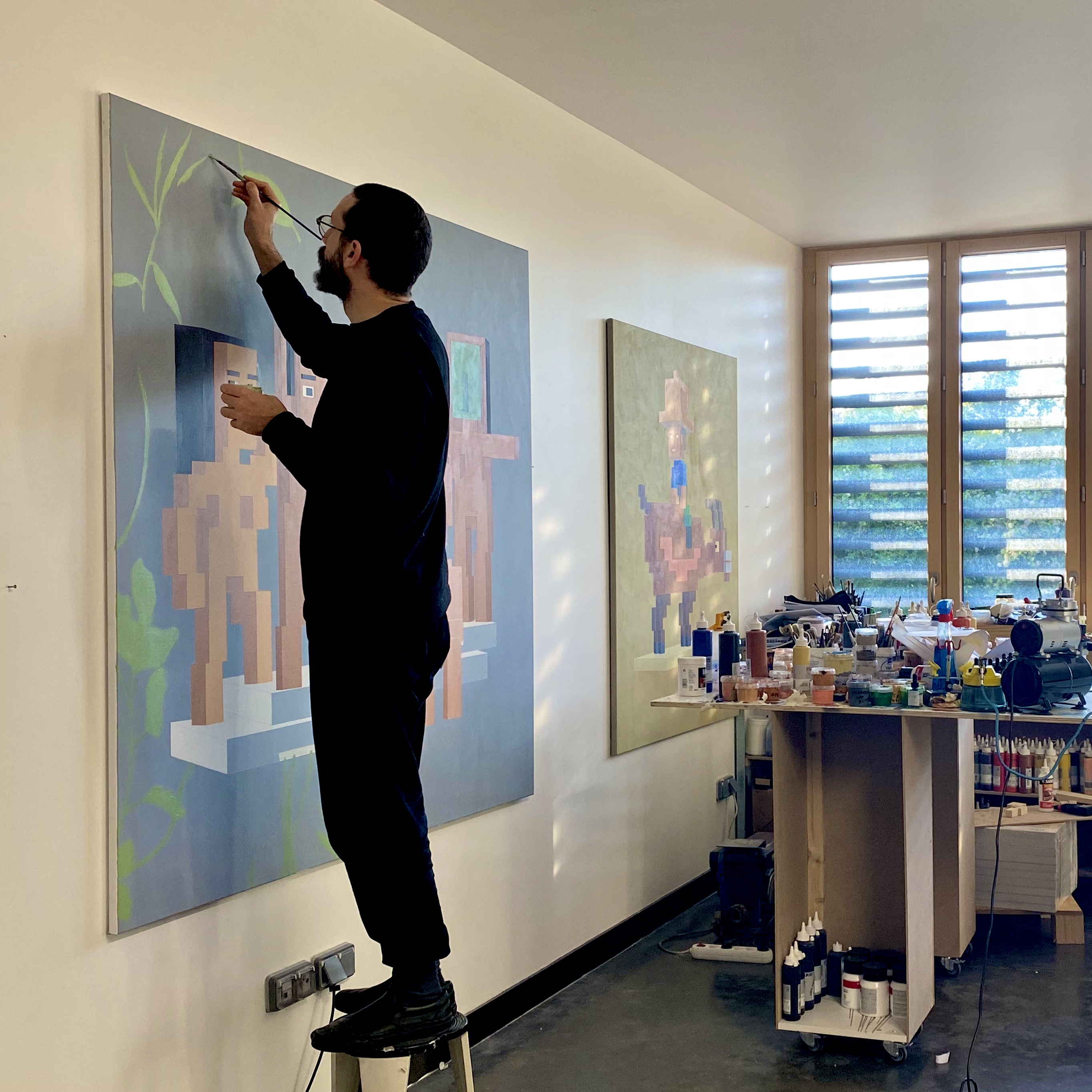
You’re by the way a huge fan of Marcel Proust and you observe for a very long time almost obsessively the way people express their thoughts. The encyclopedia of imagination, a special grid system that needs to be filled with drawings, has been the result of your observation, which allows you to break language barriers and apprehend the world without using any words.
I’ve often felt stuck, stuck in a culture, in a language, in a country, in a relationship, in a thought, in a body, on a planet.
The only solution that I’ve found to get out of this, is to change immediately my way of thinking, to switch quickly from one thought to another, to renew and update the flow of ideas that are going through my mind.
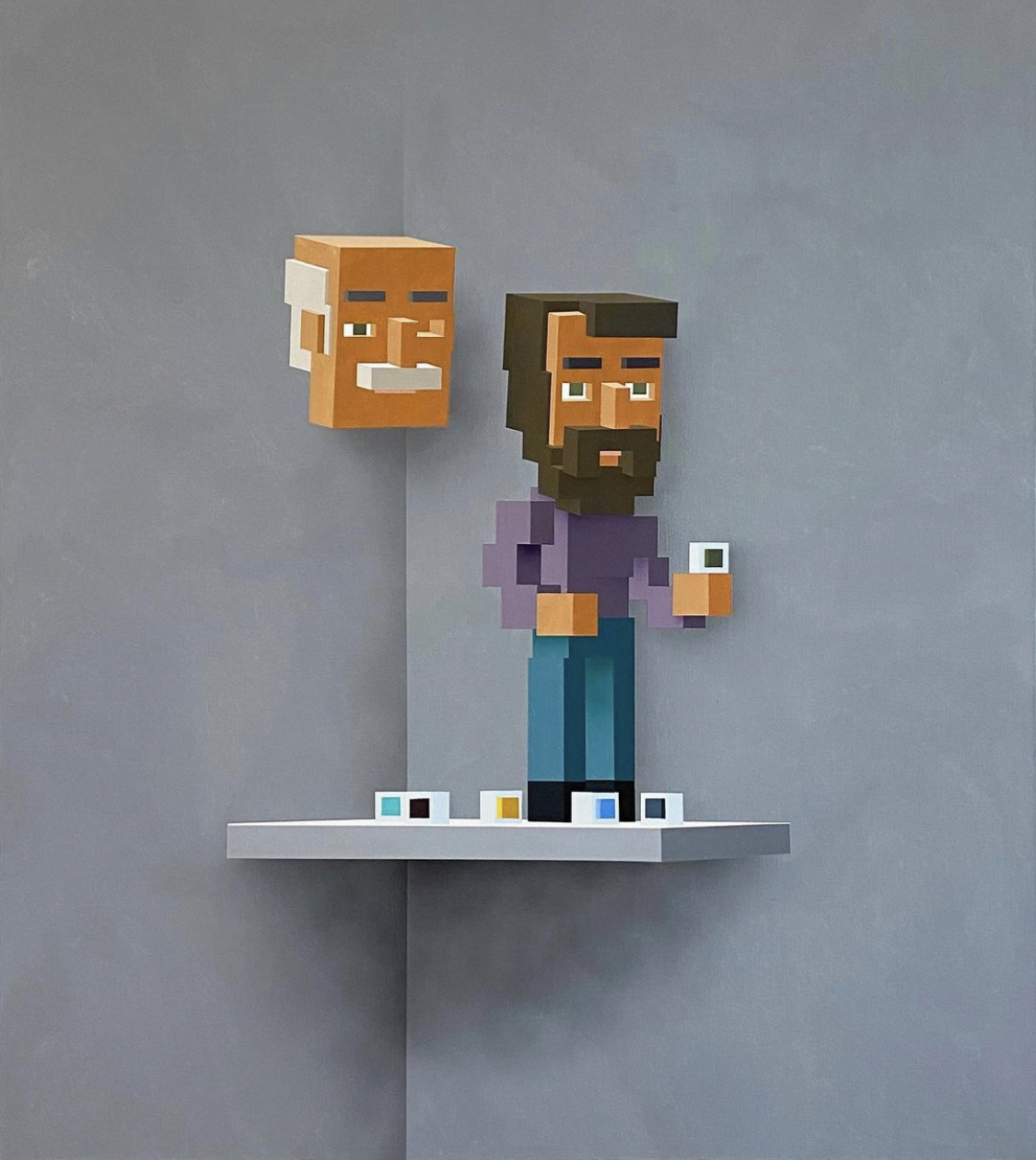
When I was younger, I had this constant urge to escape. This has pushed me to invent this grid system in order distract myself constantly from my thoughts. But I wanted to find the perfect grid and so my research has been divided into three concepts: domestication, connection and dispersion.
That’s how I started to paint corners. I wanted to draw attention to this vertical and hollow space, without neither a floor nor a ceiling, that blocks you and obliges you to escape.
The question of how to get away from the human condition keeps being the center of my obsession.
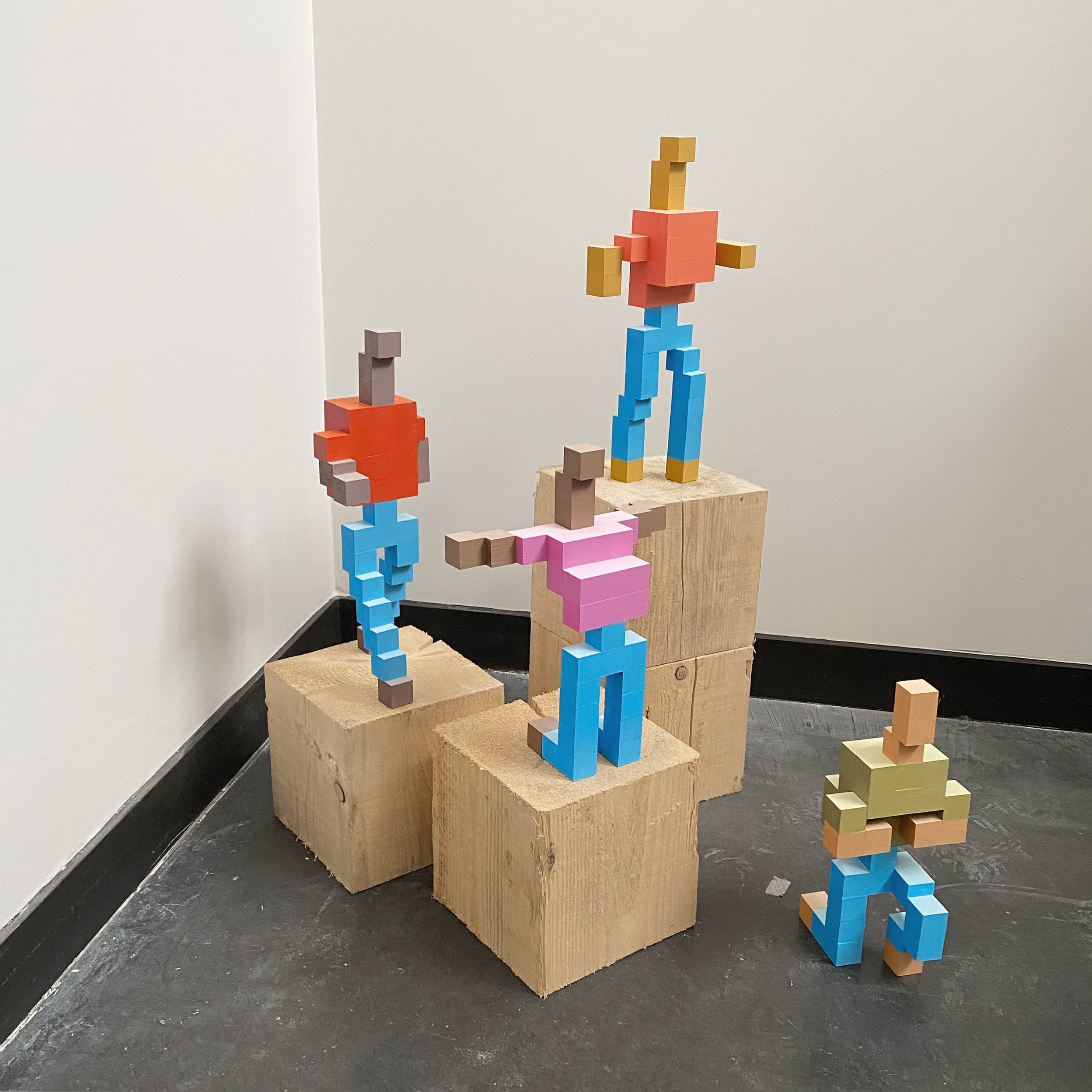
You’ve pushed this almost obsessive observation of the corner, or as we call it nowadays « of the hub », even further by creating « Hubtopia », a multi-disciplinary platform inviting people of very different professional backgrounds in order to show in a more scientific way the different perspectives of a hub.
Could you define a little bit more your concept of « Hubtopia »?
Hubtopia is a neologism that I’ve invented by connecting the word « hub » (the effective center of an activity, region or network) and « topos » the classical greek word for space or a method for developing arguments.
Hubtopia is a research program split into three platforms: web (www.hubtopia.org), events and publishing always based on the studies of the « hub ».
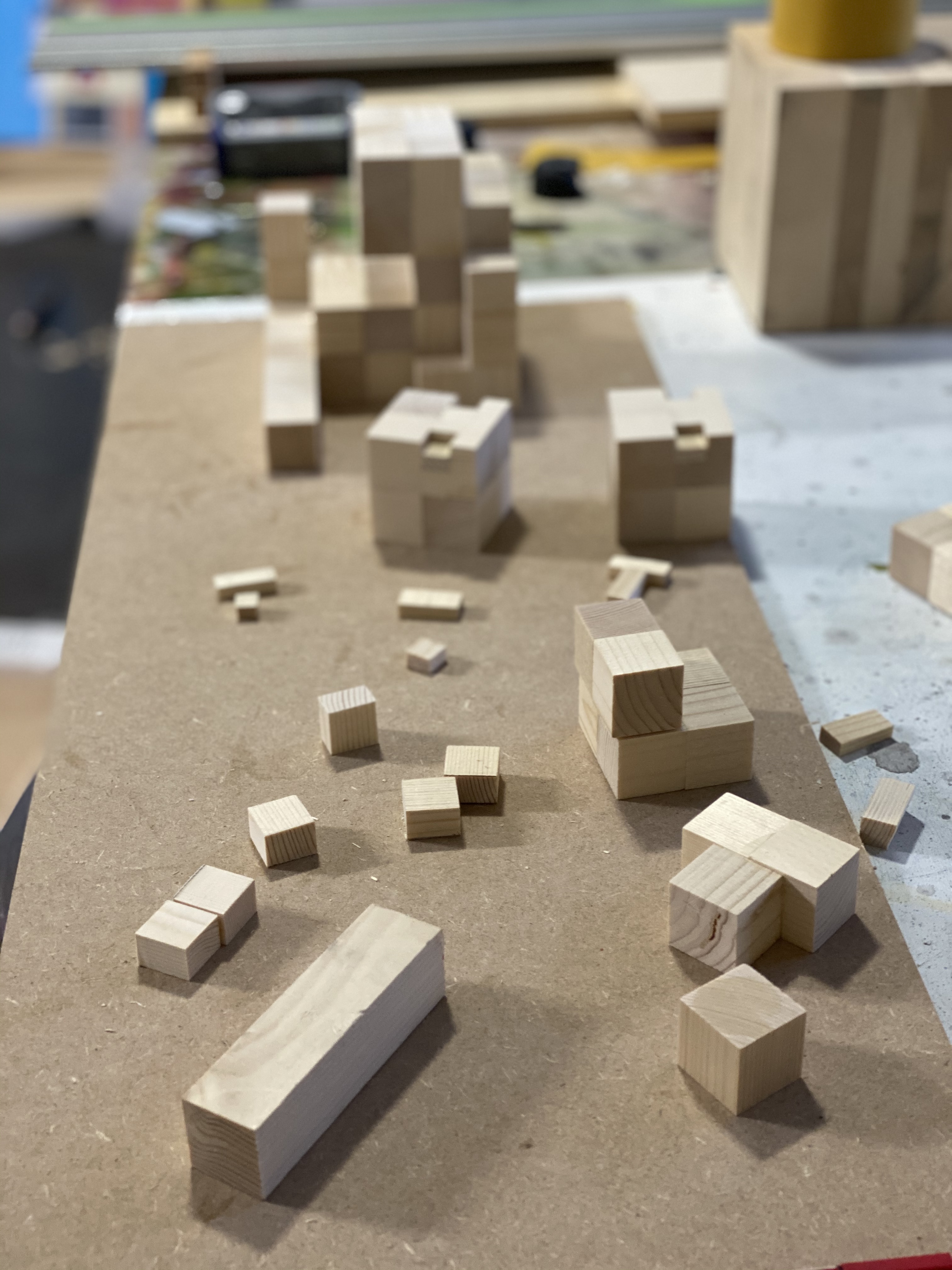
You organize a lot of conferences around Hubtopia and educational workshops which creates an interesting access to your creative universe.
Is it important for you that your art is easily accessible?
Schools, hospitals and prisons are places where people feel stuck more than anywhere else. I felt the urge to share this feeling of being blocked with other people. That’s why I have organized these art workshops where I give other people (around 900 people until now) the opportunity to draw by using my grid system.
Art has always helped me and still helps me to break out of my human condition. Why not creating this easy access to my art if it can have the same positive impact on other people.
I’ve been also contacted by a stage director to transform my workshops into performances. To be continued…
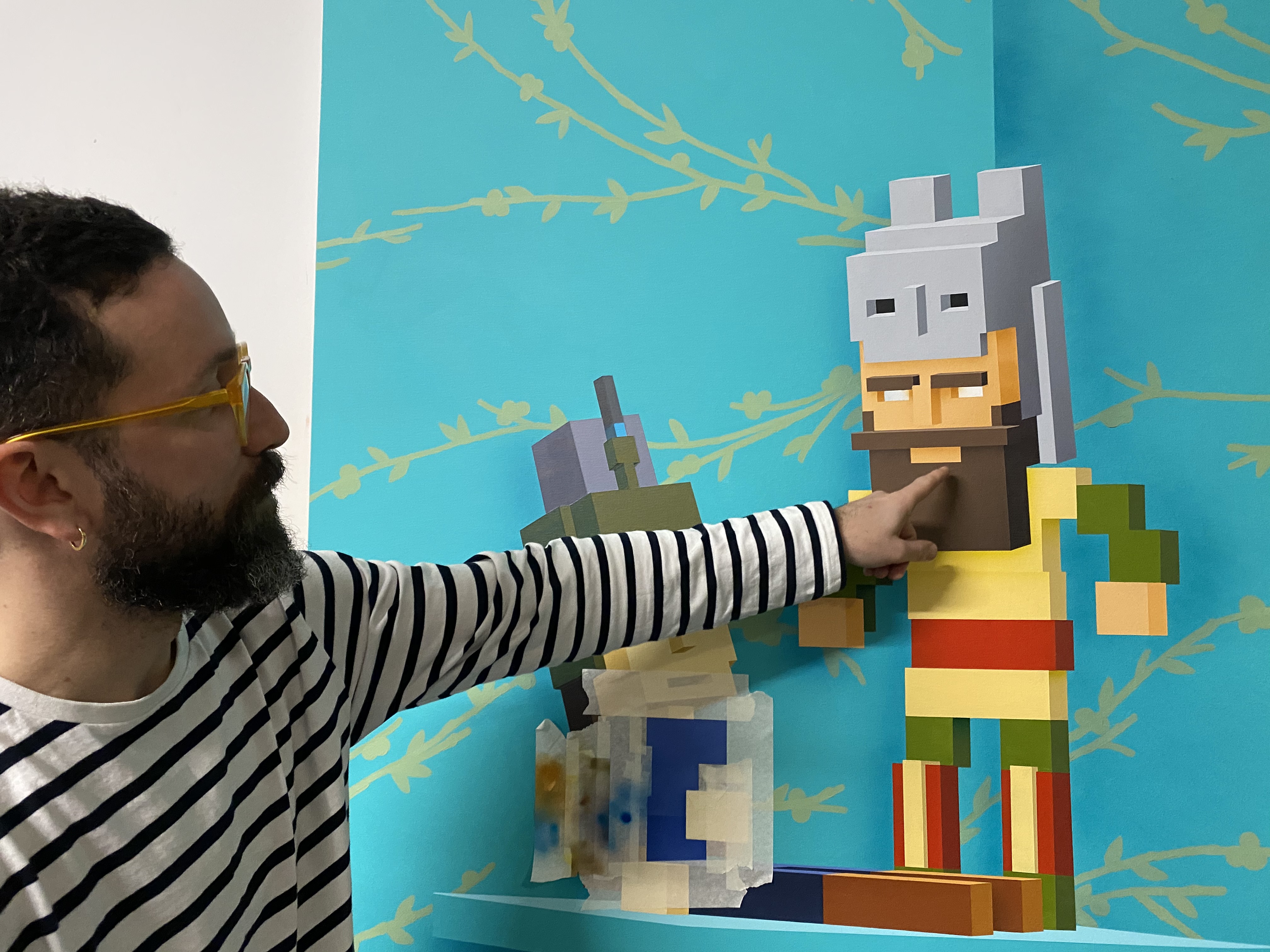
You’re playing the oud, the arbic lute. Is music another loophole in your constant urge to break-out?
If I was on an isolated island in the middle of the ocean, music would be like the parrots in Chateaubriand’s book « Memoirs From Beyond the Tomb ». In this novel they continue repeating the dead language of the aborigines who have been exterminated by the invaders.

You’re work is regularly shown in Tehran at the Dastan Gallery. What’s your opinion about the contemporary art scene and the young artists in Iran today ?
Virginia Woolf once said,
“The big achievements among women novelists came with a change of attitude. They’re not angry any more, no claiming, no recrimination in their writing any more. We get closer, or have even already arrived, to the point where female authors aren’t affected or influenced anymore by exterior elements. They can entirely concentrate on their vision without being diverted from their goal. That’s why today the work of women novelists is so much more authentic and interesting than hundred or even fifty years ago.”
I think that the Iranian art scene, in and outside of Iran, is waiting for a big change. But changes can only be achieved when you look for it. This means also breaking out of traditionalism and avoiding fantasizing about the West.
Is there a quote that guides you through life ?
My father often used to repeat Berthold Brecht’s words,
“We often talk about the violence of the rivers that carries away everything, but we never talk about the violence on the riverbanks.”
Credits:
Portrait by Anahita Vessier
All other images by Sepand Danesh
Text: Anahita Vessier
Translation: Anahita Vessier
http://sepanddanesh.com
http://hubtopia.org
Share this post
